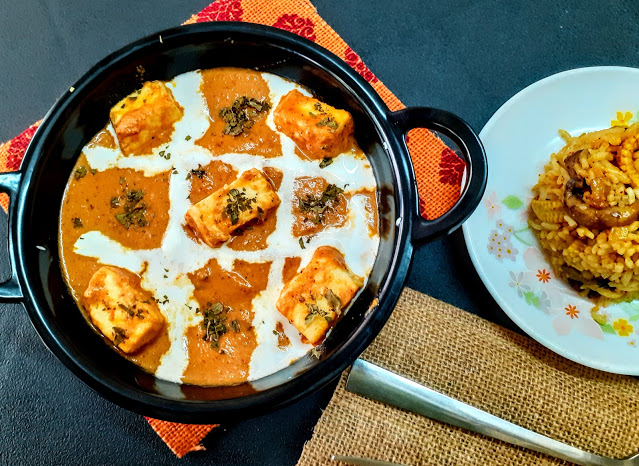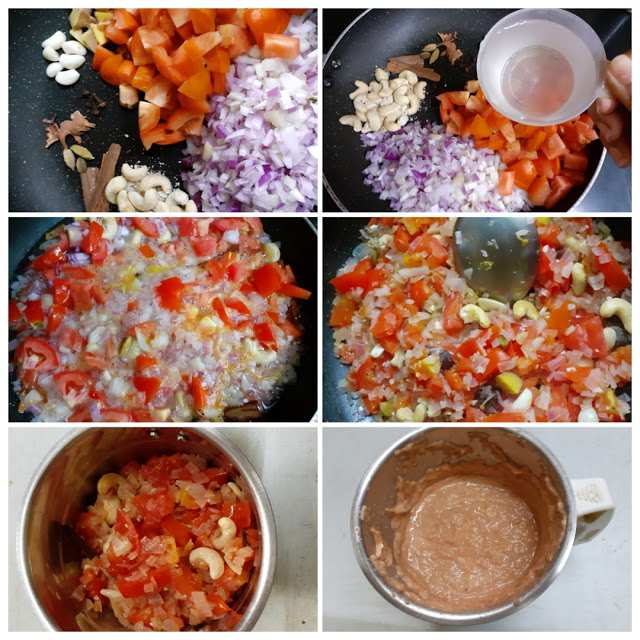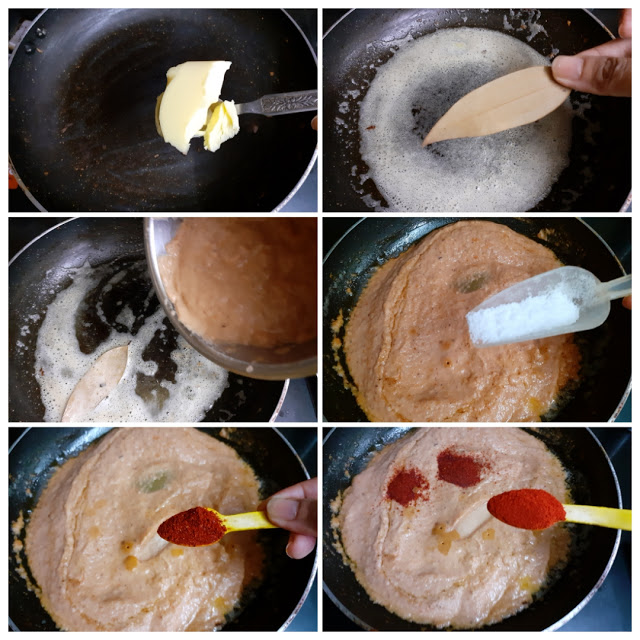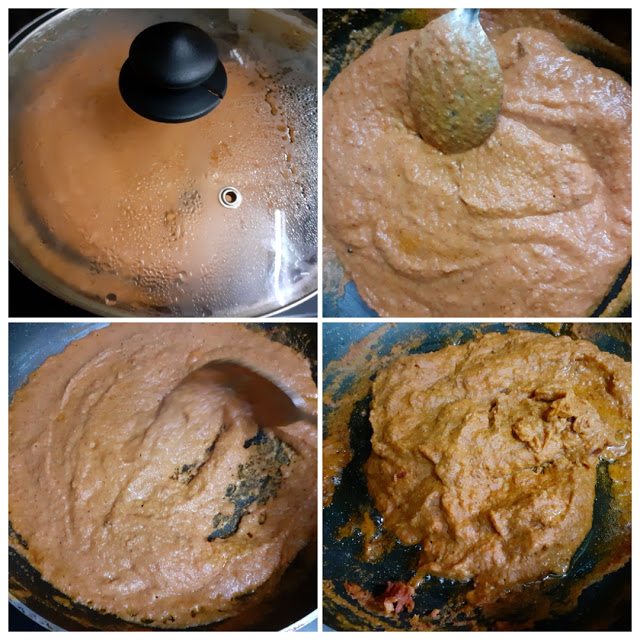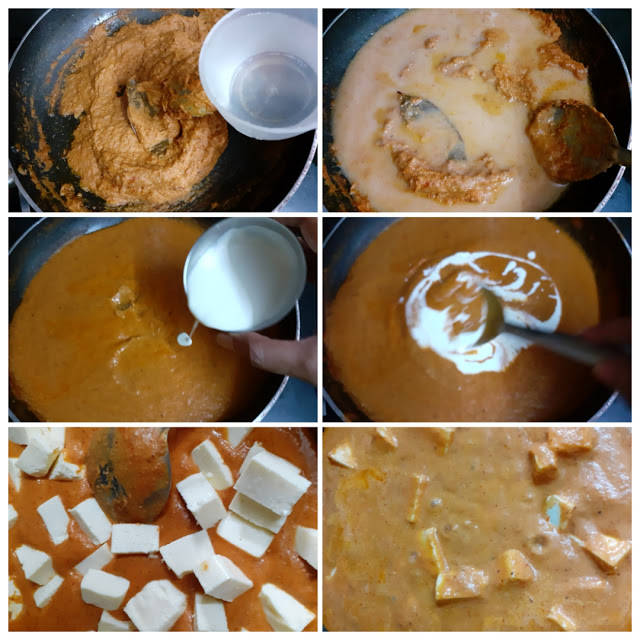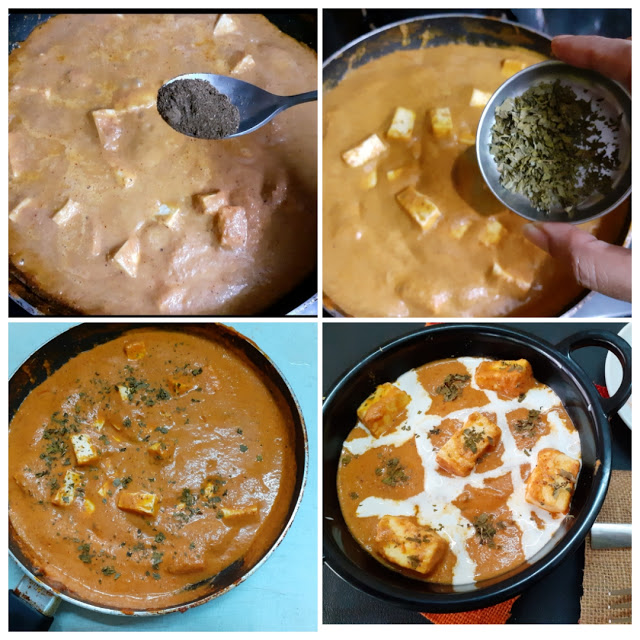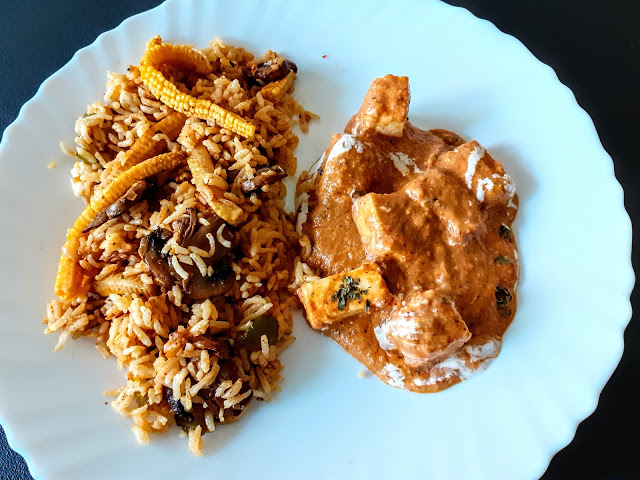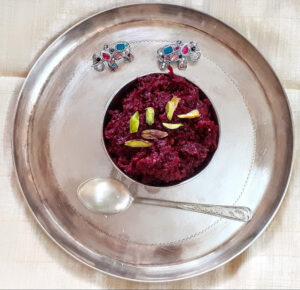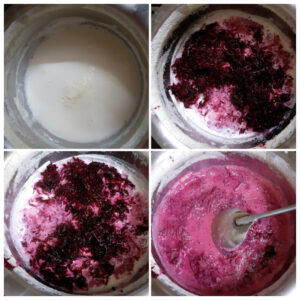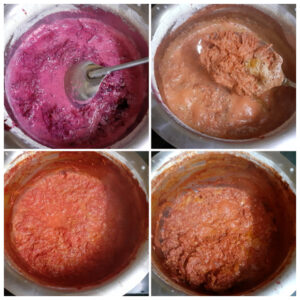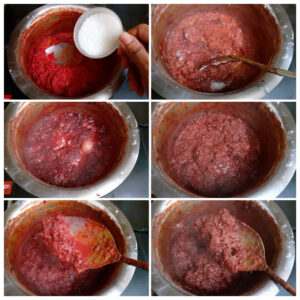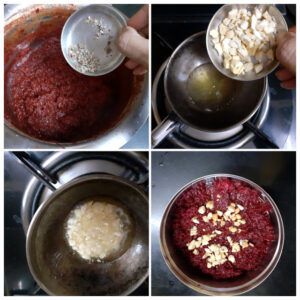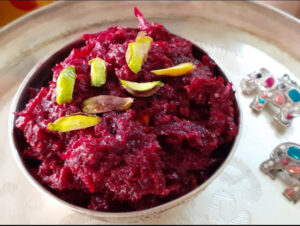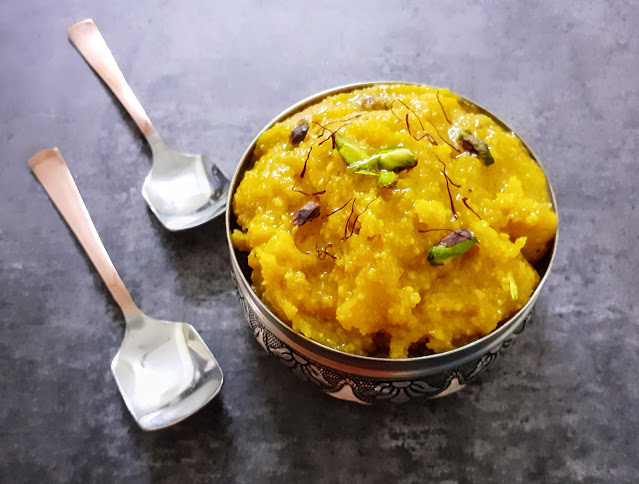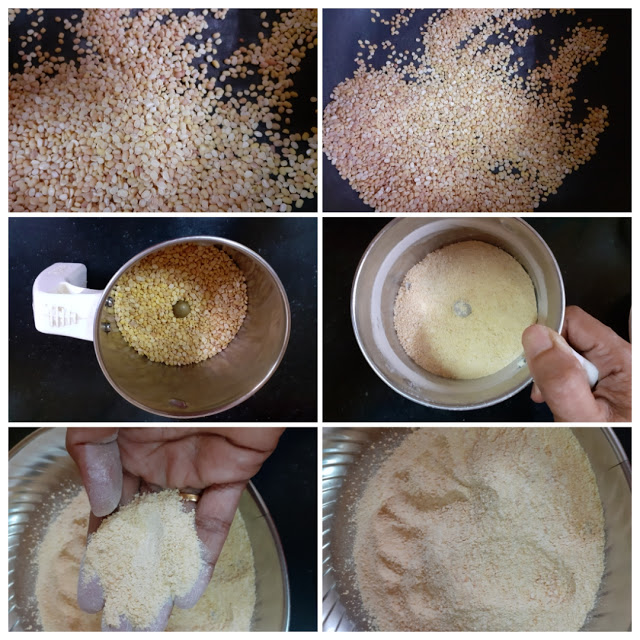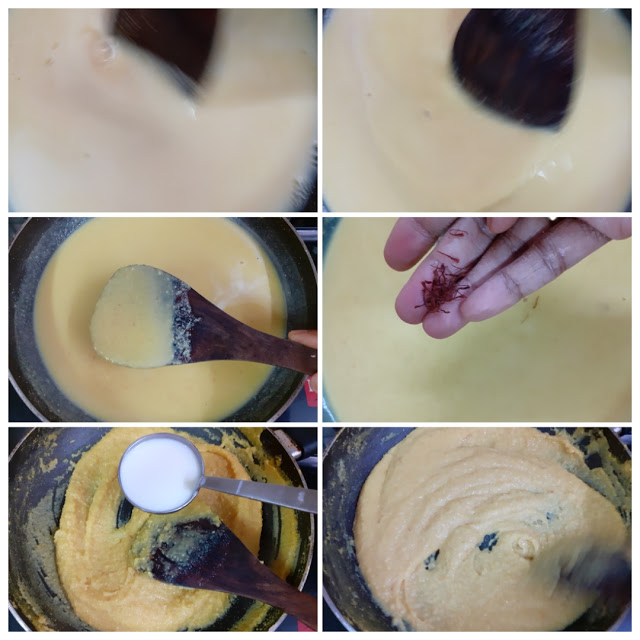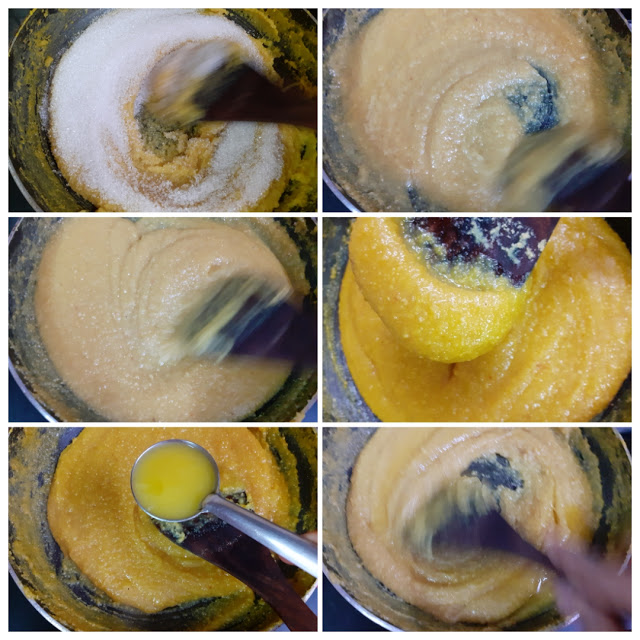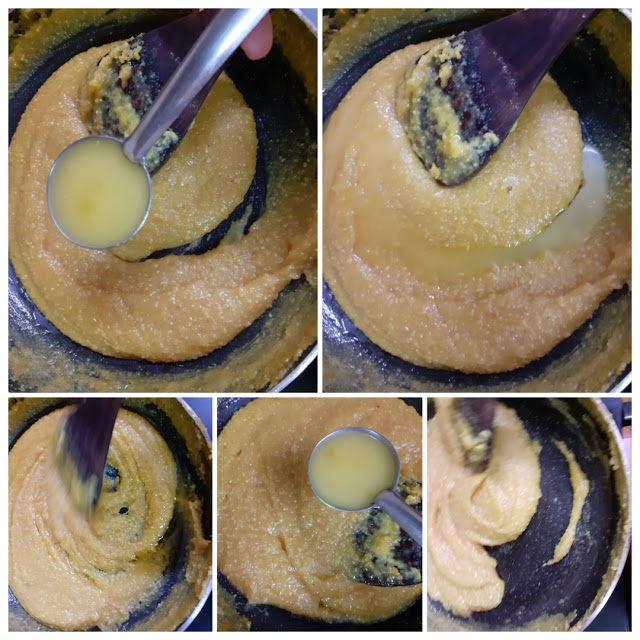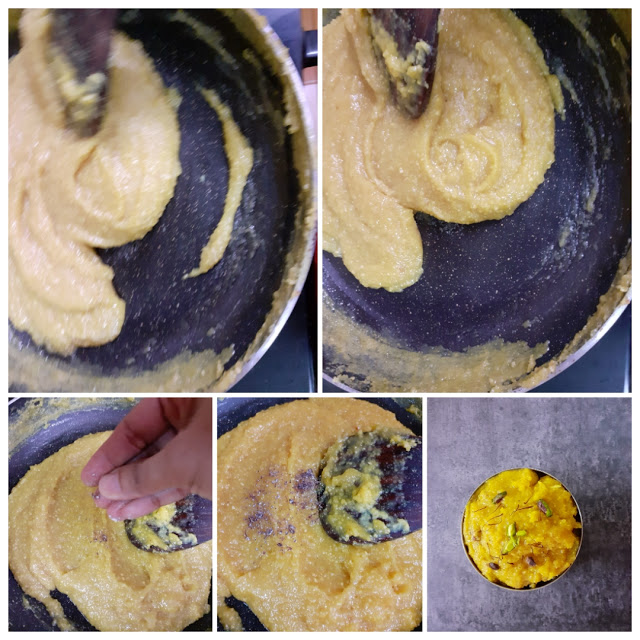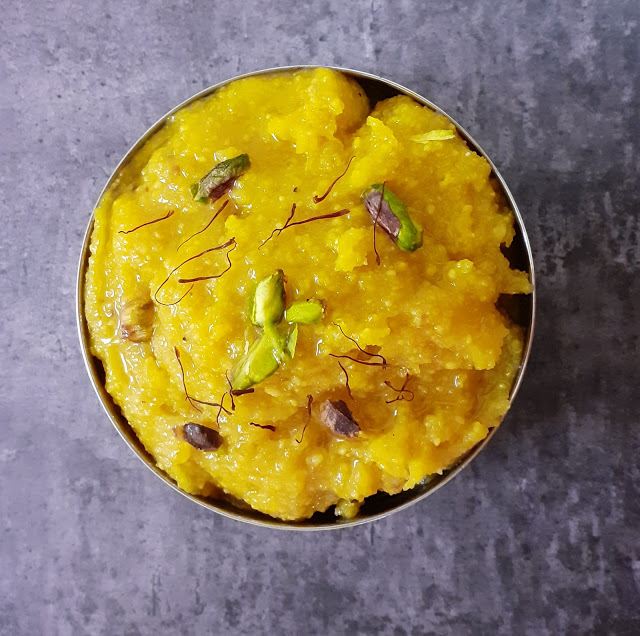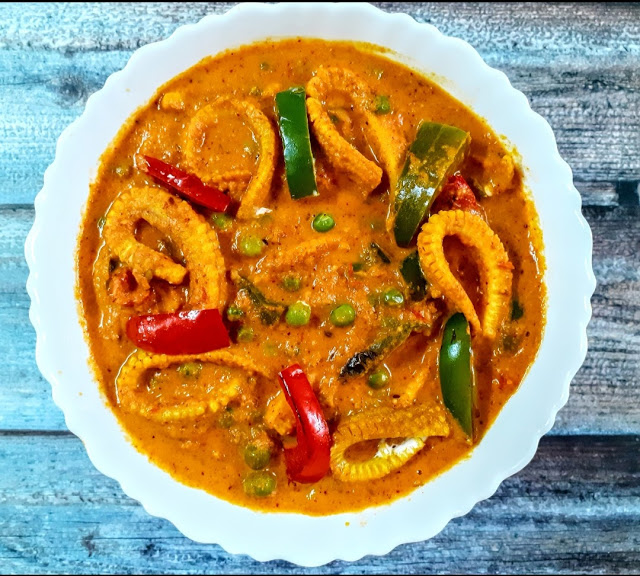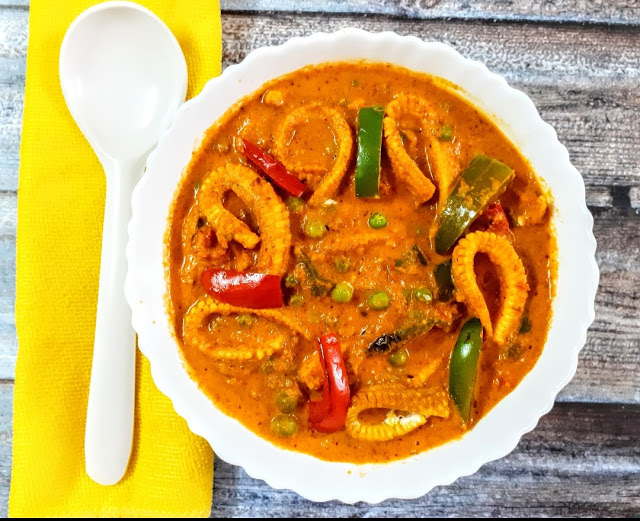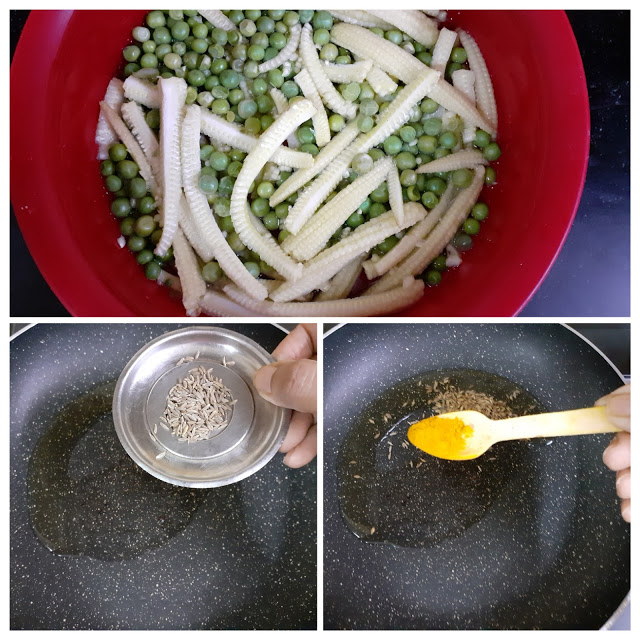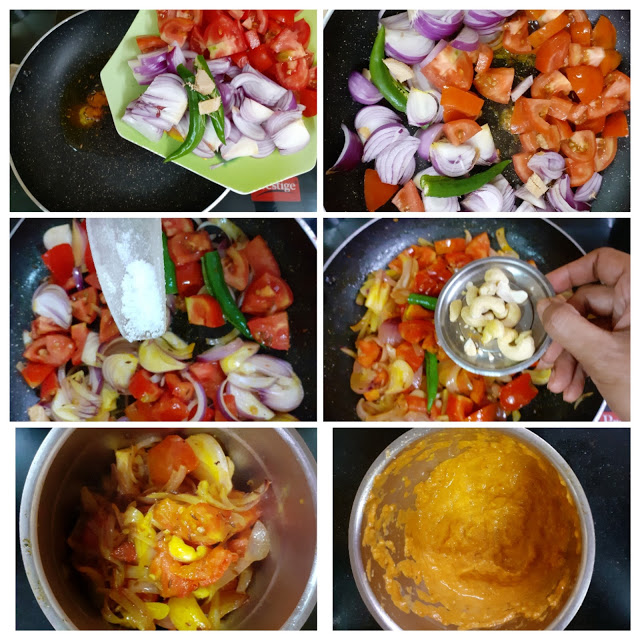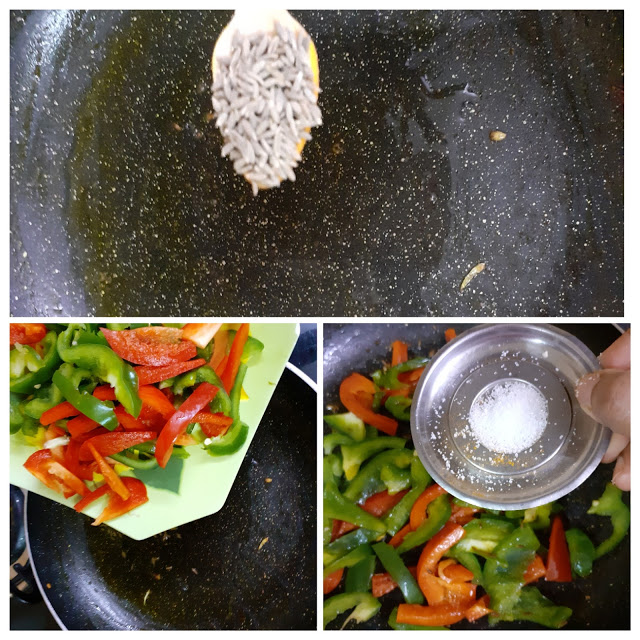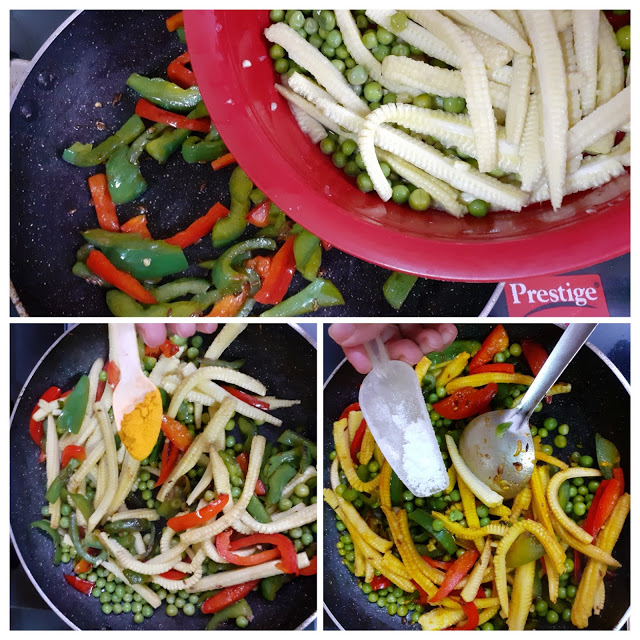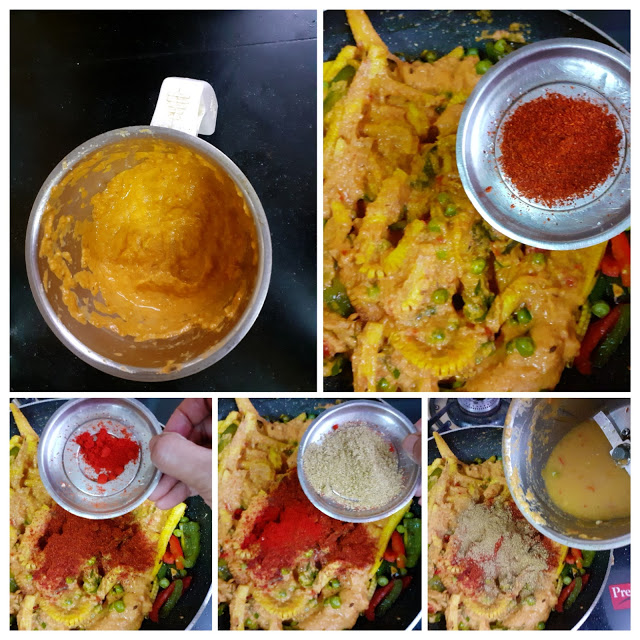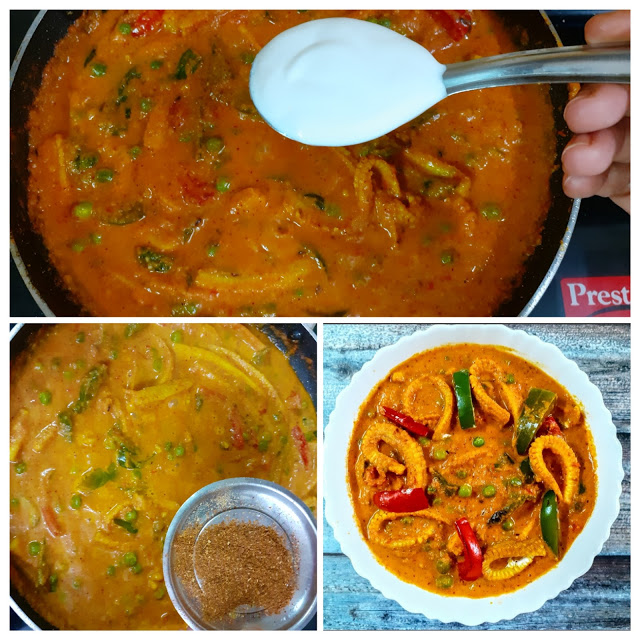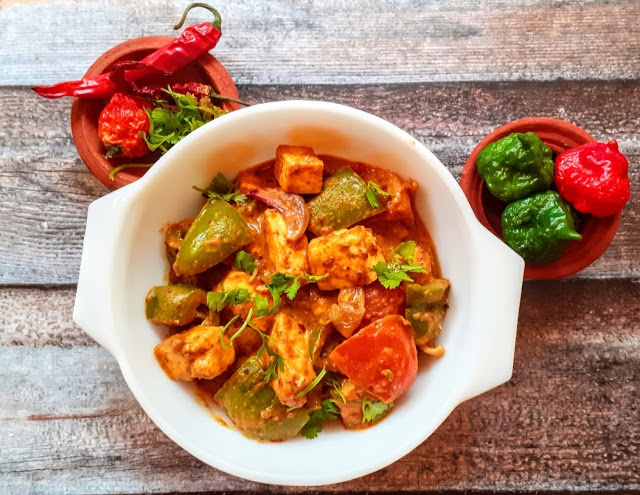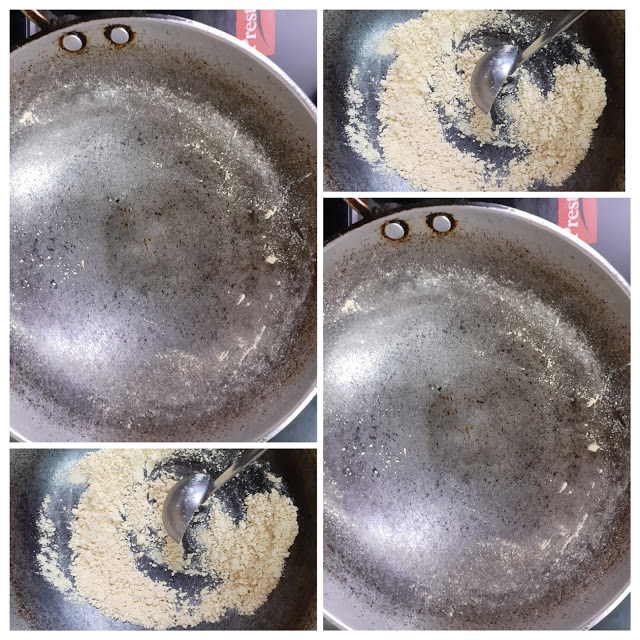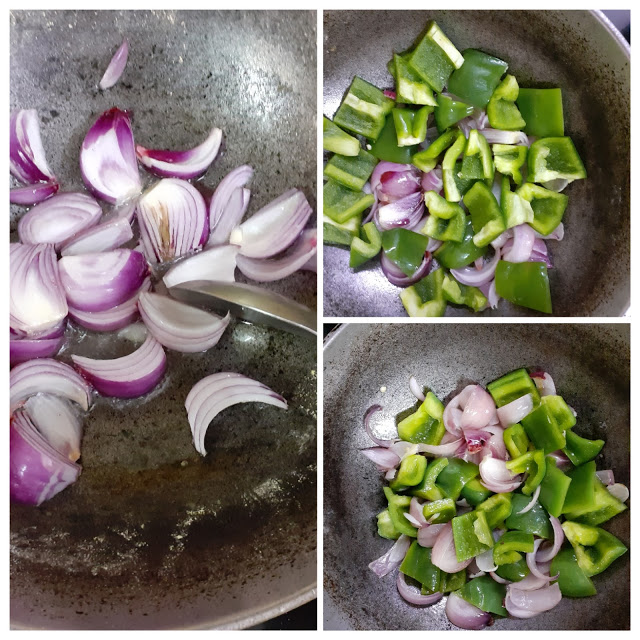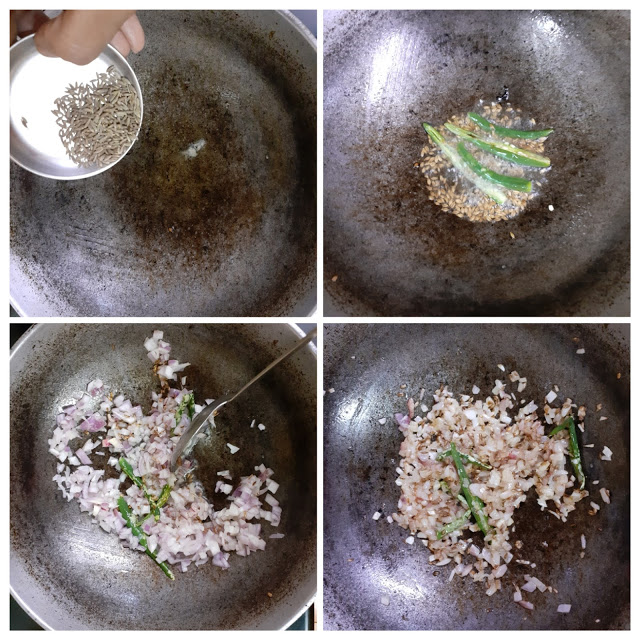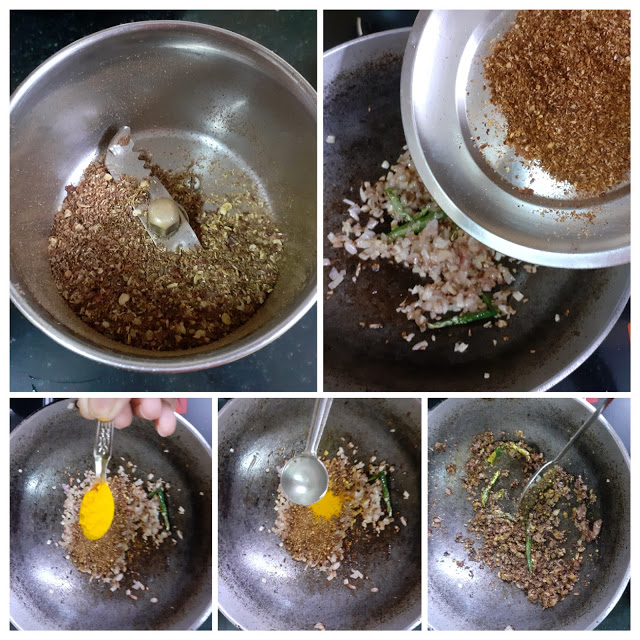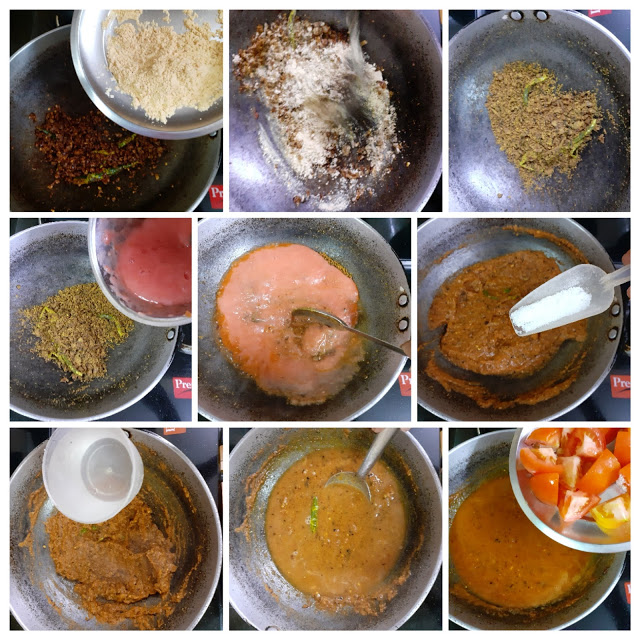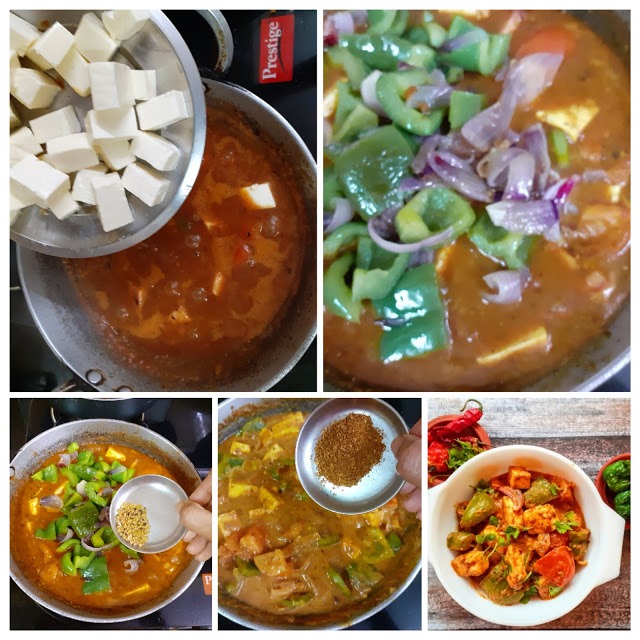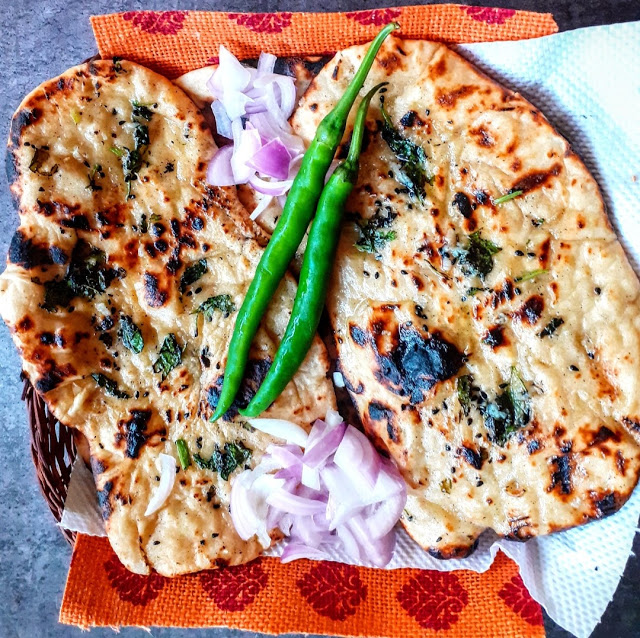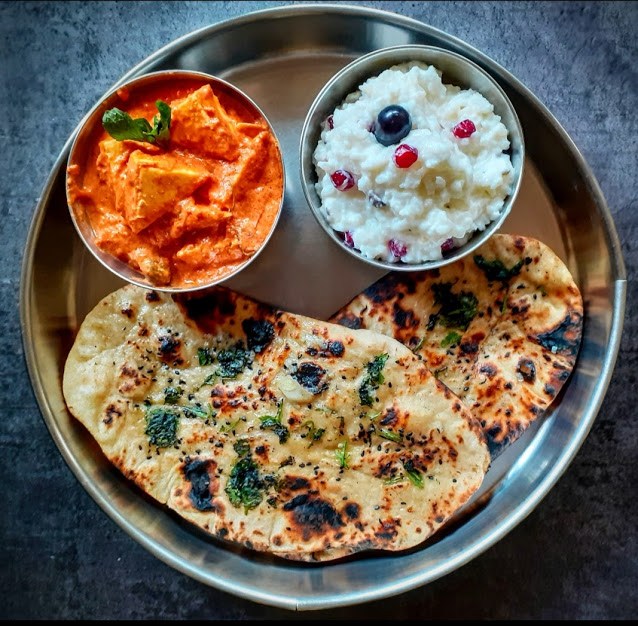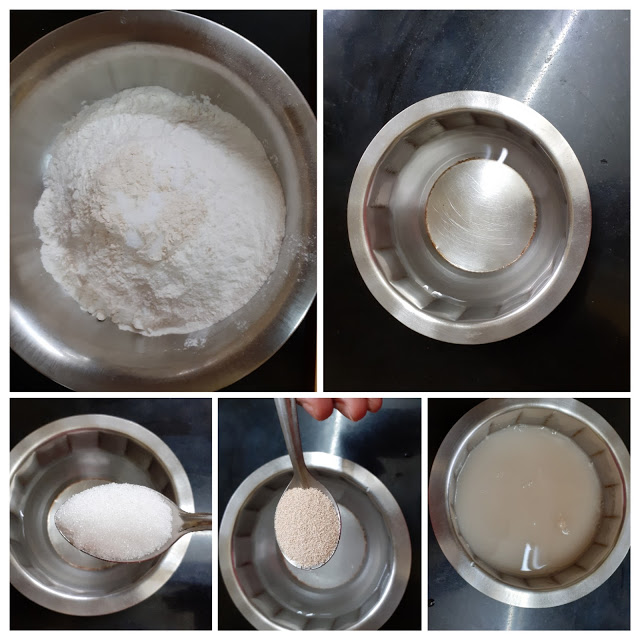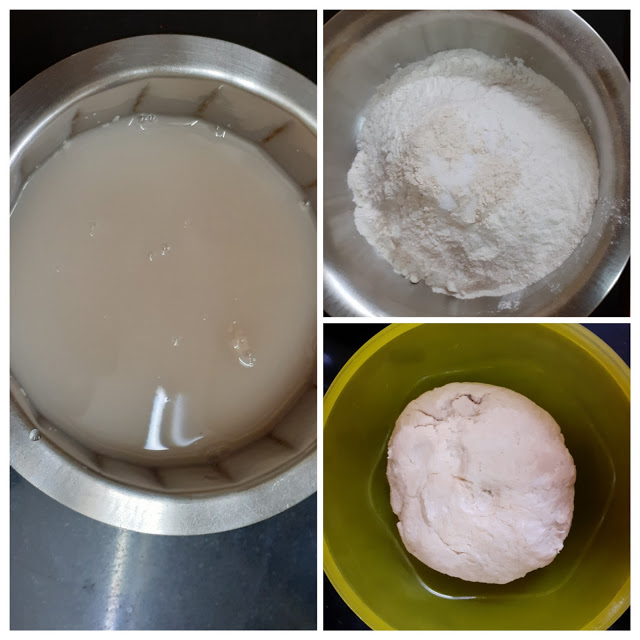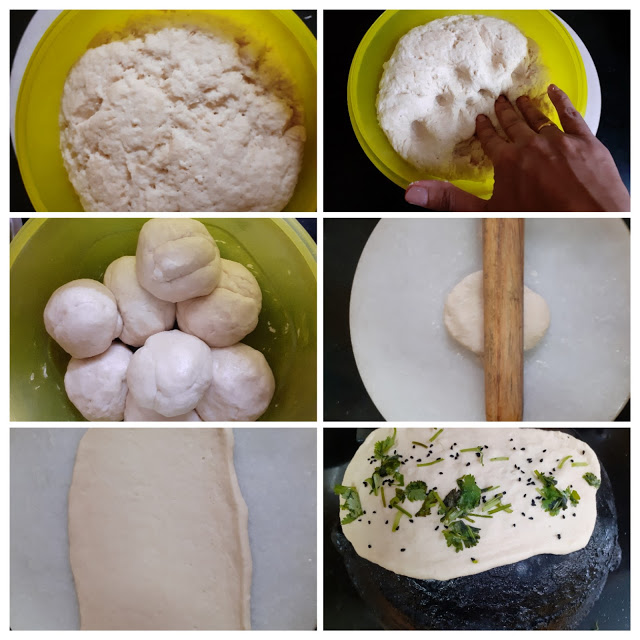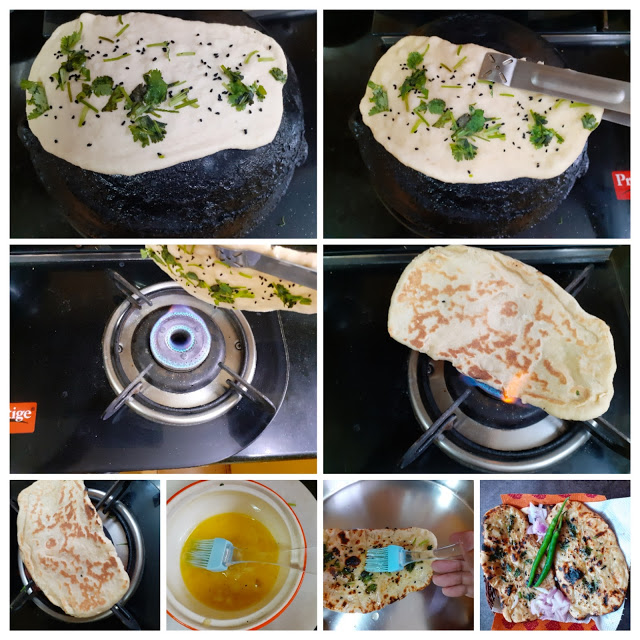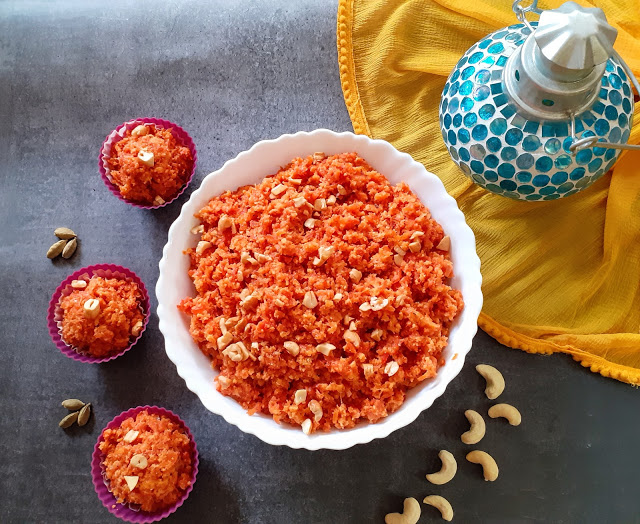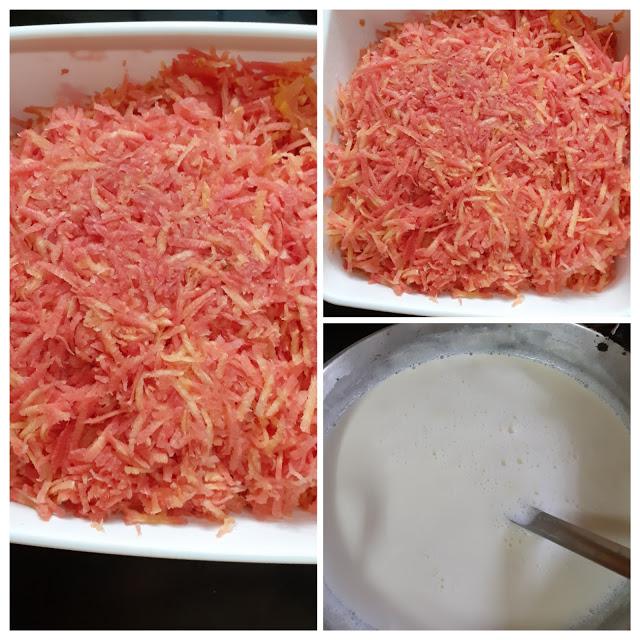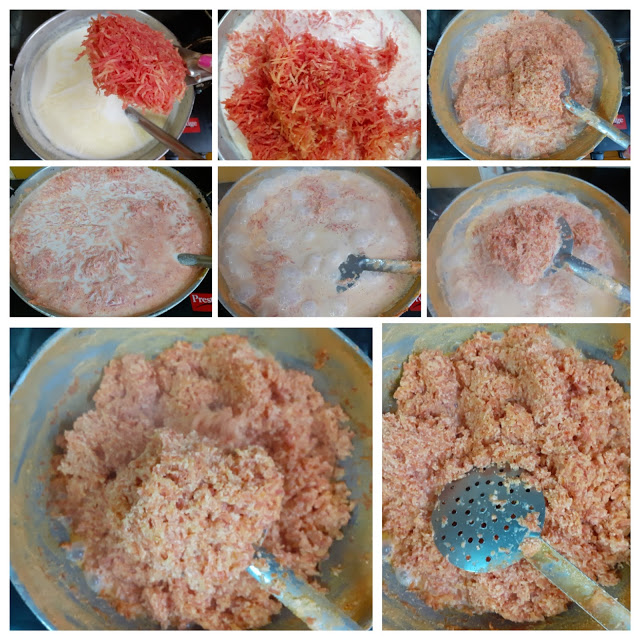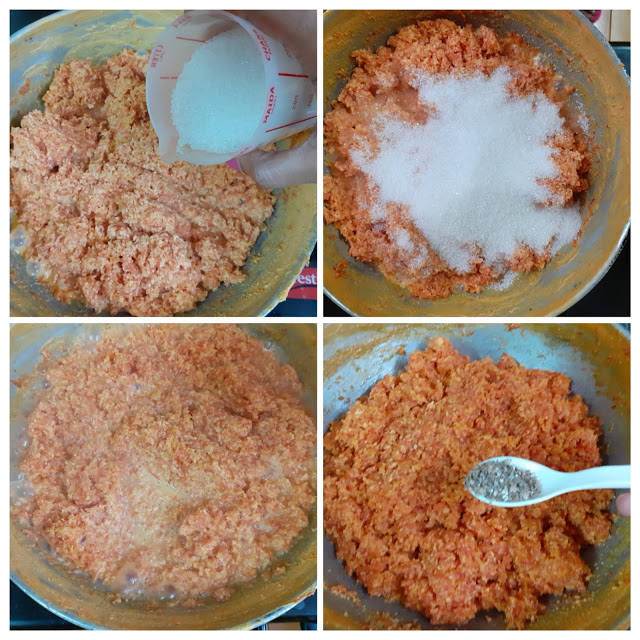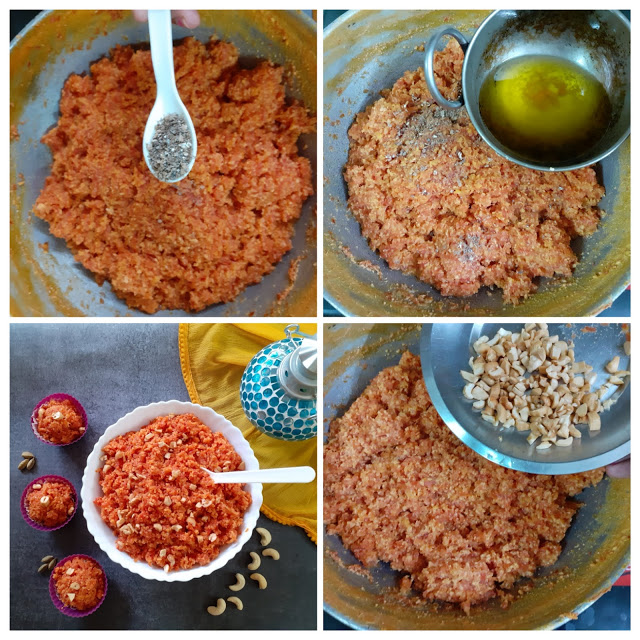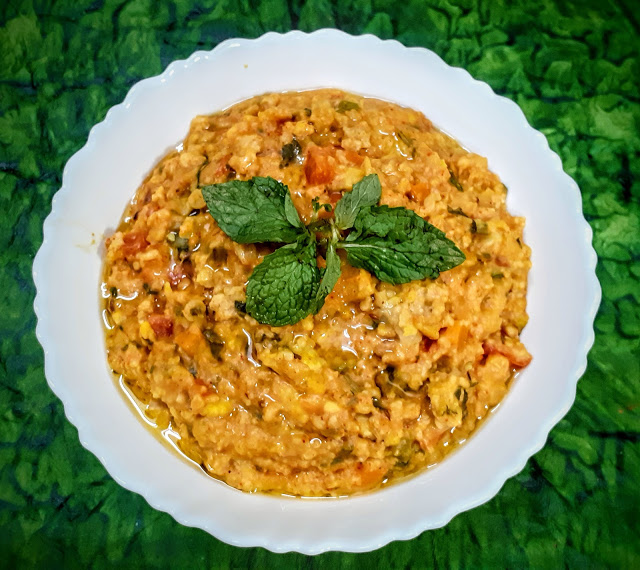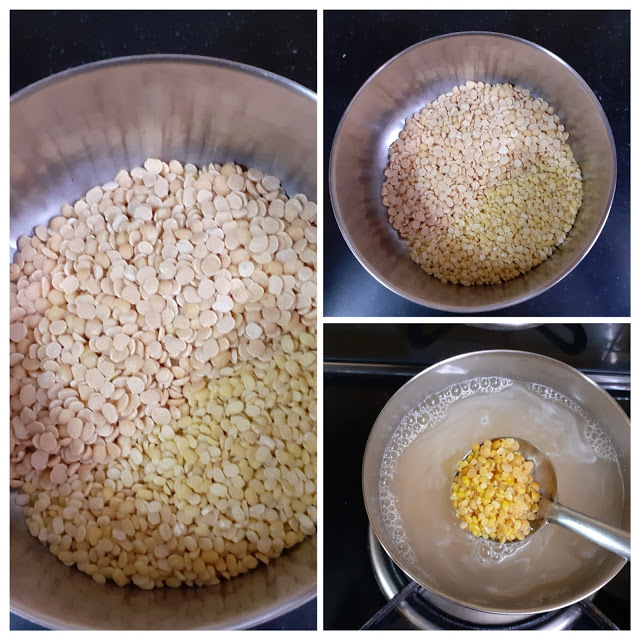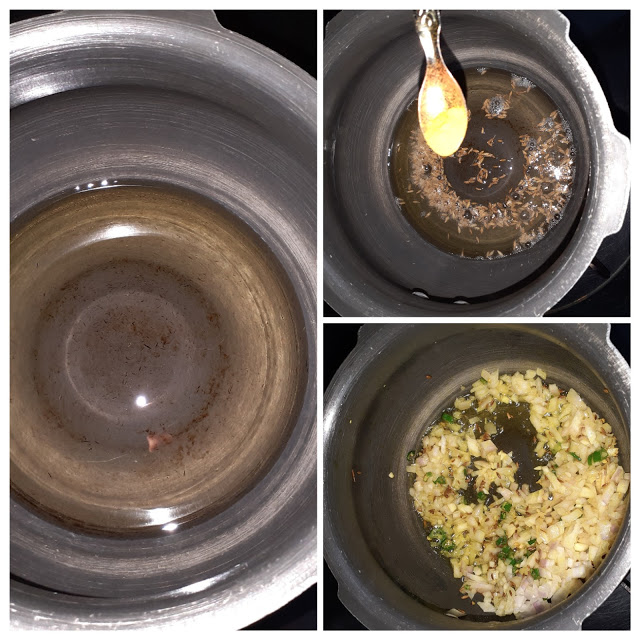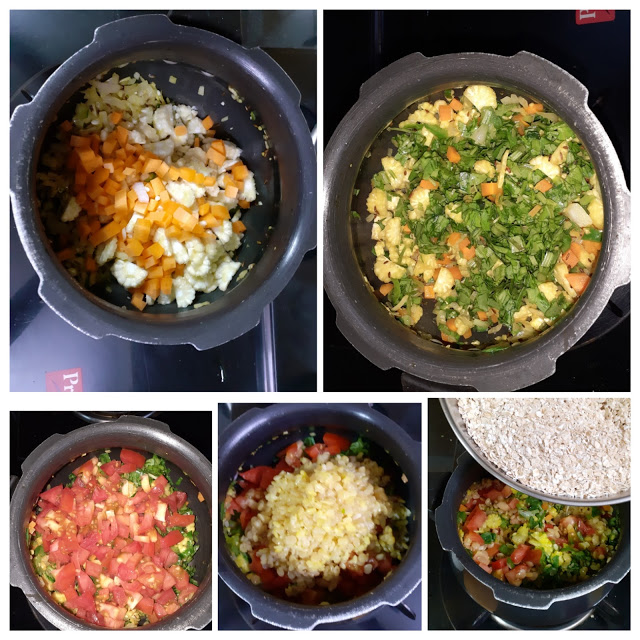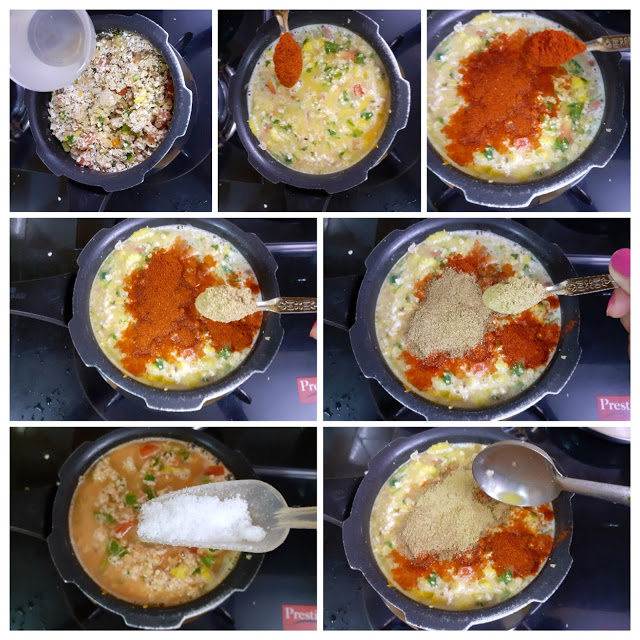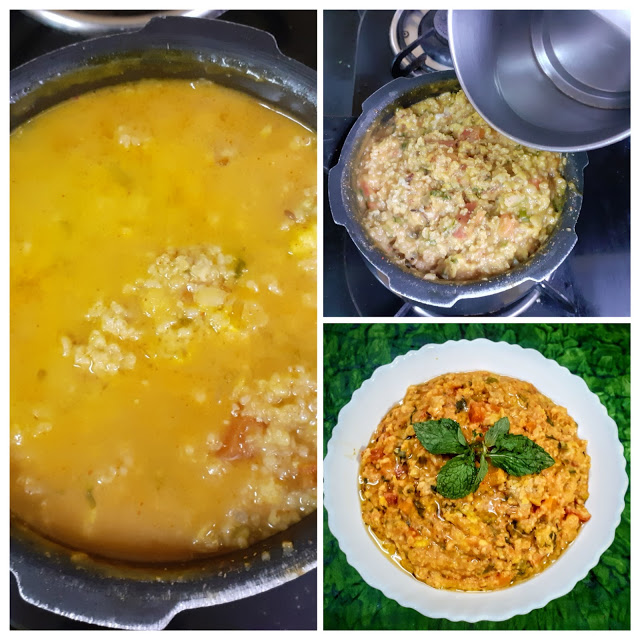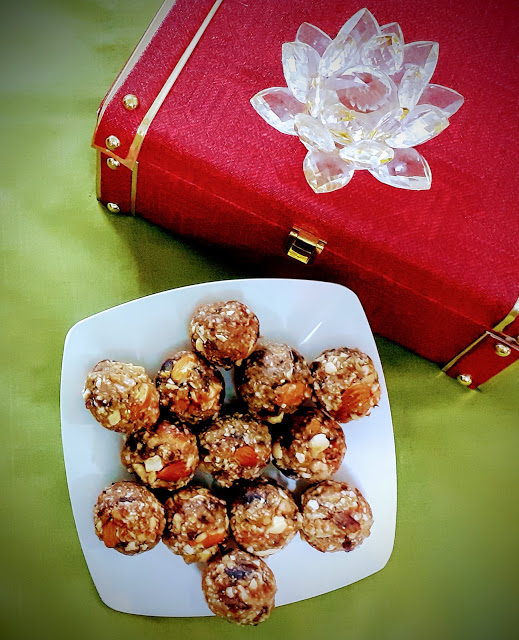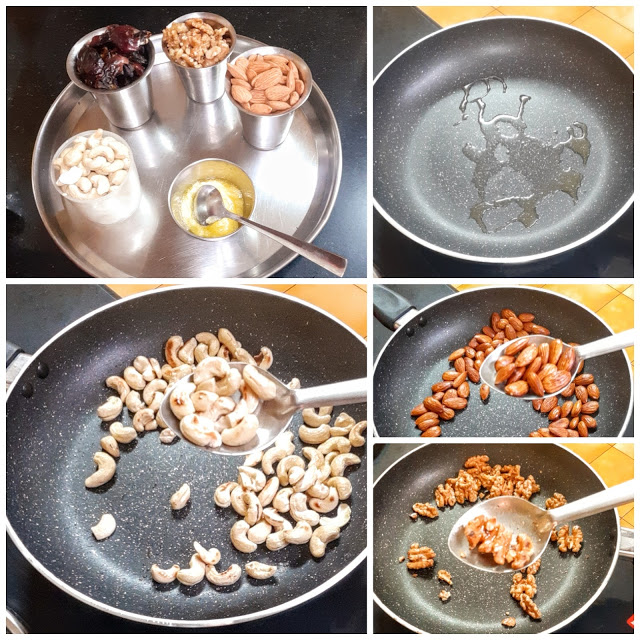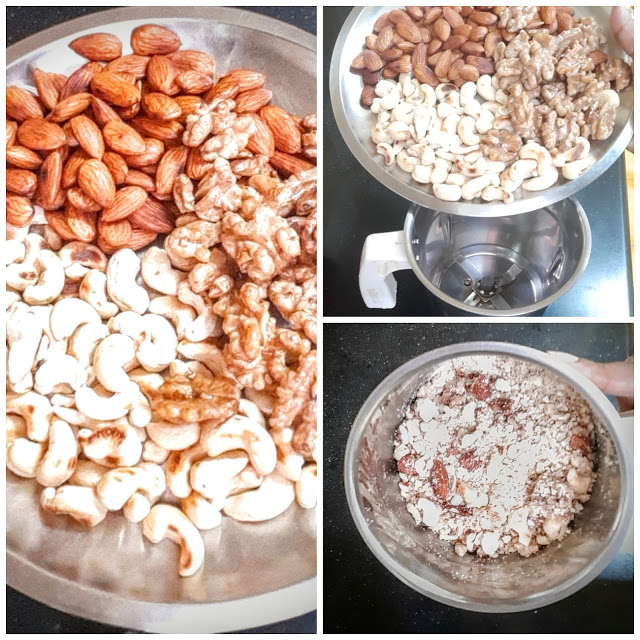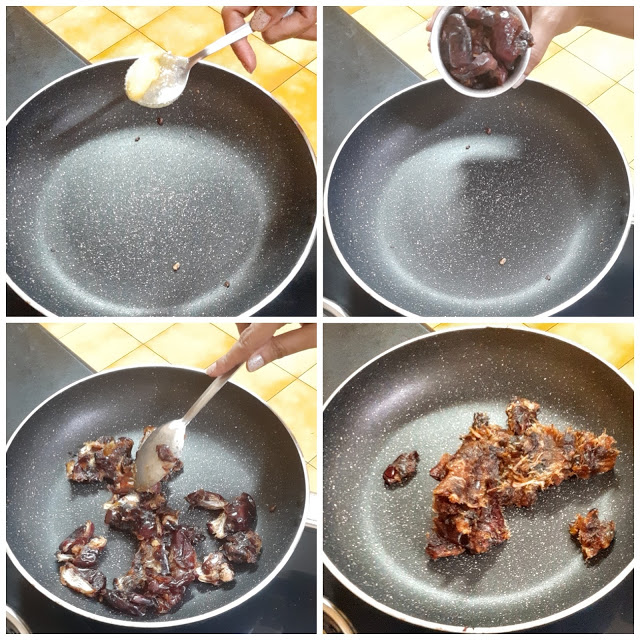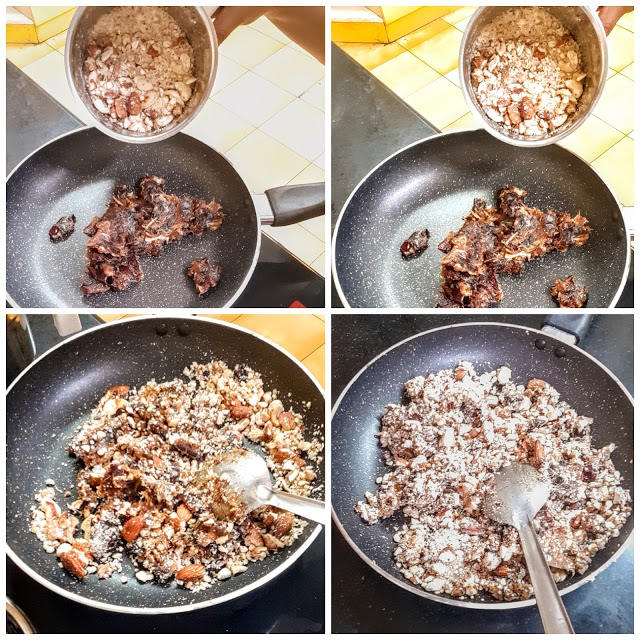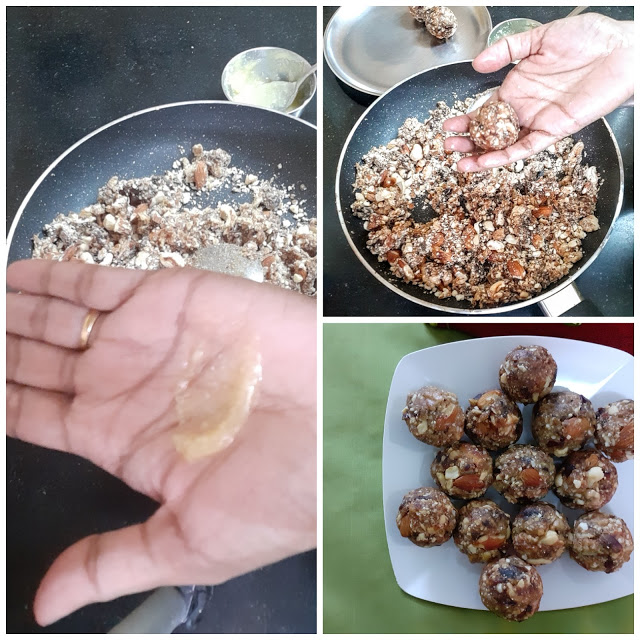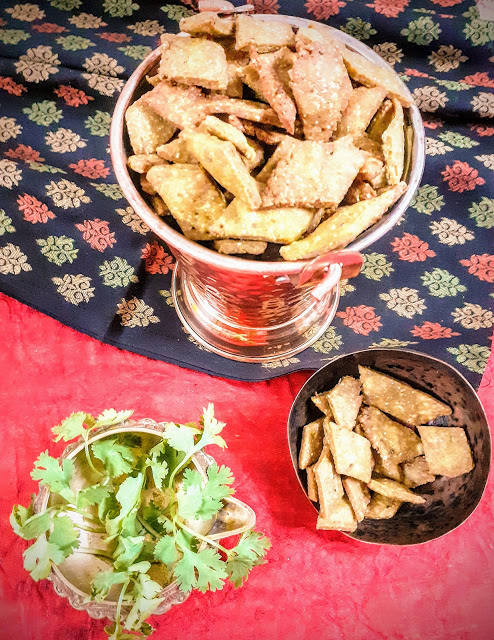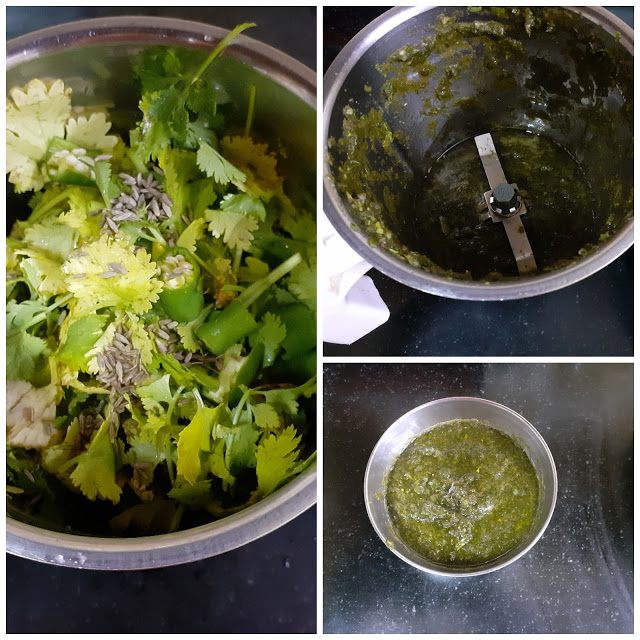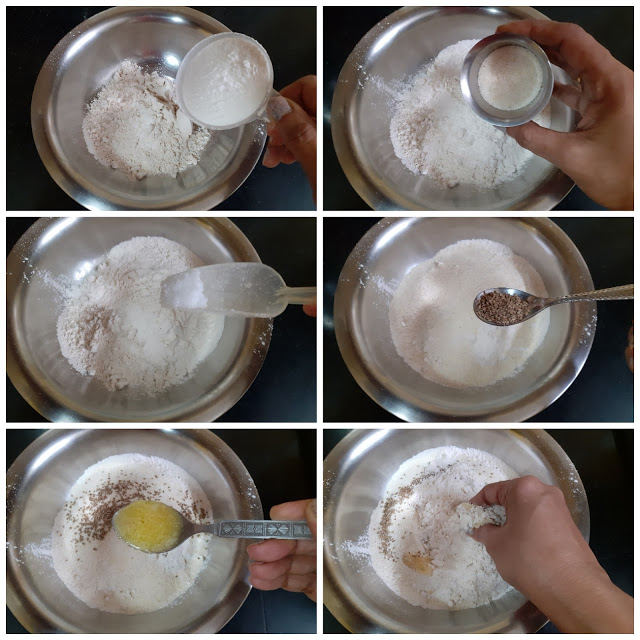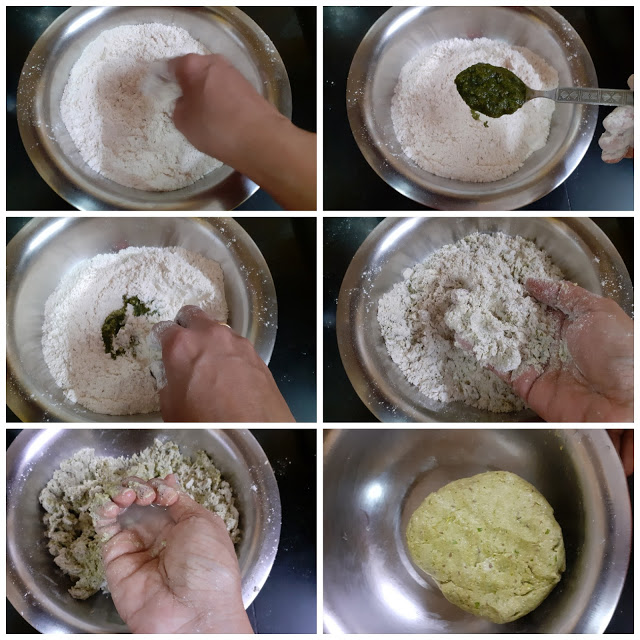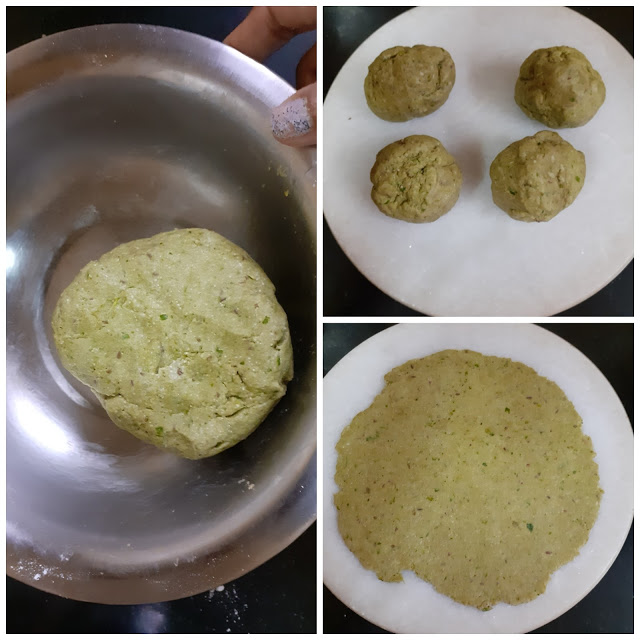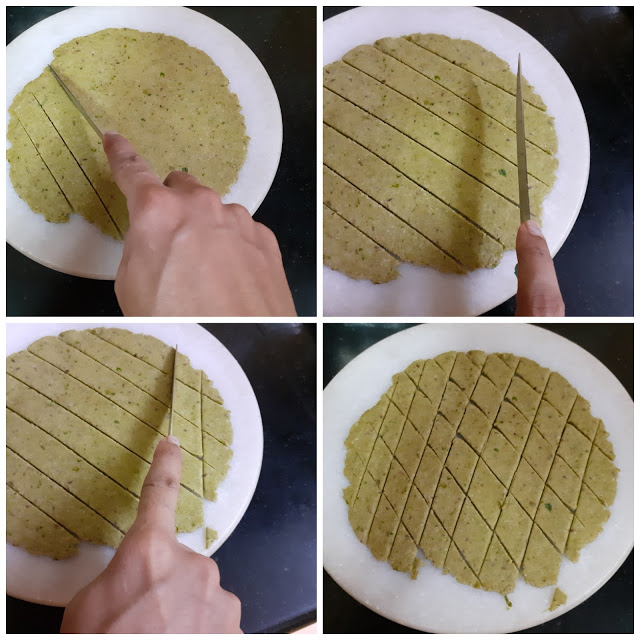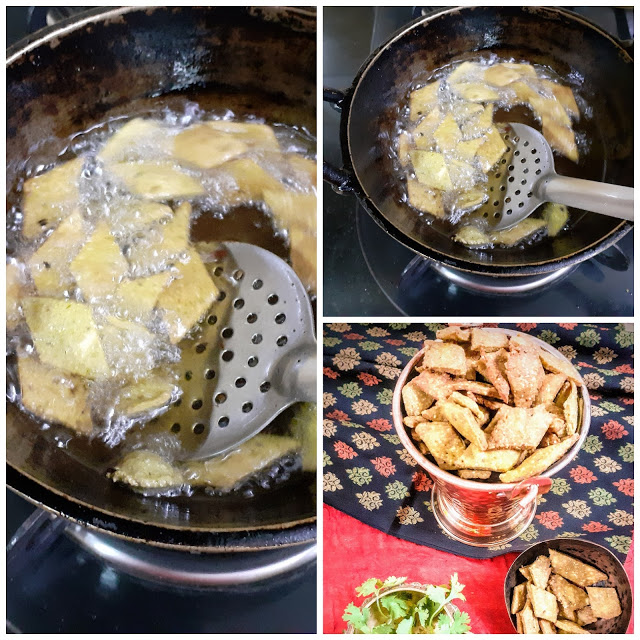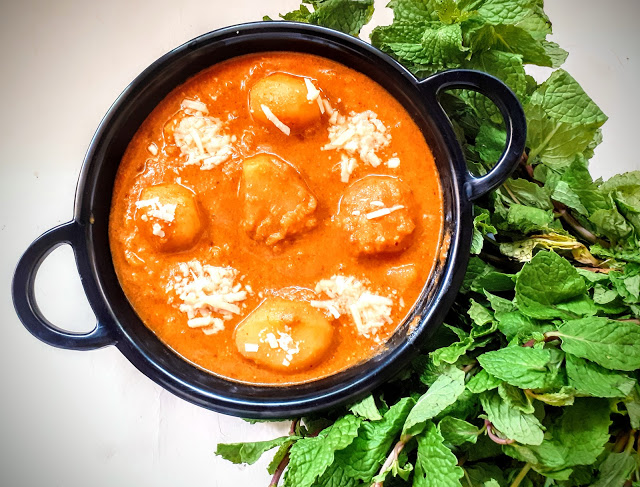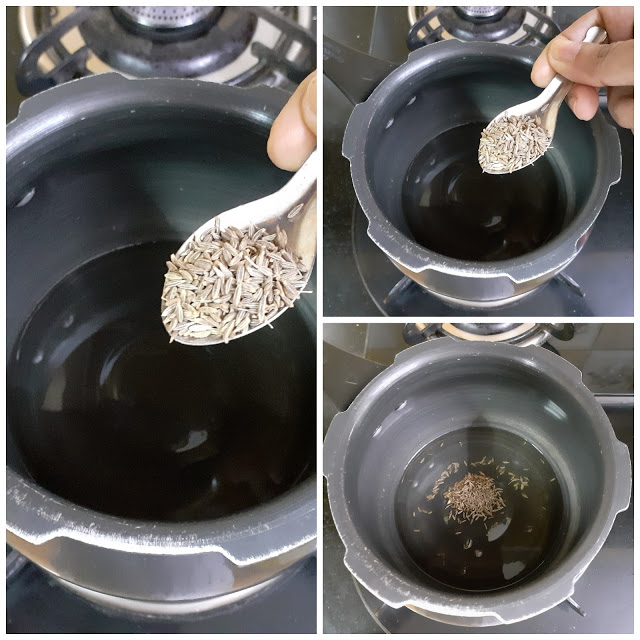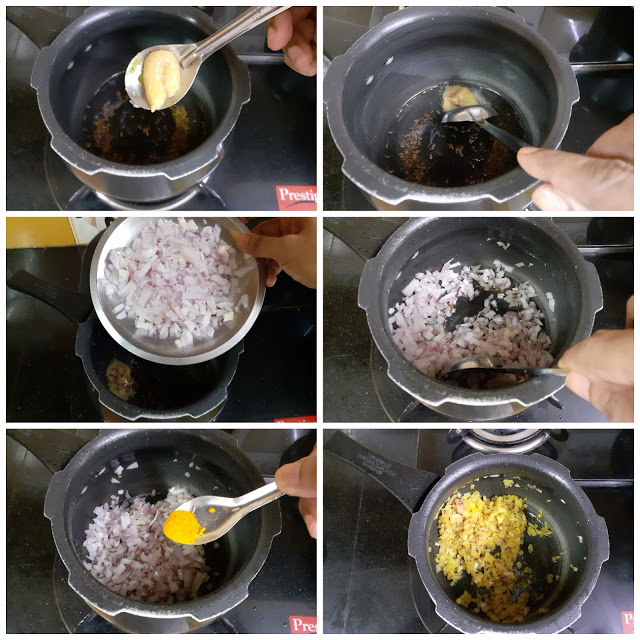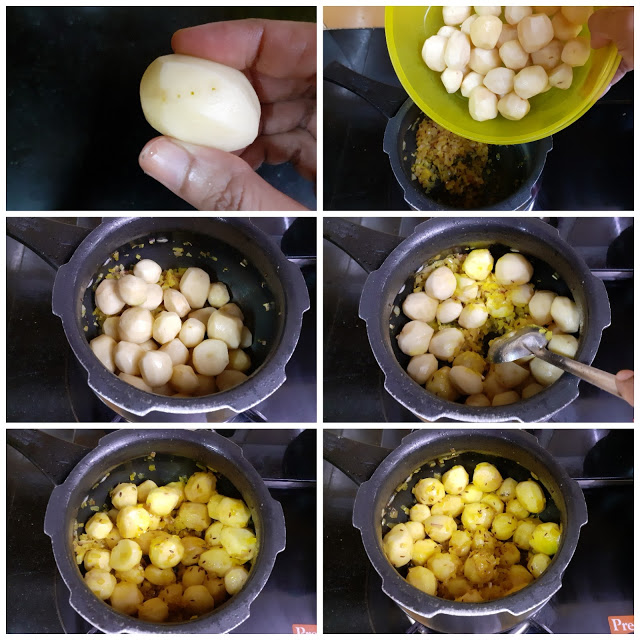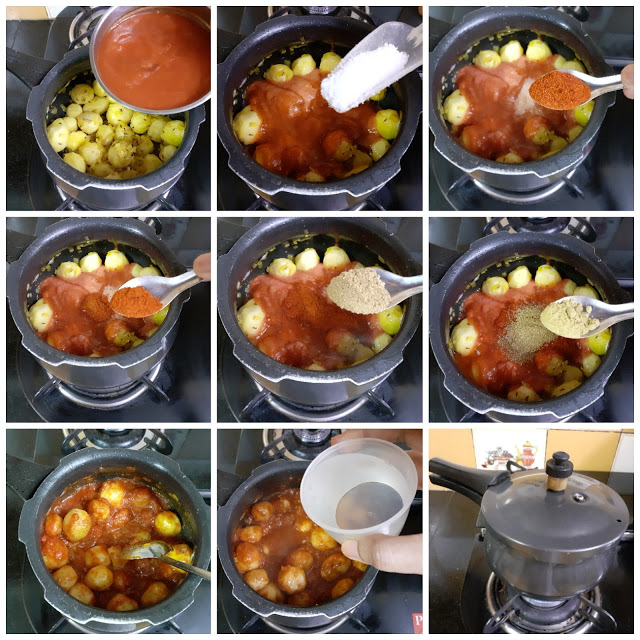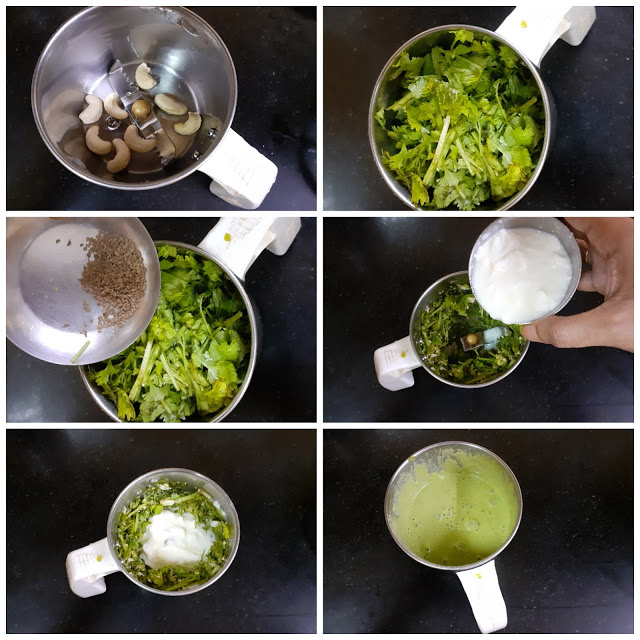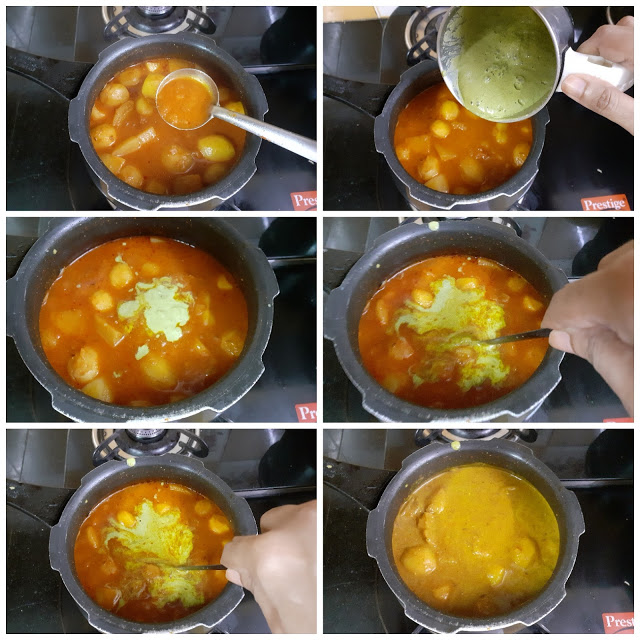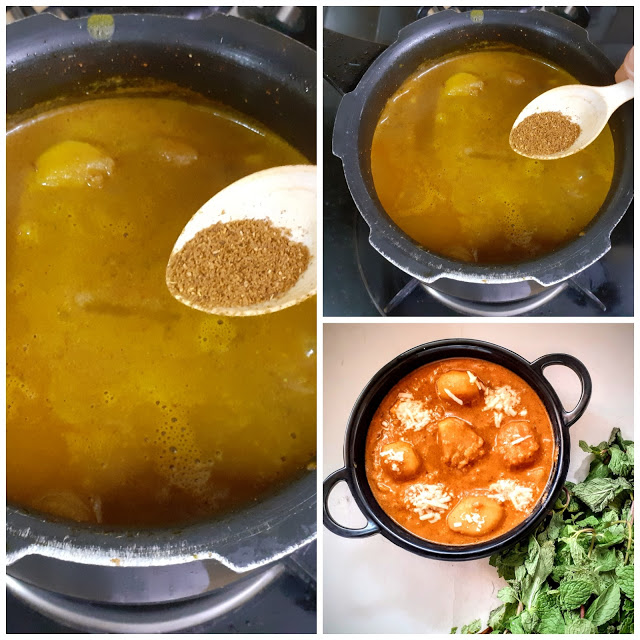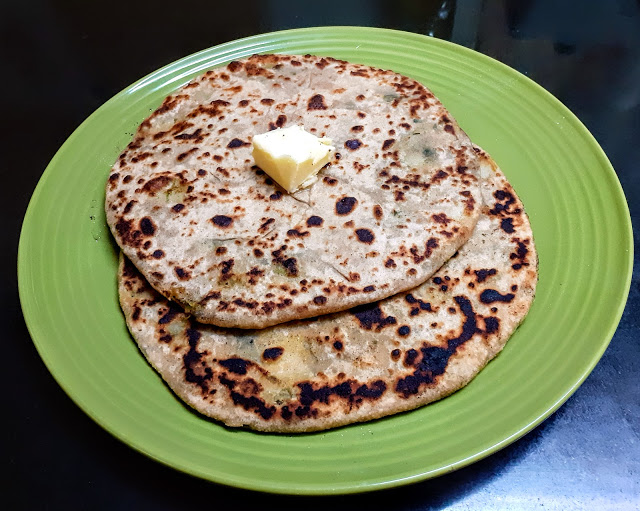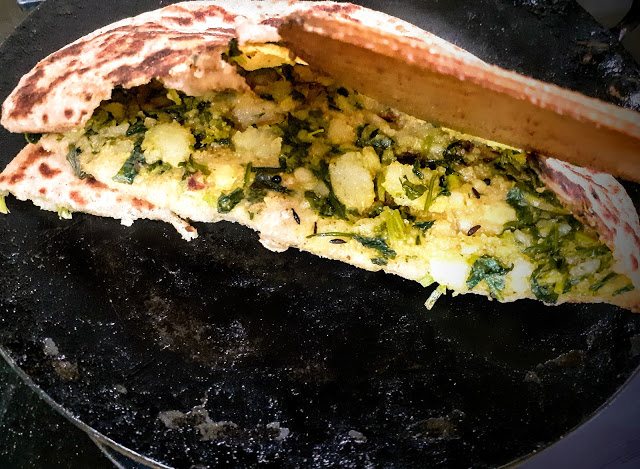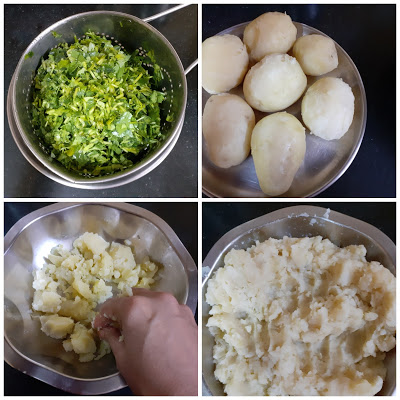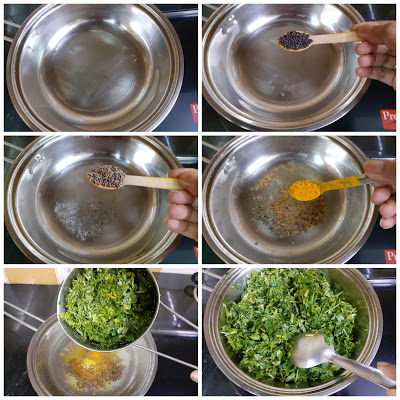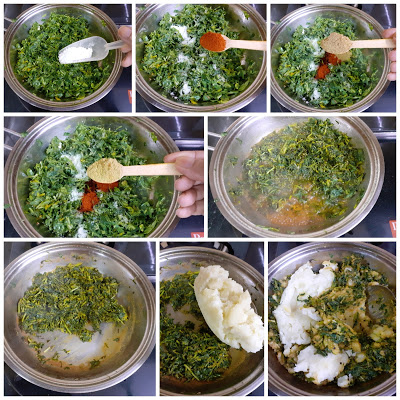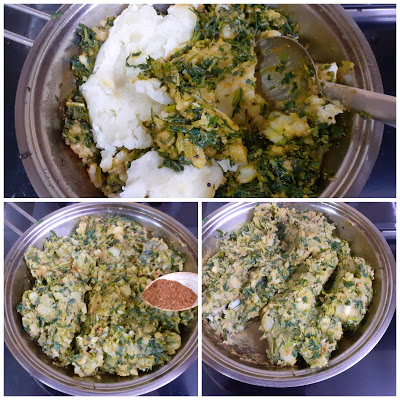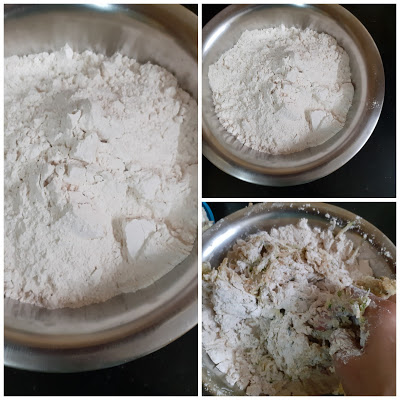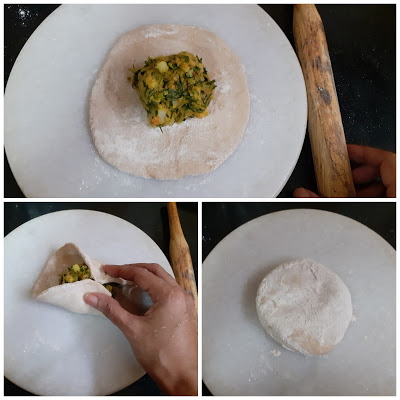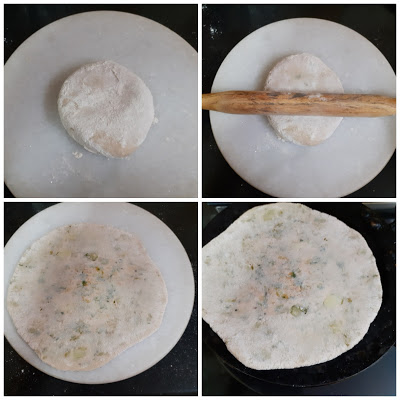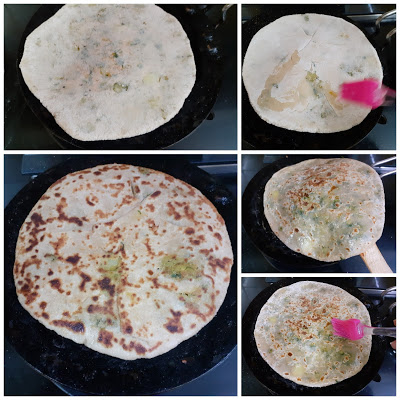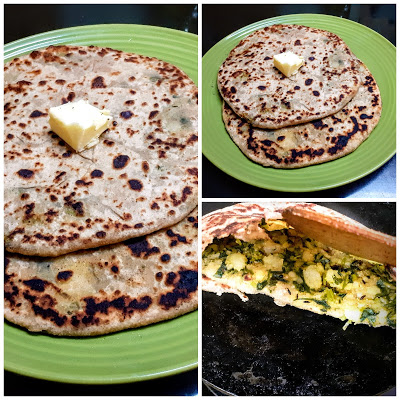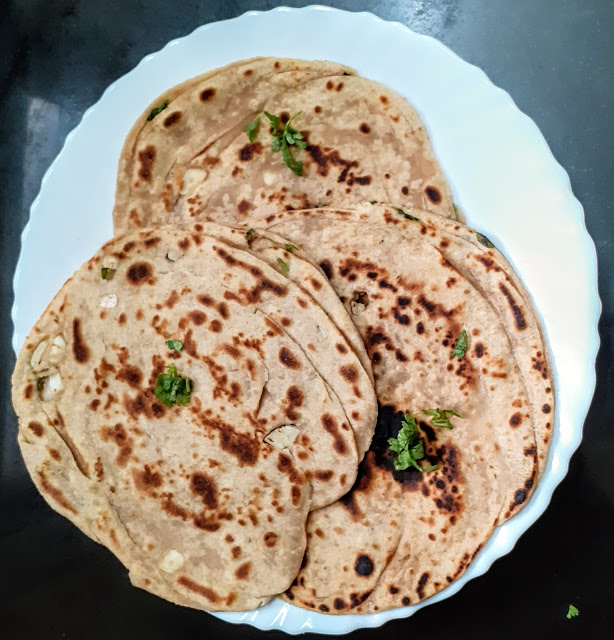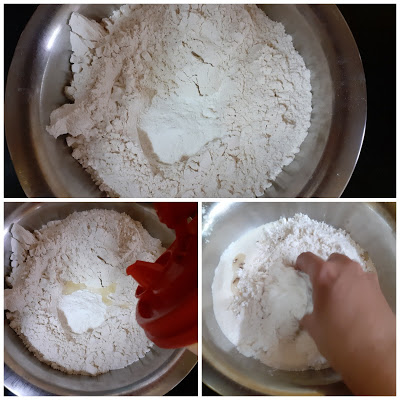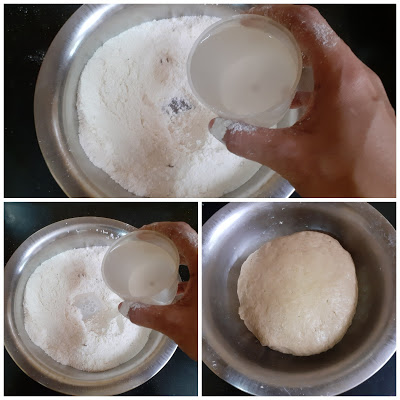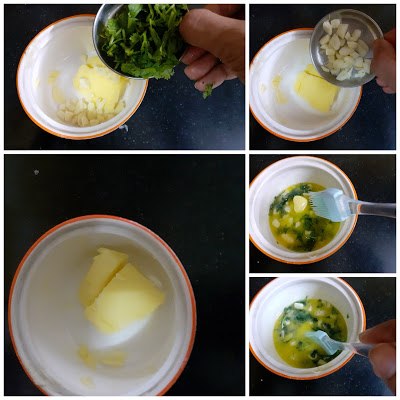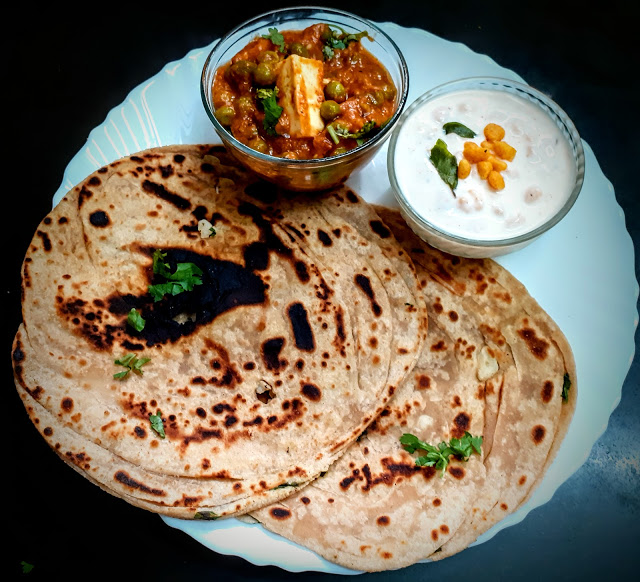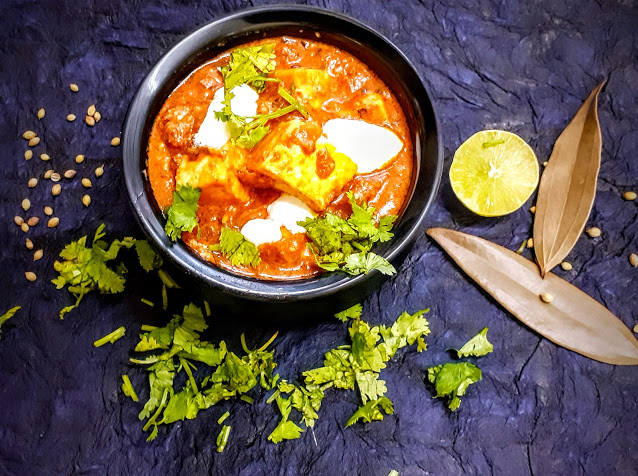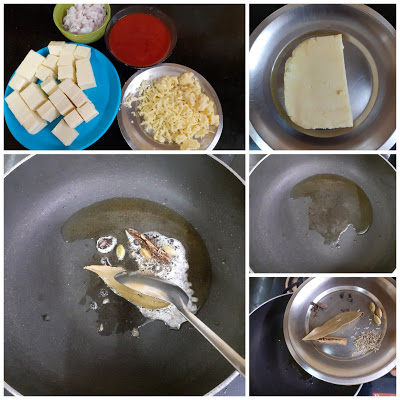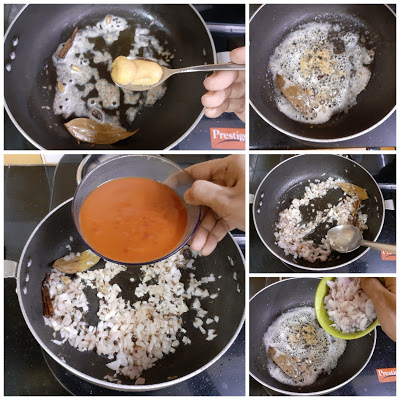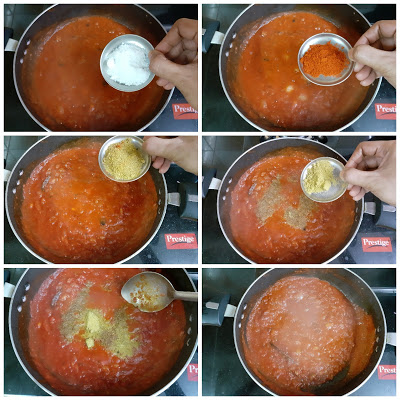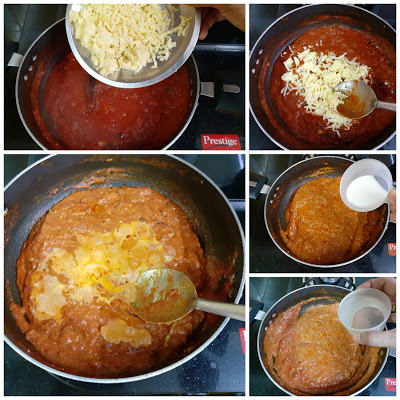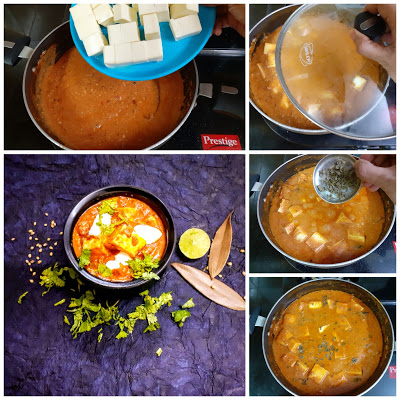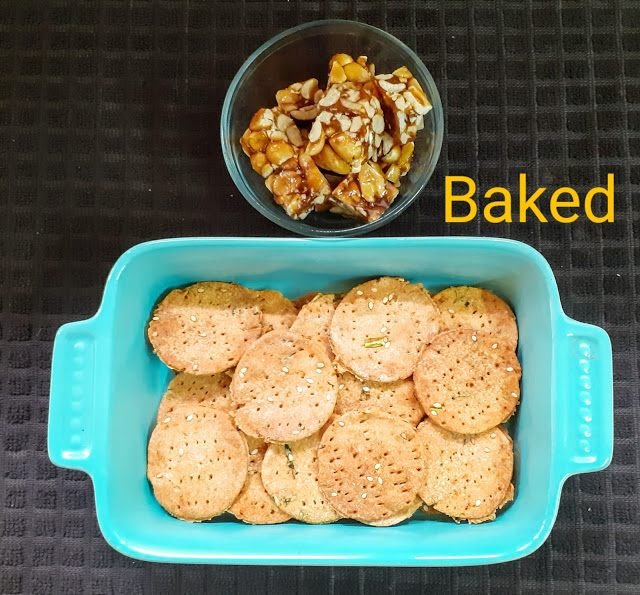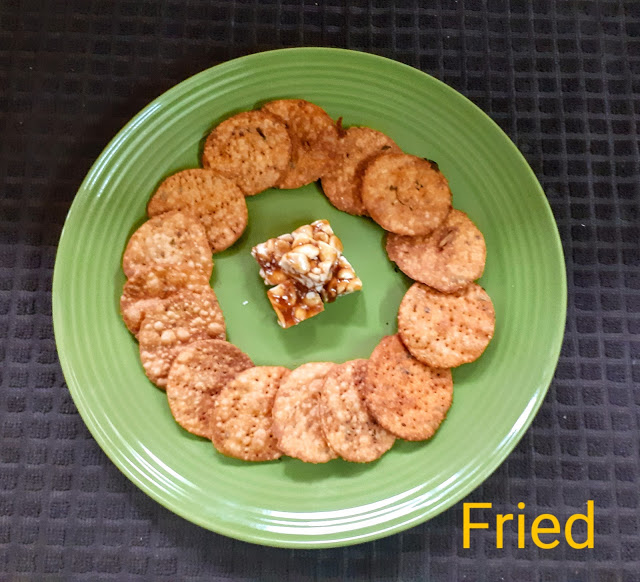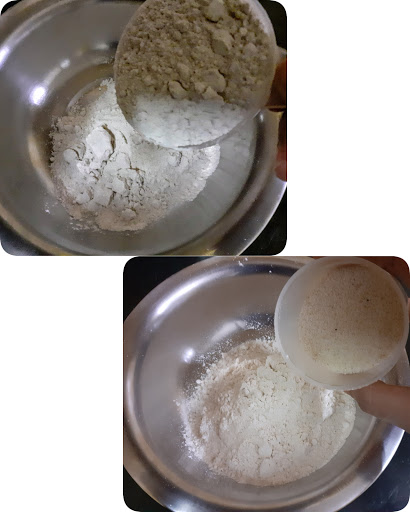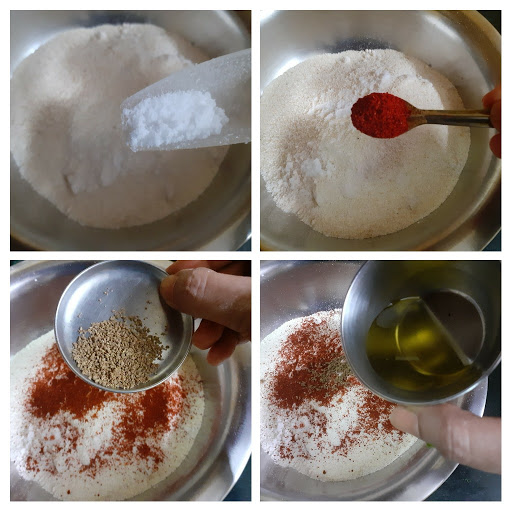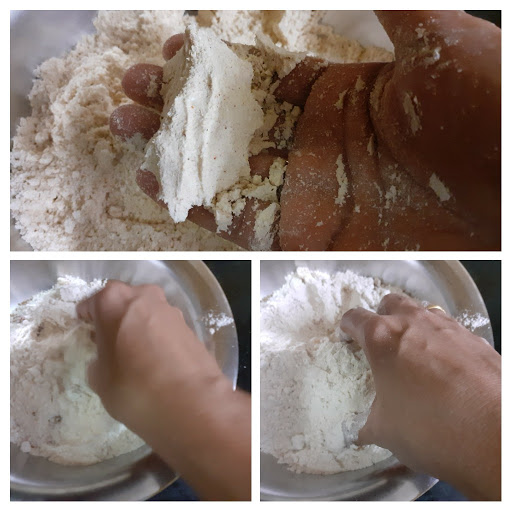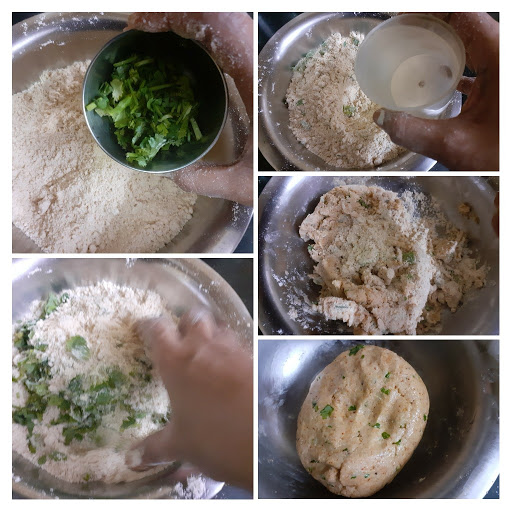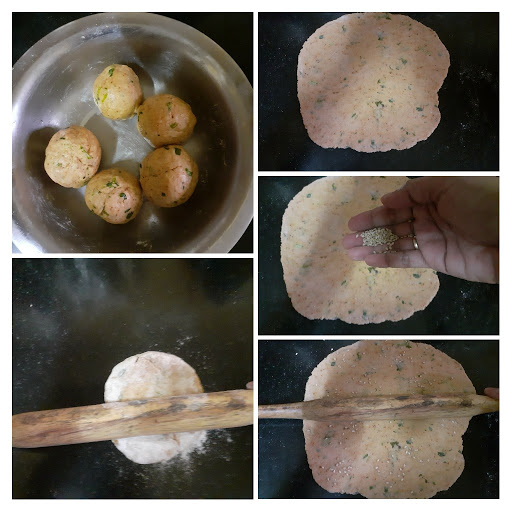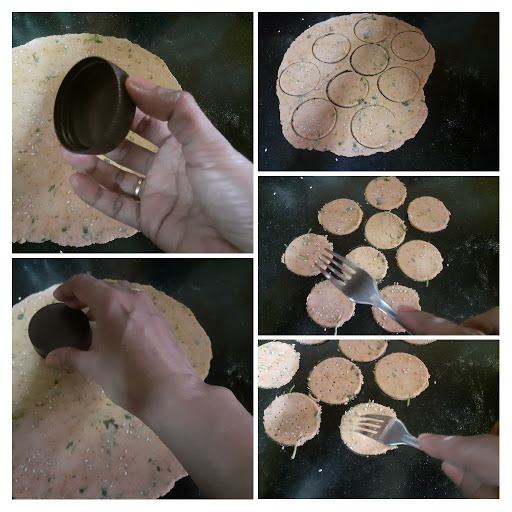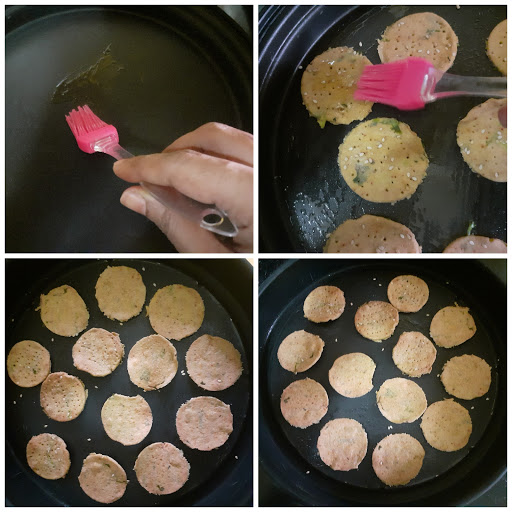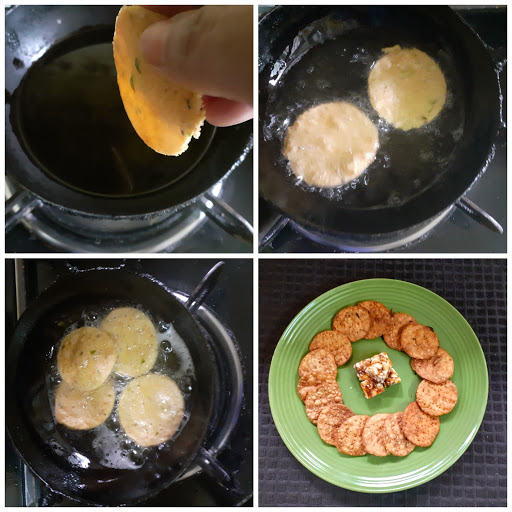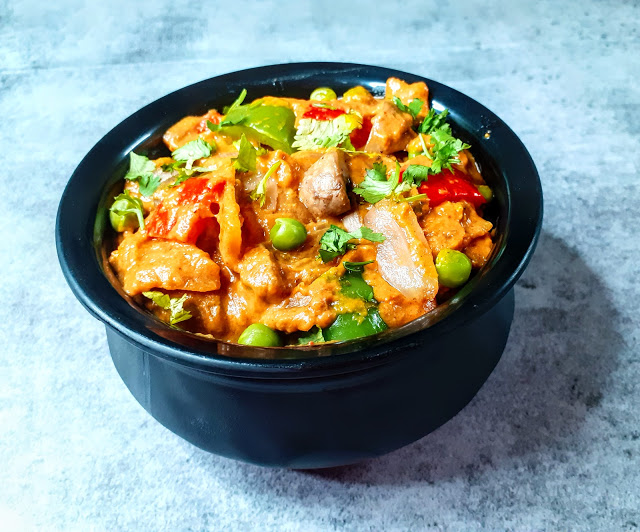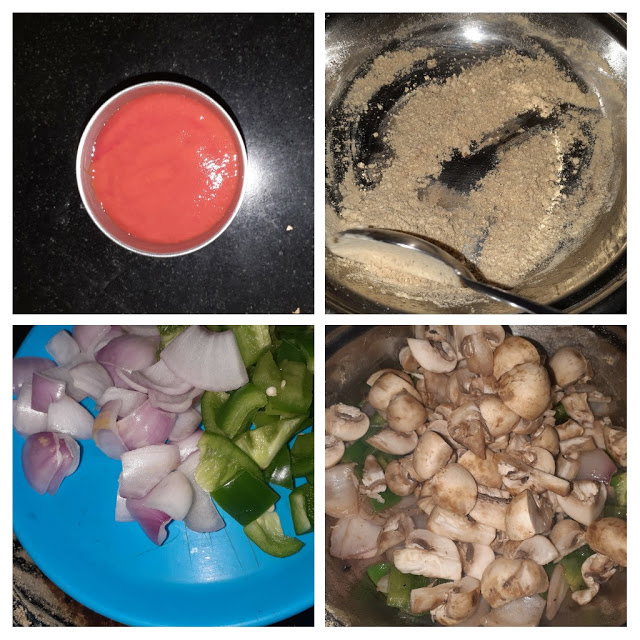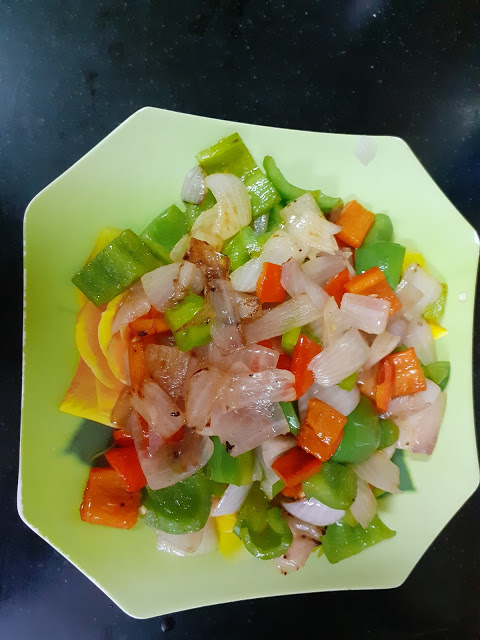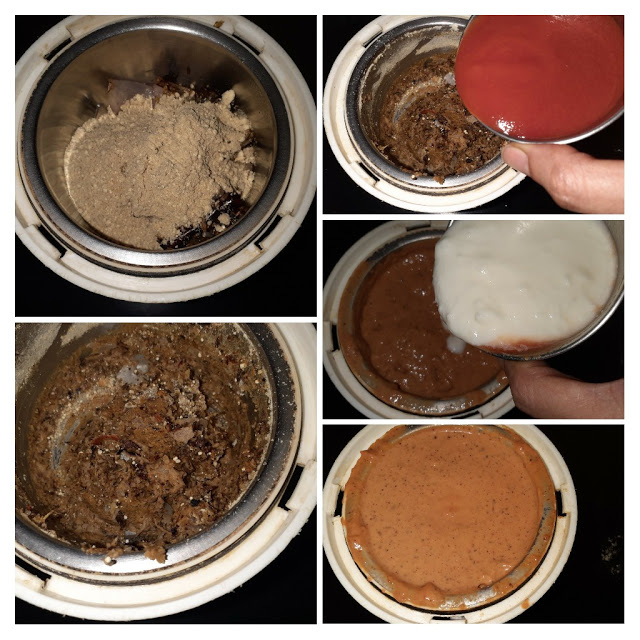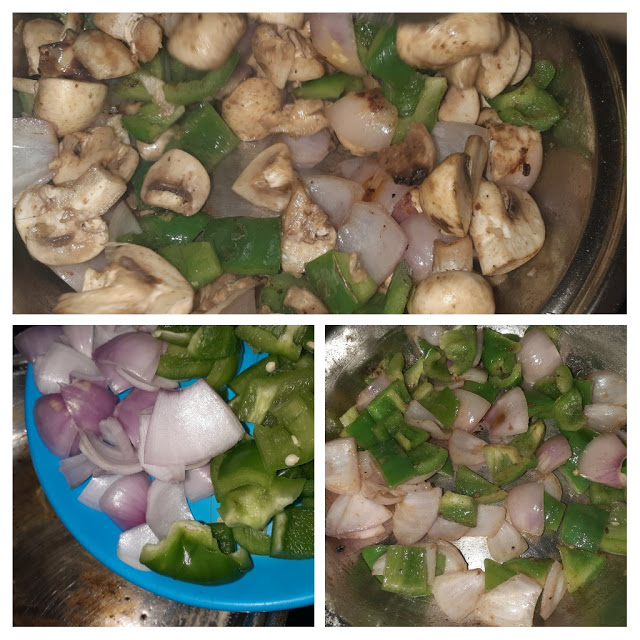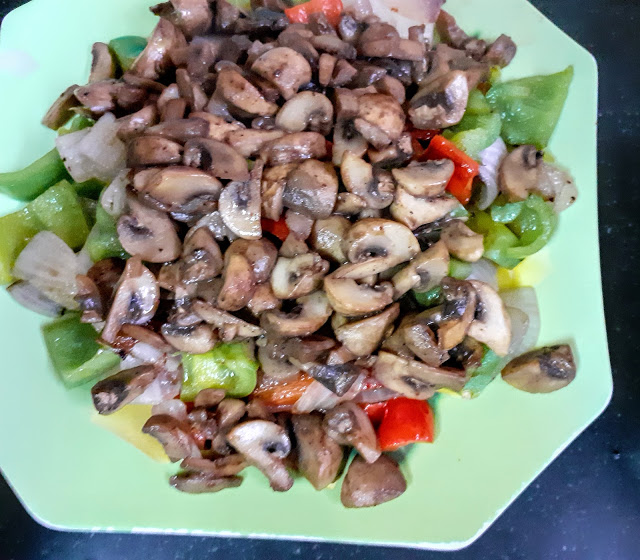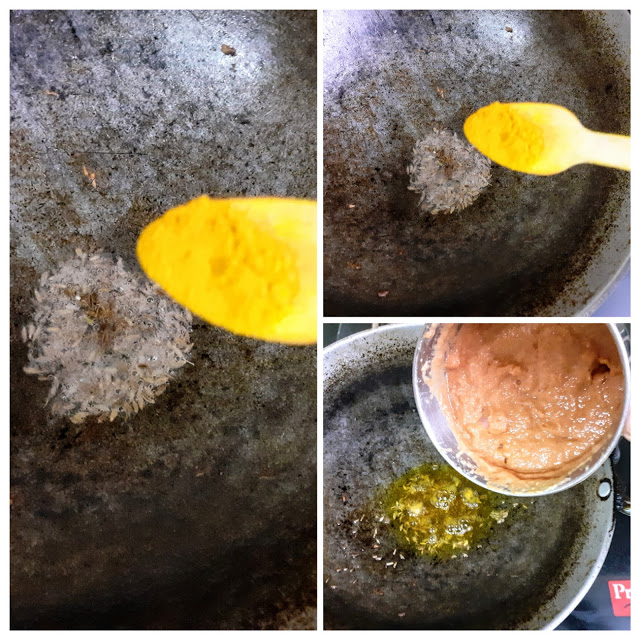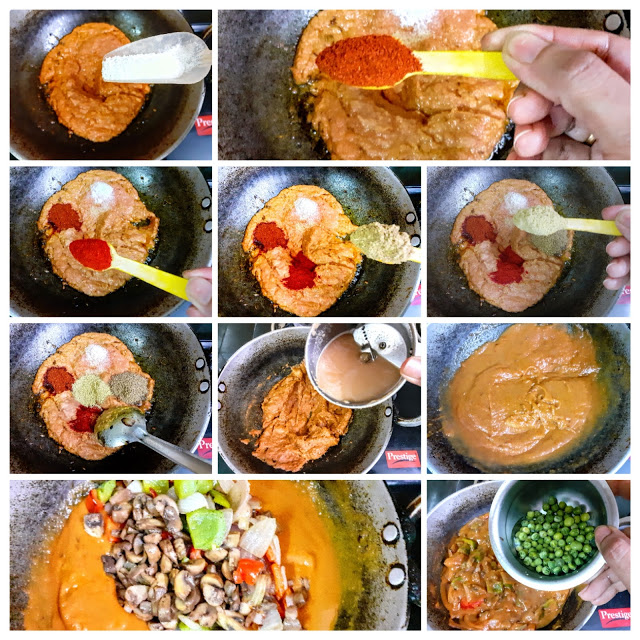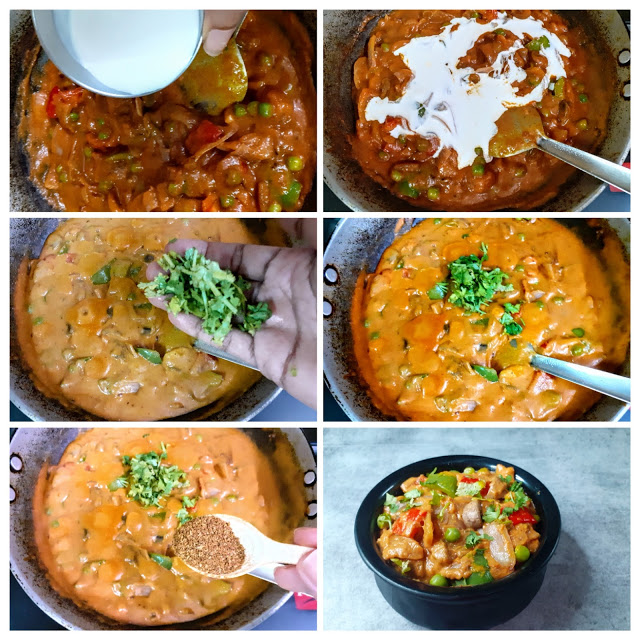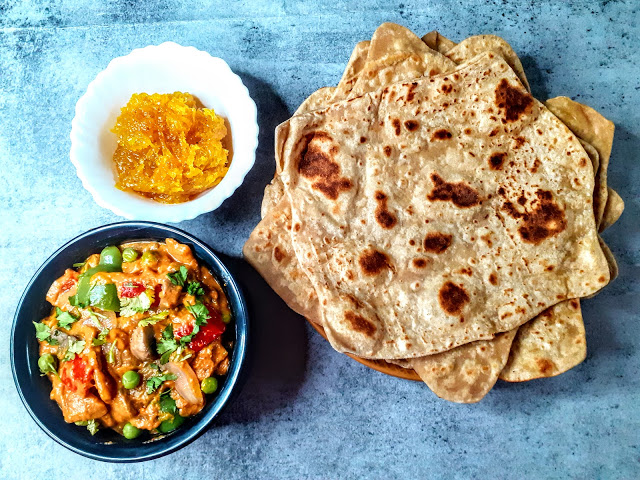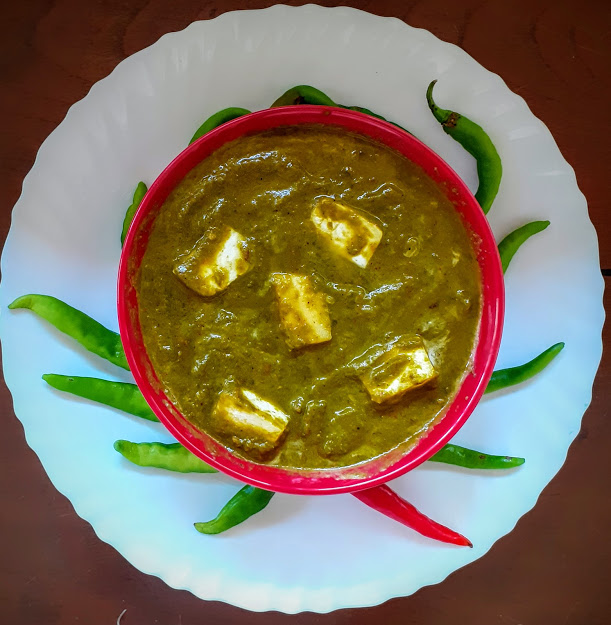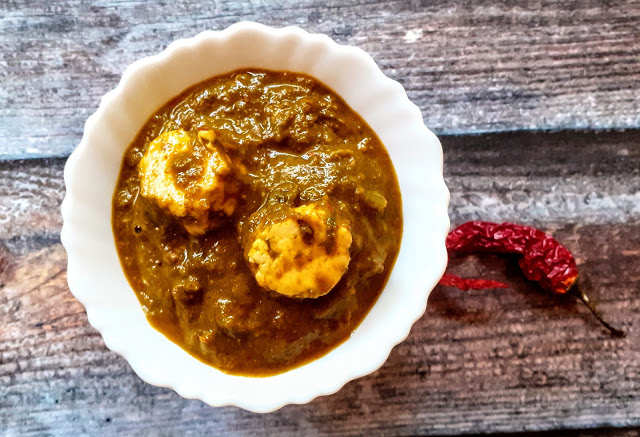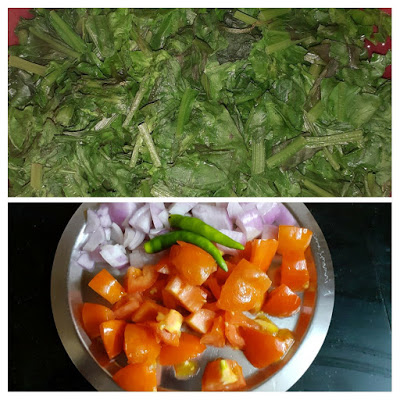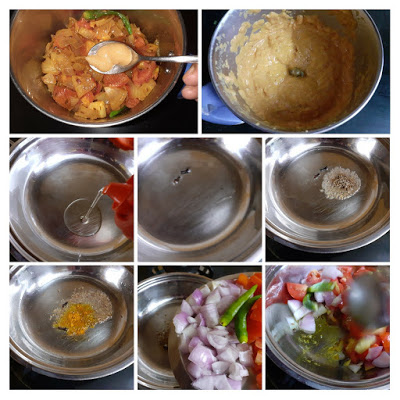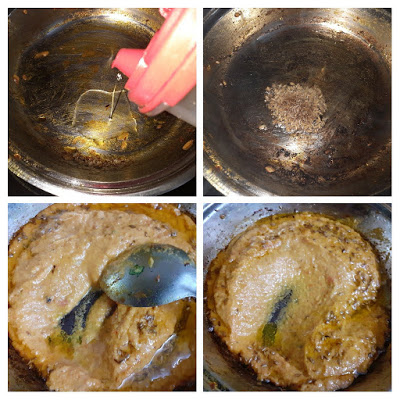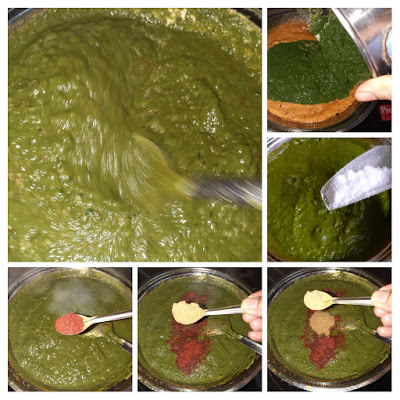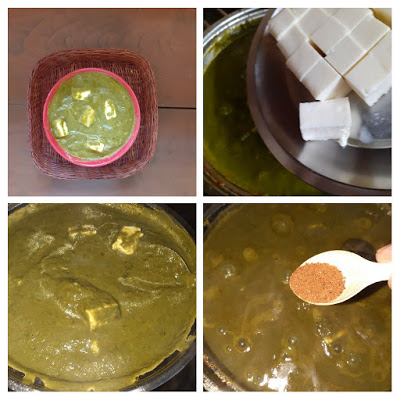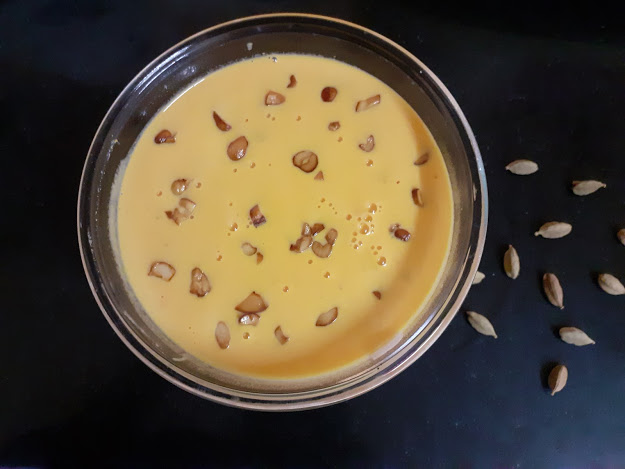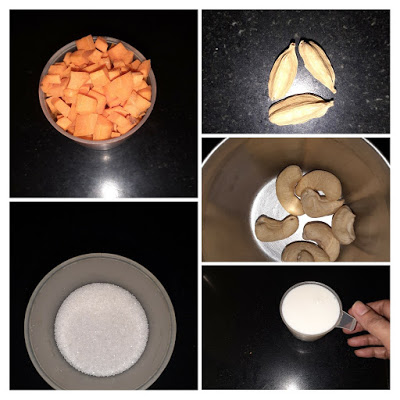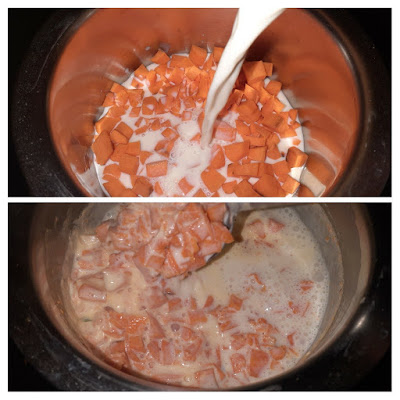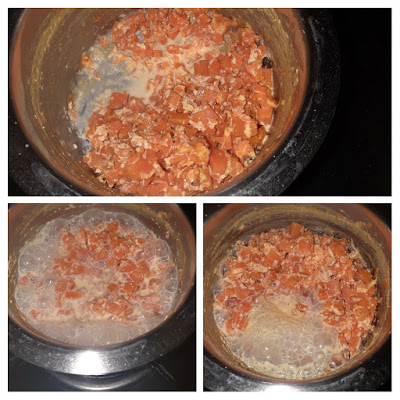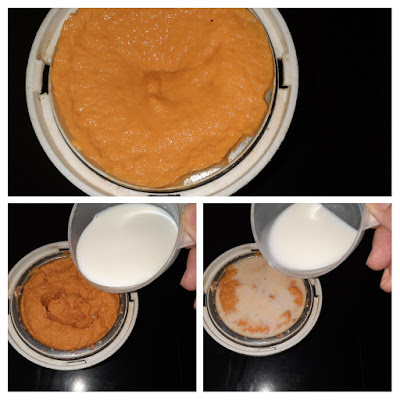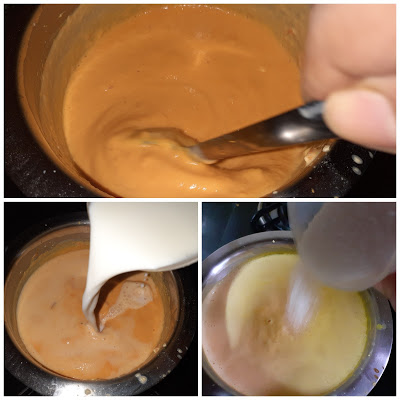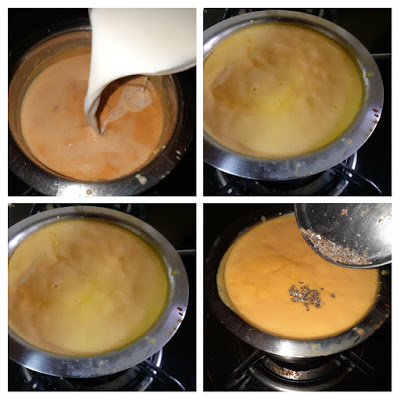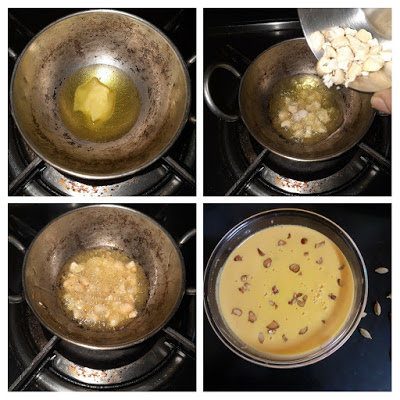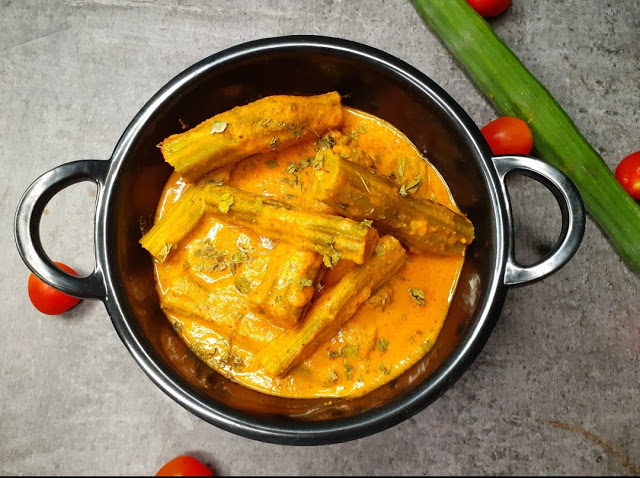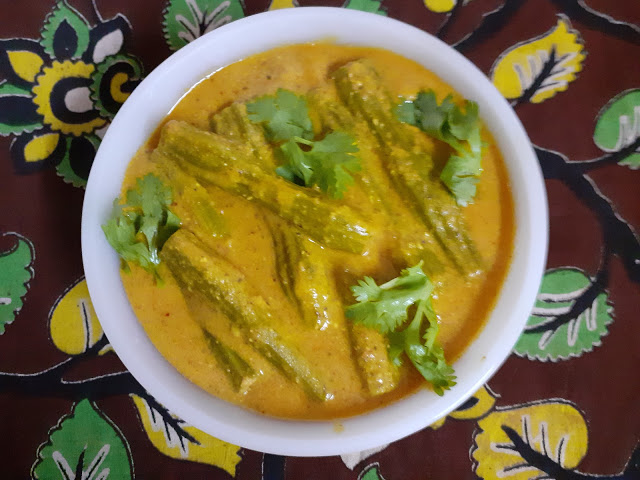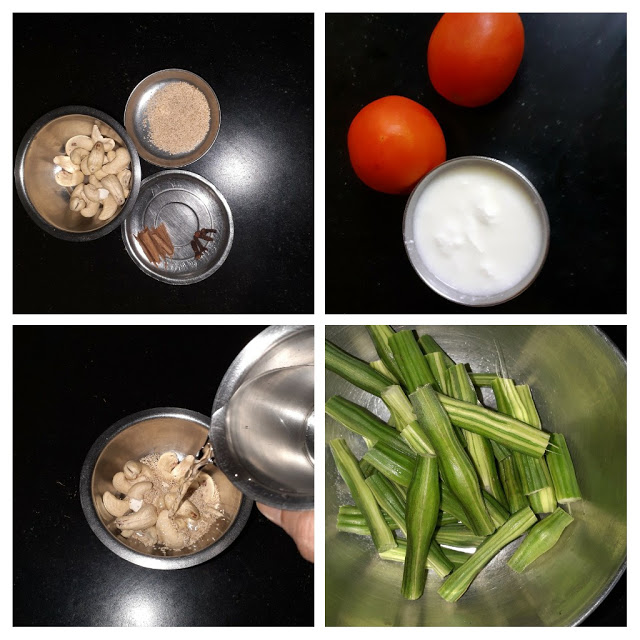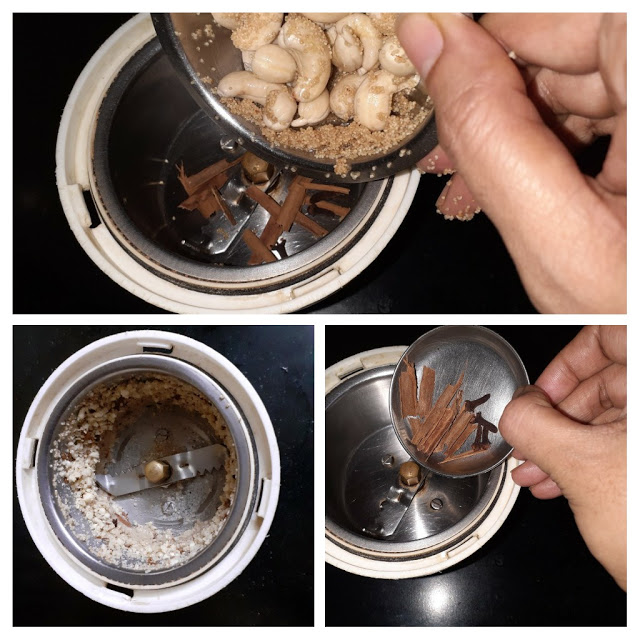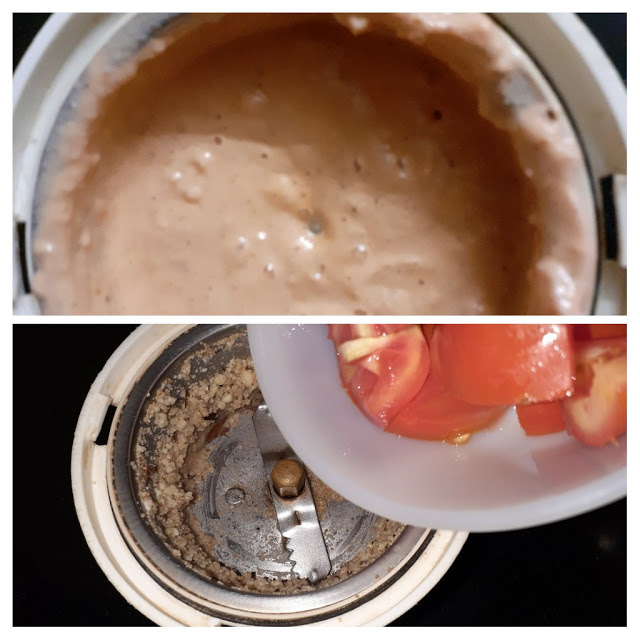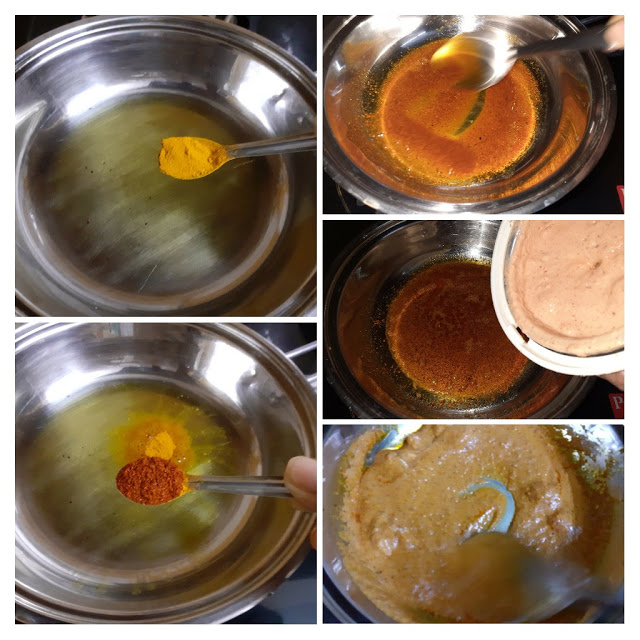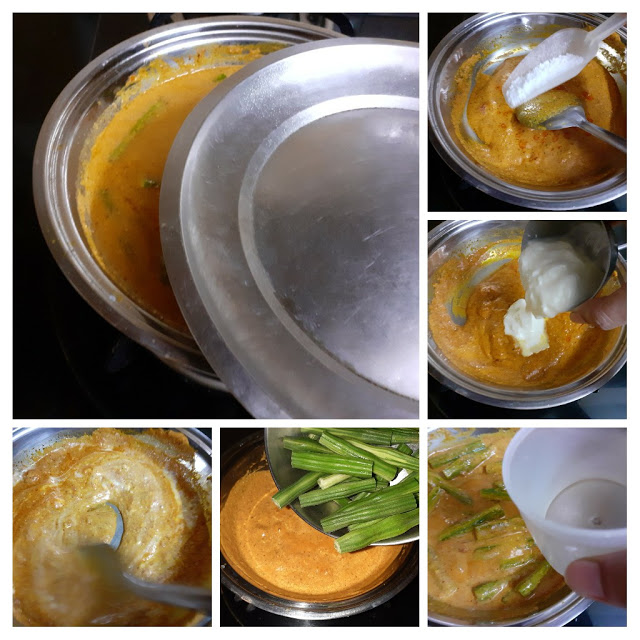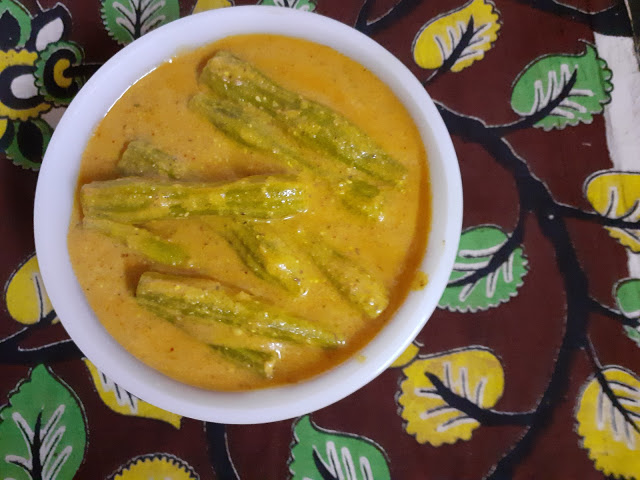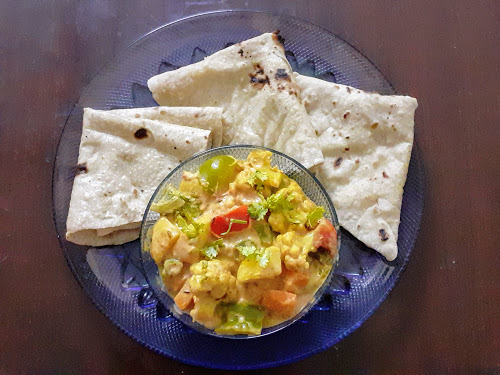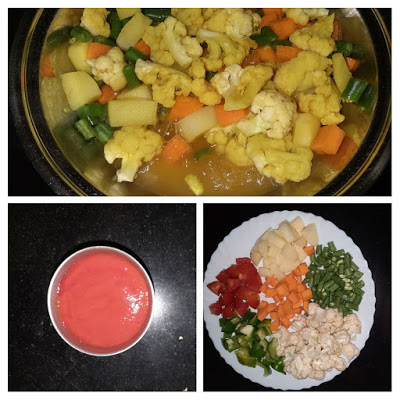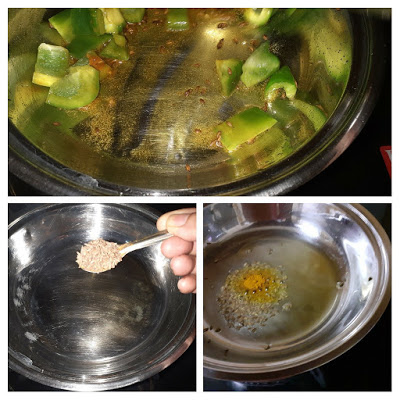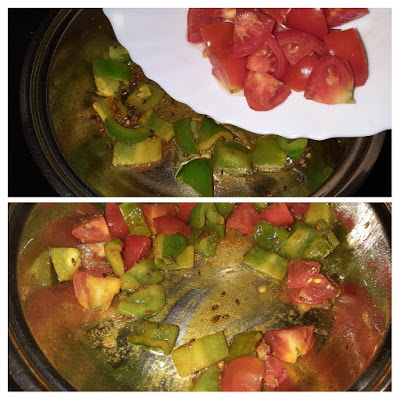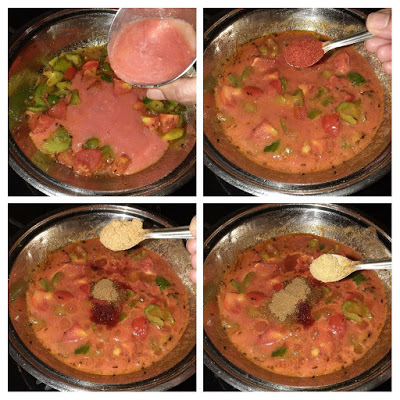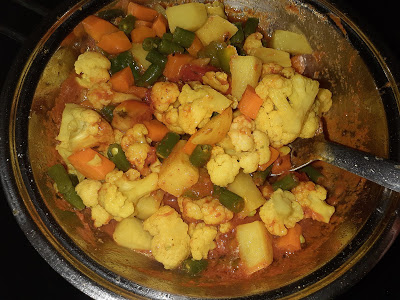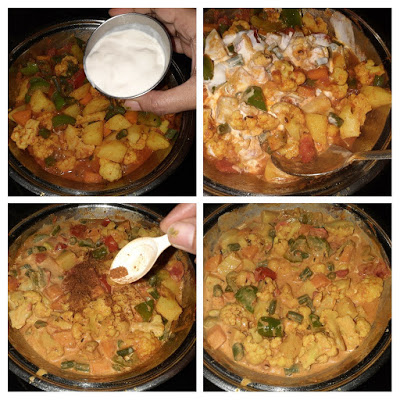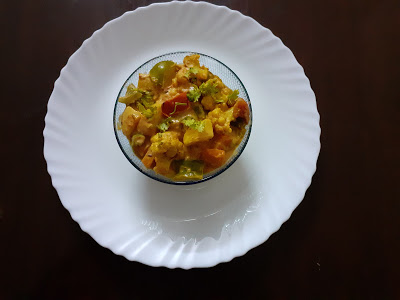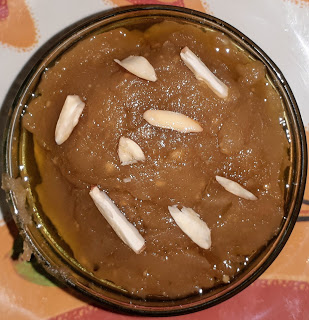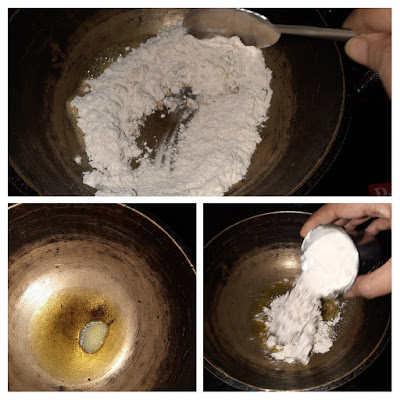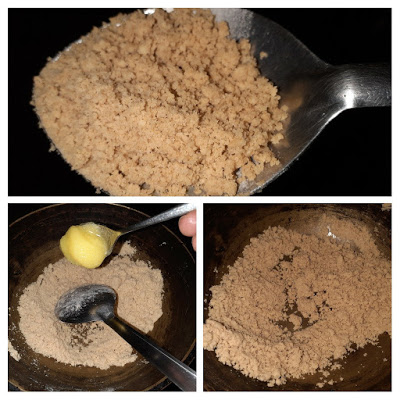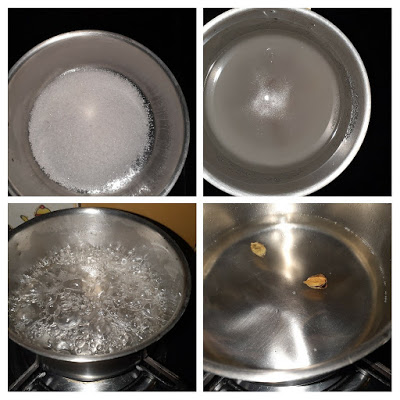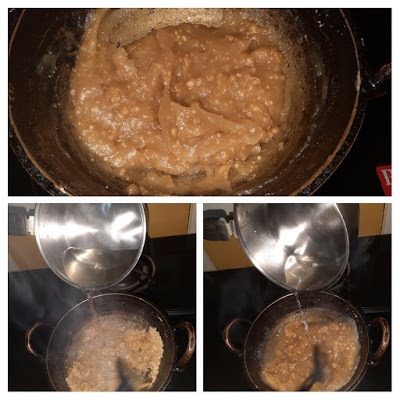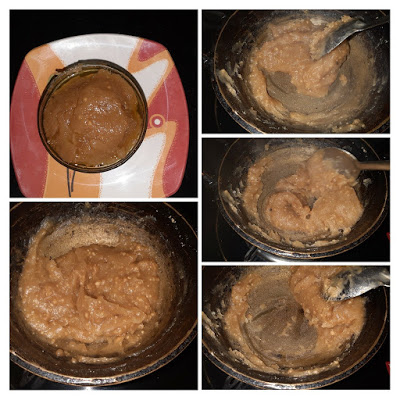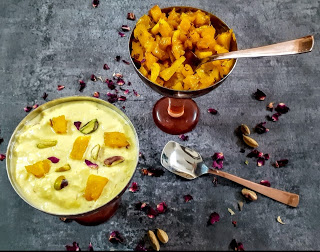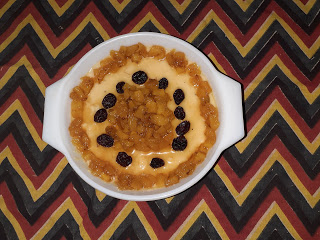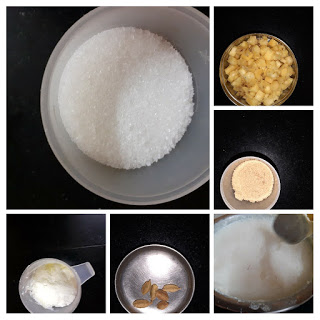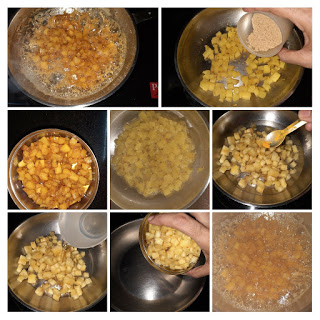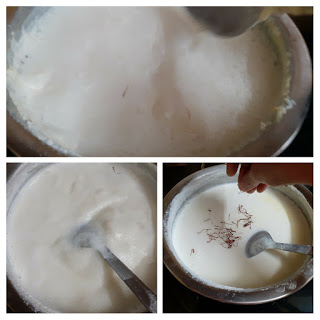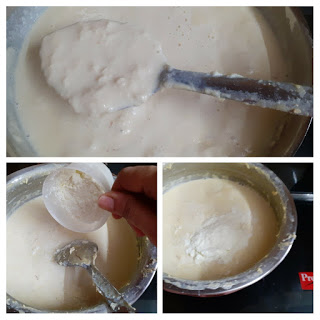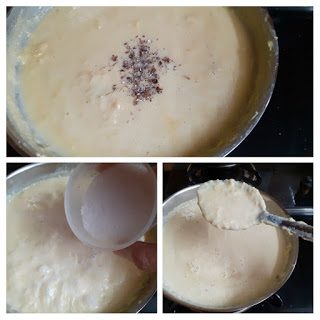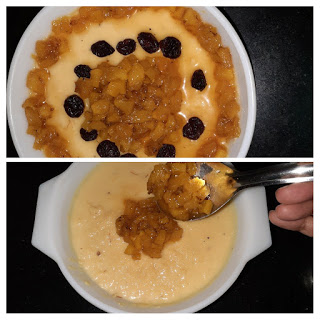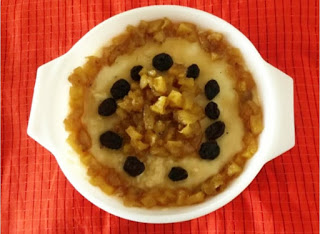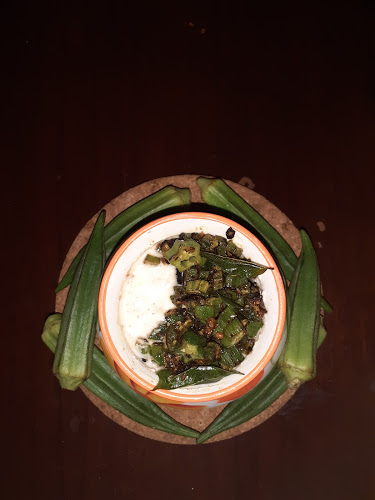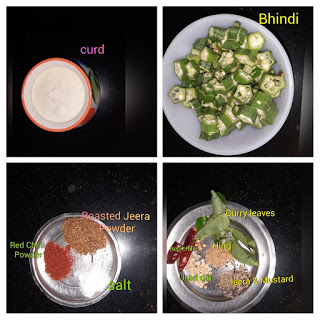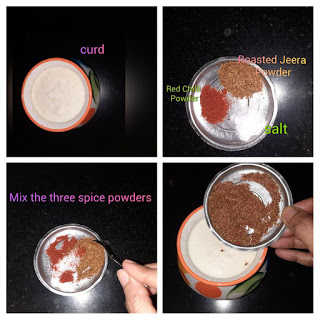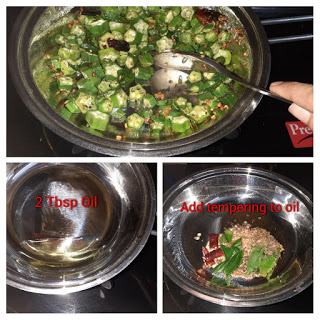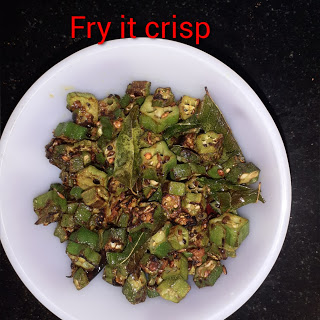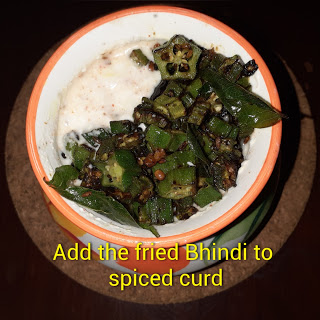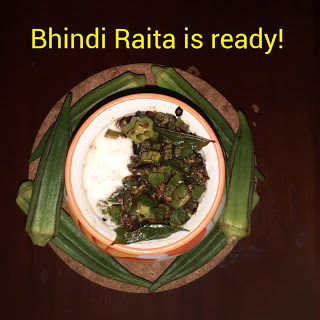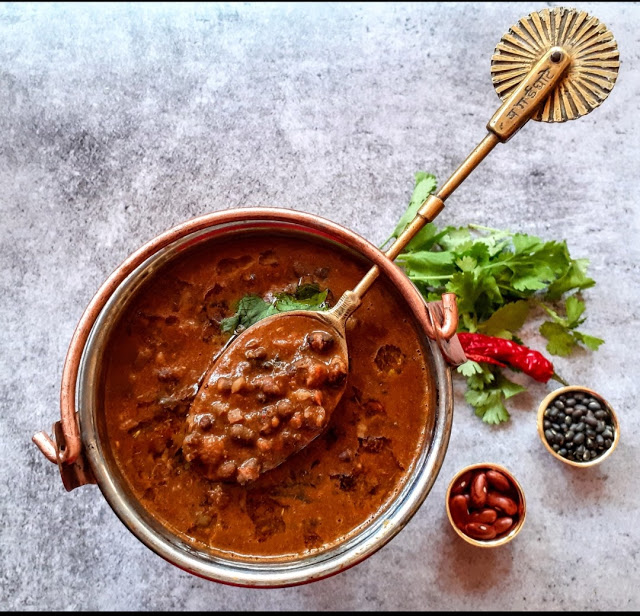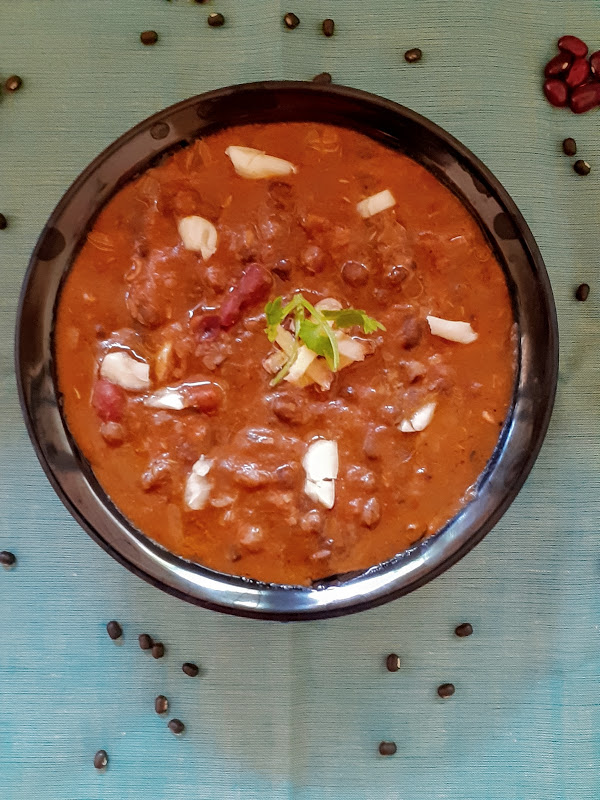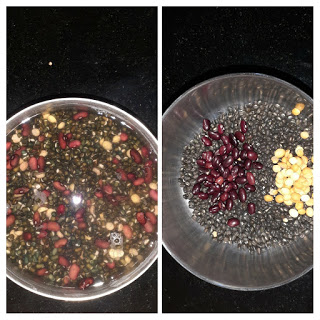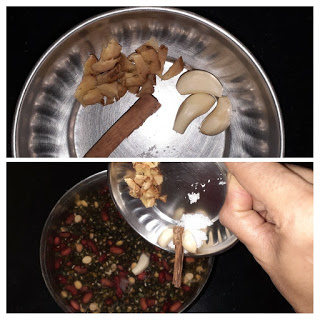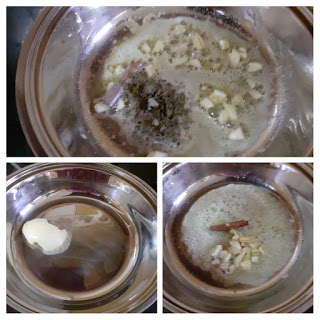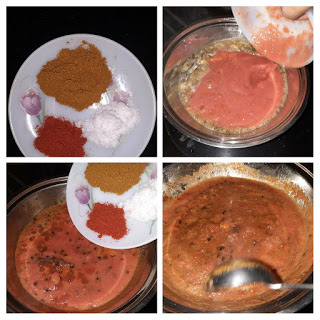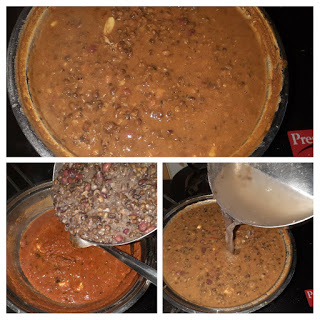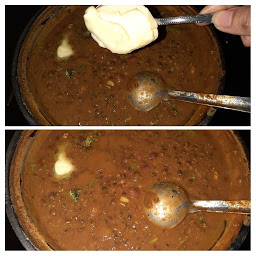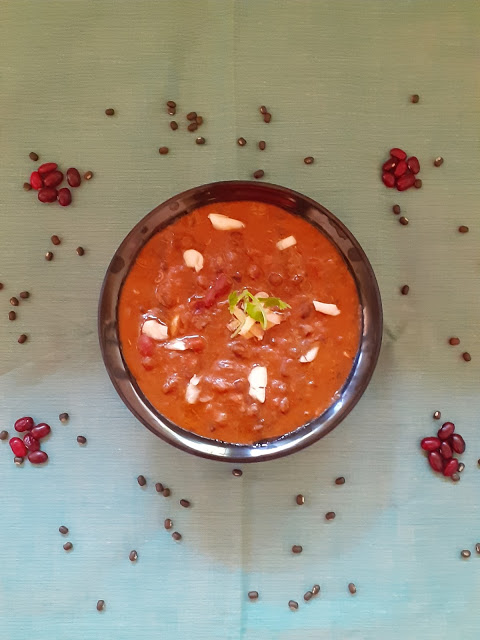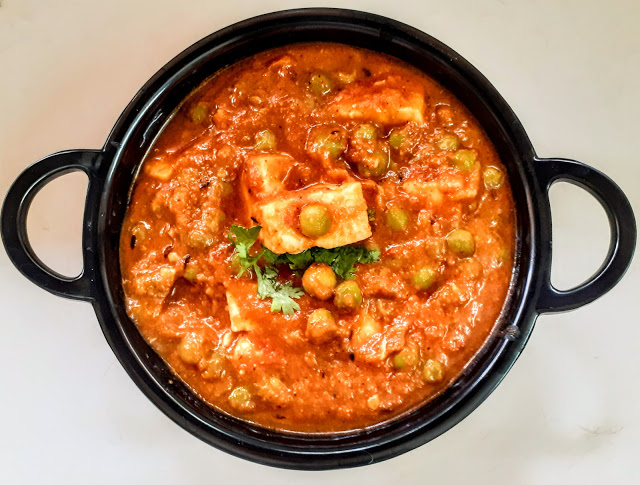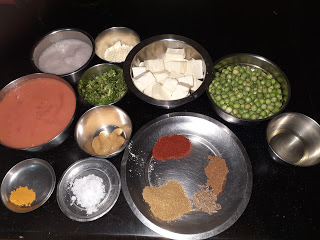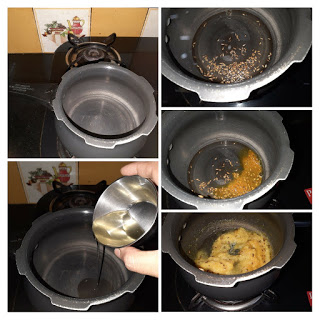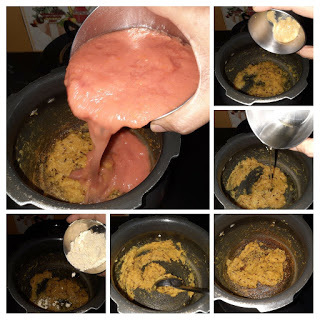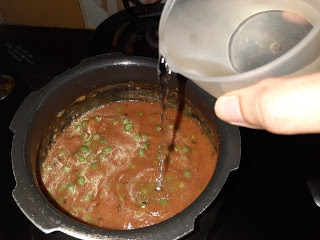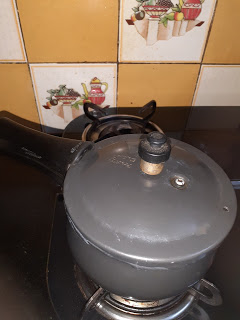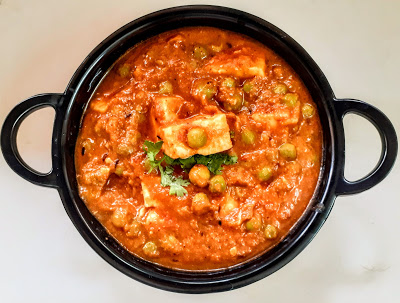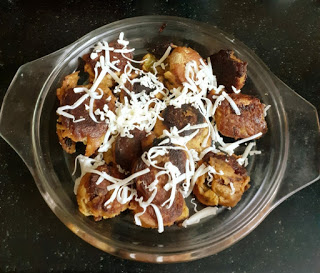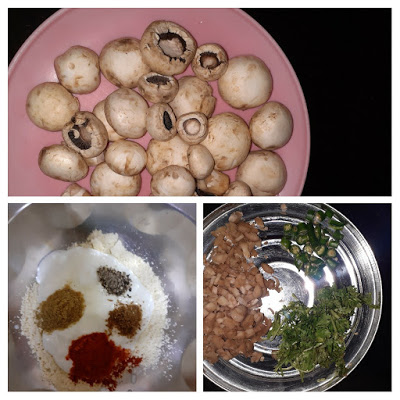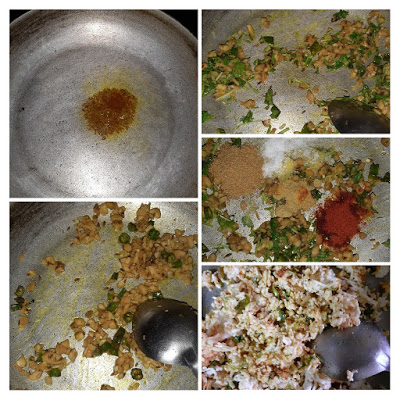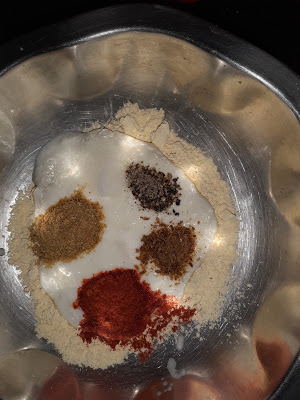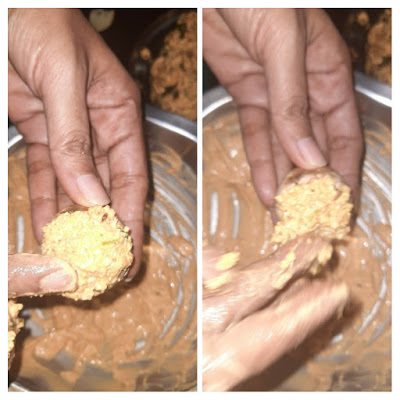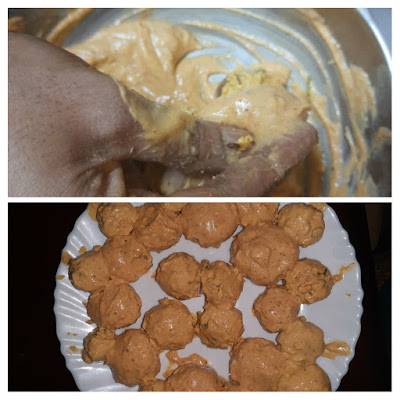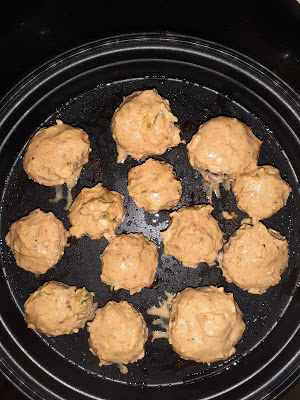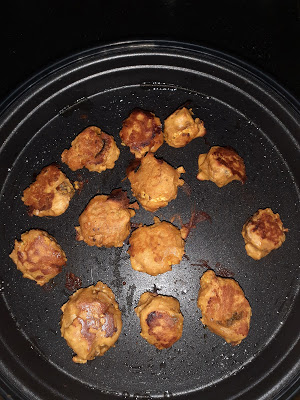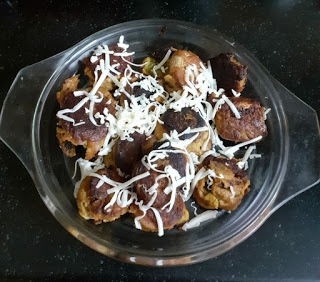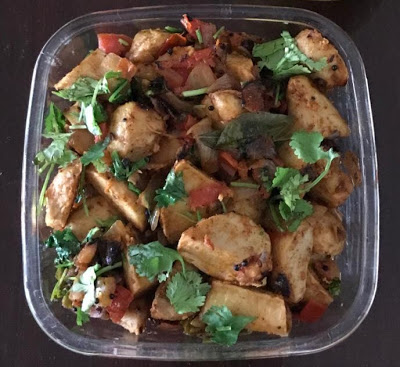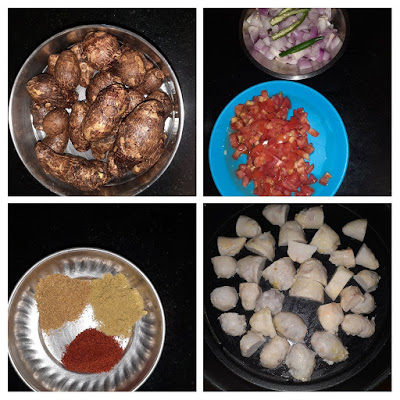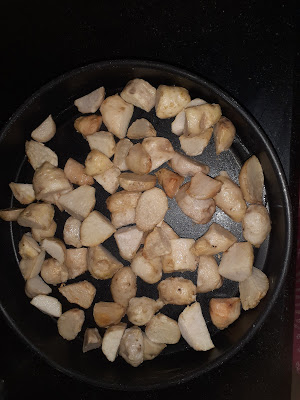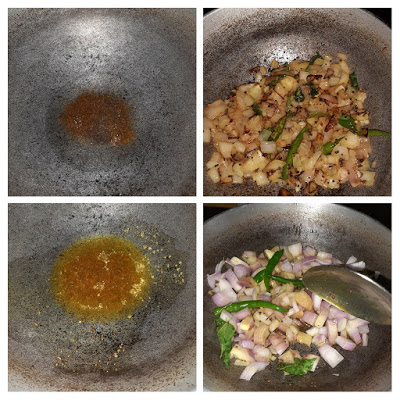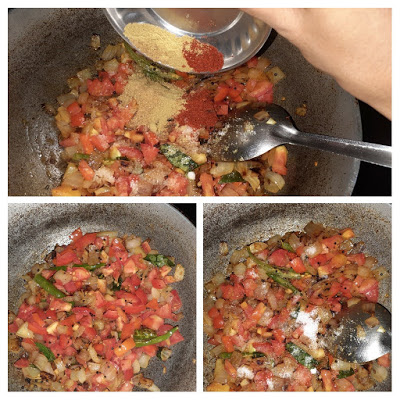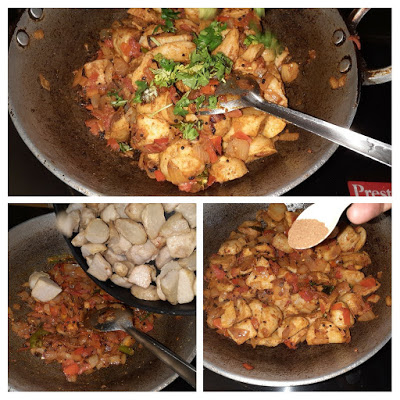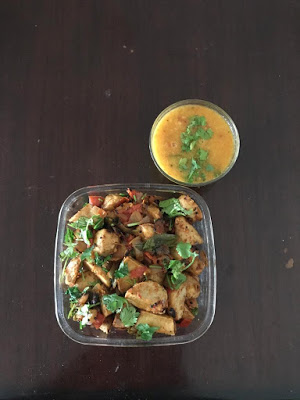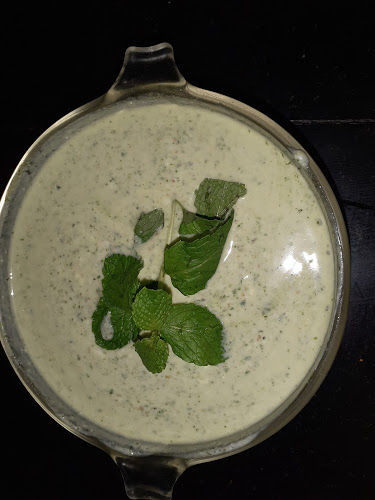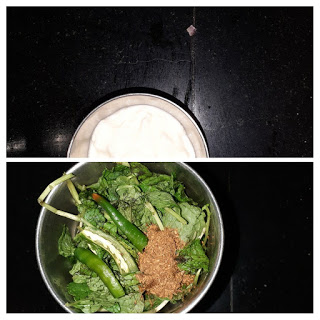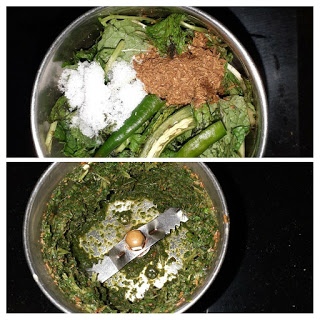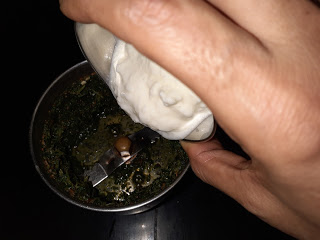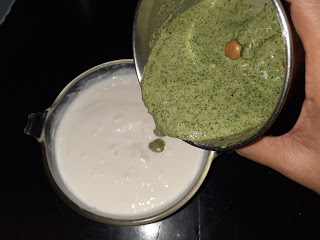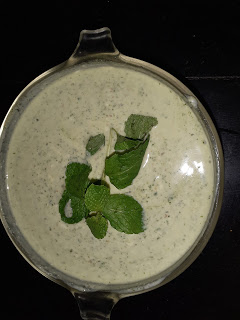Bajra Paneer Cheela
Sarson Ka Saag Aur Makki Ki Roti
Ragi Cheela/ Finger Millet Crepes
Mathura Ke Dubki Wale Aloo
Pumpkin Raita/ Parangikai Thayir Pachadi
Coconut Rose Modak/ Coconut Rose Kozhukattai
Dhaniya Paneer Korma
Sabudana Kheer / Javvarisi Payasam
Popular Rakshabandhan Recipes
Bhatura Recipe
The Paratha Collection
Kachchi Haldi Paratha With Sarson Ka Raita
Alu Palak
Sweet Corn Seekh Kebab
Paratha Mini Thali
Aloo Paneer Curry (One Pot)
Besan Oats Cheela With Carrot Greens
Bajra Methi Crackers
Mohan Puri/ Chandrakala
Pineapple Kesari/Pineapple Sheera/Pineapple Pudding
Sooji Halwa/Semolina Pudding/Sheera
Pumpkin Halwa/Kaddu Halwa/ Pumpkin Pudding
Buckwheat and Raw Banana Flour Hariyali Paratha
Mirchi Ki Sabji ( with Banana Peppers)
Methi Chaman
Paneer Parathas
Coconut Barfi/Thengai Burfi (with desiccated coconut)
Instant Milk Peda/Doodh Peda(easy recipe)
Broccoli Paneer Rice
Til Ki Chutney/ Sesame seeds chutney
Bombay Potatoes
Palak Paratha ( Spinach Paratha)
Gluten Free Thaali
Paneer Makhni
Paneer or Cottage cheese is a acid set cheese got from cow or buffalo milk. It is a non- aged cheese made by curdling milk, disposing the whey, and collecting the fat, which is paneer. It is a rich source of milk protein. Paneer was introduced to India by the Persian and Afghan rulers in the 16th century, it is said. Paneer is a rich source of Calcium, iron, Mangesium, and also makes one feel full for longer.
Paneer is a savior in many ways than one. Do you agree? You want something easy-paneer to the rescue, or want something special for a get together-paneer to the rescue. Paneer is a regularly stocked item in my fridge. Sometimes I do make Paneer at home also, but that is not very frequent. Makhni gravy is a very subtly flavoured base, and while I have a Dal Makhni on the blog, it is but a must to have a Paneer Makhni or Paneer Makhanwala. A few whole spices make a world of difference in terms of flavour and you get the restaurant effect in the gravy.
In this recipe the idea is to go liberal on the butter to get the perfect taste. In my usual paneer recipes you will find that I would have used either cashewnuts or cream, or even none at all. But this dish has both cream and cashewnuts thus making it special and rich. Something you will want to make for an occasion, or to cook for a loved one.
Since I am a paneer lover you will find many paneer recipes on the blog. Do check them out here– Paneer Khurchan, Palak Paneer, Mava Paneer Curry, Malpua with Gulab jamun mix, Kadai Paneer semi-dry, Matar Paneer, Steamed Paneer Palak Koftas, Kadai Paneer gravy, and more…
Here is the recipe for Paneer Makhanwala-
Ingredients to be ground:
If you tried this recipe and liked it please comment below. I would love to hear from you. If you have a query about the recipe email us and ill respond as soon as I can.
Beetroot Halwa
I have a long standing relationship with Beetroot. I have liked it as a child and continue to do so. What I meant by long standing relationship is that, when I was anemic for a certain period, I was advised to eat Beetroot and Pomegranate regularly. And yes Dates too. These three are always part of my diet even now. I cook Beetroot in many forms. Stir fry, Falafel, Paratha, Salad and more. But my most favourite version is of this dessert, Beetroot Halwa. In fact I prefer Beetroot halwa to Carrot Halwa.
If you have followed my Carrot halwa recipe you will see that I have followed the same method. These root vegetables have an earthy taste and smell. So to make a dessert with them, it is necessary to get rid of the earthy taste. That’s done by boiling them in milk( a good amount of it). This not only removes that raw taste, but add that nice milkiness that we require for a Halwa or any fudge kind of recipe.
If not boiling them in milk, you need something like unsweetened Mava or Khoya, which is dehydrated milk to get rid of the taste. This version I have done in my Gajar Halwa Barfi recipe. It is a very quick version of the Carrot Halwa itself. Finally, this halwa is such a guilt free dish because a lot of sugar is not needed owing to the natural sweetness of the beets, and ghee has been used only for frying the nuts.
Coming to the vegetable itself and why one must include it in their diet is because they are packed with essential vitamins, minerals, some of which have medicinal properties. Another popular reason is that they have any nutrients, and fewer calories, so it is good for weight watchers. It helps keep blood pressure in check. They also have a decent amount of Fiber, folate and Vitamin C. Isn’t this reason enough for it to be a part of our meal plan?
I am cooking this Halwa on a day I have excess milk, so you will see me using my regular milk vessel, instead of my Kadai or Pan which I usually prefer. This is also Pandemic time, so no house help around. The more vessels I use, the more clean up I end up doing… getting the drift?????
While you are here check out other dessert recipes of mine like- Carrot Kheer, Gajar/Carrot Halwa, Moong Dal Halwa, Dry fruit ladoo, Red Poha Ladoo, Sweet Potato Puranpoli, and more…
Here is the recipe for Beet root Halwa.
Ingredients:
Beetroot 2 medium around 250 gm grated
Milk 500 ml
Sugar 3/4 cup
Cardamom powder 2 pinches
Cashewnuts few broken to bits
Pistachio a few (optional)
Ghee for frying nuts
Directions: Boil Milk in a Pan/Kadai or heavy bottomed vessel. Once boiled, add the grated beetroot and cook. Keep stirring continuously, so that the milk doesn’t get burnt. This is an important step. If the milk sticks to the bottom of the vessel and burns, the dessert will not taste good any more. The stirring and cooking process has to continue until the mixture becomes almost dry. This takes about 40 to 45 minutes, if done on medium flame, while stirring constantly. I have indicated the steps of evaporation of milk in the mixture, in my pictures. When the mixture is almost dry, it is time to add the sugar. Keep stirring again. The mixture will liquefy. Not to worry. Keep stirring, and it will start solidifying again. Keep stirring until the mixture no more sticks to the bottom of the pan. This is the right consistency. Switch off the flame and, add cardamom powder. Now in a small tadka Kadai heat some ghee, drop in the broken cashew pieces and fry until golden brown. Pour this over the Halwa and enjoy warm. Garnish with Pistachios if you prefer.
STEPWISE RECIPE FOLLOWS:
1. Boil Milk in a Pan/Kadai or heavy bottomed vessel. Once boiled, add the grated beetroot and cook. Keep stirring continuously, so that the milk doesn’t get burnt. This is an important step. If the milk sticks to the bottom of the vessel and burns, the dessert will not taste good any more.
2. The stirring and cooking process has to continue until the mixture becomes almost dry. This takes about 40 to 45 minutes, if done on medium flame, while stirring constantly. I have indicated the steps of evaporation of milk in the mixture, in my pictures.
3. When the mixture is almost dry, it is time to add the sugar. Keep stirring again. The mixture will liquefy. Not to worry. Keep stirring, and it will start solidifying again. Keep stirring until the mixture no more sticks to the bottom of the pan. This is the right consistency.
4. Switch off the flame and, add cardamom powder. Now in a small tadka Kadai heat some ghee, drop in the broken cashew pieces and fry until golden brown. Pour this over the Halwa and enjoy warm. Garnish with Pistachios if you prefer.
If you tried this recipe and liked it please comment below. I would love to hear from you. If you have a query about the recipe email us and ill respond as soon as I can.
Moong Dal Halwa
Moong dal Halwa is an Indian dessert made from yellow lentils. It is basically a fudge and is very rich because of the amount ghee/ clarified butter added to it. Though I make many sweet varieties and desserts, I’m not generally the one who will stay until dessert. I’m immensely intuitive while I create sweet dishes, but I don’t crave sweets much. But this halwa is very close to my heart because it probably is the first sweet dish I ever liked. Thanks to our stint in Delhi, I have got to taste the best ones.
Infact, I liked this sweet dish so much that I have attempted to make it in the past, failed miserably and had given up on ever trying it again. But last year during the pandemic lockdown I was craving it badly, and as you know “ when you want something very badly, the universe conspires to make it happen” ????. So I had a viola moment during Diwali, while I was documenting the sweets and savoury prepared by me, when a simple method to make this halwa struck m
If you have attempted making this halwa any time or have searched the net for the recipe, all of them will tell you it takes 3 to 4 hours to get this sweet dish done. The actual recipe asks to soak and grind the lentils and them cook it in milk/ water and then add the sweetening agent. As I have claimed here on the blog before, I will take a short cut as long as it does not alter the taste, flavour and texture of the dish. And I took a short cut to this recipe and I don’t regret it because the outcome was just like the original.
If you follow the procedure as given here by me without altering I’m sure it’s a no fail recipe. And why stand by the stove for hours when you can get the same taste and flavour in an hour’s time? Having failed at this recipe many times, and knowing what went wrong each time, this time the recipe was made with so much conviction of technique that it turned out wonderfully.
While you are here do check out other dessert recipes like Carrot kheer, Strawberry and Lemon loaf, Red Poha Ladoo, Shrikhand, Malpua with Gulab Jamun mix, Akkaravadisal, Sweet Poha, and more…
Here is the recipe of Moong Dal Halwa-
Ingredients:
Moong dal split ( yellow lentils) 1 cup
Milk 1 cup
Water 2 cups
Sugar 1 cup
Saffron strands a few (optional)
Yellow food colour/turmeric powder for colour 2 pinches
Ghee 100 GM approx
Cardamom/ Elaichi powder 1/4 tsp
Almonds and Pistachio chopped a few
Directions:
The foremost and important step is dry roasting the dal to a light brown colour. This has to be done patiently on low heat. On this depends the entire recipe. First put a pan/ kadai on flame and warm it. Now put the dal and start the roasting procedure by stirring constantly. This step can be done ahead. Cool the roasted dal and grind it in a blender. For a smooth texture of halwa grind it finely, for a grainy texture grind it coarse. Whole dal should not be visible. Now put this ground dal powder in a pan, add one cup milk, followed by 2 cups water, and stir to make it lump free. Now put the pan on the flame, add the food colour/turmeric powder, and start cooking the mixture on medium flame. Slowly the mixture will start thickening. If adding saffron strands, add now. Keep stirring gently, scraping the sides of the pan from time to time. Once the mixture thickens, check if there is any rawness in the smell. That is, if the dal smell/ taste is still coming. If yes, add another ladle of milk and continue to stir again. If your mixture has thickened and there is no raw smell or taste, add the sugar gently and start stirring again. As the sugar melts the dal mixture will liquefy. Don’t worry and continue to stir. The mixture will start thickening again. Now is the time to start pouring the ghee. Pour one ladle at a time and stir until the ghee is absorbed. Continue this process until no more ghee gets absorbed, but remains on the halwa. You will also notice that at this stage your mixture/ halwa no longer sticks to the pan/ kadai bottom, but comes out clean while stirring. Another way to tell the Halwa is done, is when you take a little of it in your fingers and try to form a ball, you should be able to do it. Add the cardamom powder and nuts and transfer the halwa to a container. The delicious Moong dal halwa is ready to relish .
STEPWISE RECIPE FOLLOWS:
1. First out a pan/ kadai on flame and warm it. Now put the dal and start the roasting procedure by stirring constantly. This step can be done ahead. Cool the roasted dal and grind it in a blender. For a smooth texture of halwa grind it finely, for a grainy texture grind it coarse.
2. Now put this ground dal powder in a pan, add one cup milk, followed by 2 cups water, and stir to make it lump free. Now put the pan on the flame, add the food colour/turmeric powder, and start cooking the mixture on medium flame.
3. Slowly the mixture will start thickening. Keep stirring gently, scraping the sides of the pan from time to time. If adding saffron strands, add now. Once the mixture thickens, check if there is any rawness in the smell. That is, if the dal smell/ taste is still coming. If yes, add another ladle of milk and continue to stir again. If your mixture has thickened and there is no raw smell or taste, add the sugar gently and start stirring again.
4. As the sugar melts the dal mixture will liquefy. Don’t worry and continue to stir. The mixture will start thickening again. Now is the time to start pouring the ghee. Pour one ladle at a time and stir until the ghee is absorbed. Continue this process until no more ghee gets absorbed, but remains on the halwa.
5. You will also notice that at this stage your mixture/ halwa no longer sticks to the pan/ kadai bottom, but comes out clean while stirring. Another way to tell the Halwa is done, is when you take a little of it in your fingers and try to form a ball, you should be able to do it. Add the cardamom powder and nuts and transfer the halwa to a container. The delicious Moong dal halwa is ready to relish .
If you tried this recipe and liked it please comment below. I would love to hear from you. If you have a query about the recipe email us and ill respond as soon as I can.
Miloni Babycorn & Bell Peppers Curry (Mixed Vegetable Curry)
Miloni Baby corn and Bell Peppers( both green and red) is a mixed vegetable curry that is simple and easy to make. With a little prep and chopping it can also be made on a working day. Some recipes use Spinach/Palak in Subz Miloni, but I have skipped it entirely, to bring out the flavours of the Baby corn and bell-peppers and some green peas too have been used, as they are in season now.
The flavours of this dish are very delicate and go very well with both Rice and Rotis(flatbread). This is one of those recipes where I have just gone with the follow and created, without any pre planning. When I started, only Baby corn and bell-peppers were chopped, but as I proceeded kept adding things to create this dish. This happens when I am bored of my own cooking and am looking for some inspiration from within.
While you are here do check out other subji and curry recipes like- Kadai Paneer Gravy, Kadai Paneer (semi dry), Bhindi Aloo, Paneer Khurchan, Dum Aloo Ajwaini, Methi wale Baingan, Mava Paneer Curry, and more…
Here is the recipe for Miloni Baby corn and Bell Peppers for you-
Ingredients:
Baby Corn 12 to 15 cut lengthwise
Red Bell Pepper 1 chopped to strips
Capsicum/ Green bell pepper 1 chopped to strips
Green Peas 1 handful (optional)
Onion 1 large chopped
Ginger 1 inch piece
Garlic 3 cloves
Tomatoes 2 large chopped
Green chillies 2
Cashewnuts 10 to 12
Salt as required
Cumin Seeds 1 tsp
Turmeric powder 1/2 tsp
Red chilli powder 1 to 2 tsp (depending on spice preference)
Kashmiri chilli powder 1 tsp for colour (optional)
Coriander powder 2 tsp
Sugar 1 tsp (optional)
Cream 1 tbsp (optional)
Garam Masala powder 1/2 tsp
Oil for sauteing
Directions:
Cook the chopped Baby Corn and peas until done. I put them in the Microwave, so that they don’t overcook and the baby corn retains shape. Next, in a pan pour oil for sauteing and when hot add the cumin seeds, followed by turmeric powder. Now add the chopped onion, tomatoes, ginger, garlic and slit green chillies and saute. Add little salt(about 1/4 tsp) so that the tomatoes break, add the Cashewnuts and saute until the onion turns transparent and the tomatoes breakdown. Switch off flame and cool completely. On cooling, grind to a fine paste and keep it aside. Now in the same pan take some more oil. Add some Cumin seeeds and put in the chopped Bell Peppers(both red and green) and saute. Add a little sugar and continue to saute. When the Bell peppers appear cooked add the cooked baby corn and peas after draining all the water. Add turmeric powder and salt and stir. Now add the ground paste followed by red chilli powders(both regular and kashmiri), coriander powder and pour 1 to 1.5 cups of water( I poured water into my mixie jar, gave it a spin and used it so that is don’t waste the stuck paste ). Stir nicely for the masalas to combine and cook until the water is partially absorbed, and gravy comes together. Finally, add the cream and put off the flame and sprinkle the garam masala giving the curry a final stir. The yummy Miloni Baby Corn and Bell peppers is ready to serve.
Serving Suggestions: With hot Phulkas, Roti, Parathas, Plain rice, Jeera rice, Peas Pulav and more.
STEPWISE RECIPE FOLLOWS:
1. Cook the chopped Baby Corn and peas until done. I put them in the Microwave, so that they don’t overcook and the baby corn retains shape. Next, in a pan pour oil for sauteing and when hot add the cumin seeds, followed by turmeric powder.
2. Now add the chopped onion, tomatoes, ginger, garlic and slit green chillies and saute. Add little salt(about 1/4 tsp) so that the tomatoes break, add the Cashewnuts and saute until the onion turns transparent and the tomatoes breakdown. Switch off flame and cool completely. On cooling, grind to a fine paste and keep it aside.
3. Now in the same pan take some more oil. Add some Cumin seeds and put in the chopped Bell Peppers(both red and green) and saute. Add a little sugar and continue to saute.
4. When the Bell peppers appear cooked add the cooked baby corn and peas after draining all the water. Add turmeric powder and salt and stir.
5. Now add the ground paste followed by red chilli powders(both regular and Kashmiri), coriander powder and pour 1 to 1.5 cups of water( I poured water into my mixie jar, gave it a spin and used it so that is don’t waste the stuck paste ).
6. Stir nicely for the masalas to combine and cook until the water is partially absorbed, and gravy comes together. Finally, add the cream and put off the flame and sprinkle the garam masala giving the curry a final stir. The yummy Miloni Baby Corn and Bell peppers is ready to serve.
NOTES:
1. I have deliberately stayed clear of the regular mixed assorted Vegetables for this curry. There is a recipe for the regular mixed vegetable curry without onion and garlic, in case you are interested. It is very simple and basic recipe, which can be done by beginners too. Check it out here.
Kadai Paneer (Gravy)
Kadai Paneer is a dish I like and make very frequently at home. I have this weekly one day is Paneer day compulsorily policy. Here on my blog I have another Kadai Paneer recipe which is a Semi dry version of this recipe. Though the Masala is same, the way I made it is slightly different. The Semi dry Kadai Paneer recipe is good to go with Rotis, and other flat breads and is a good lunch box recipe as it doesn’t have much in the name of gravy and so is not messy at all, to carry in a box.
This gravy version is a great option to go with rice dishes like Matar Pulav, Jeera Rice, Biriyani etc. This version is what you will find at Dhabas in the North India. Considering Dhaba meals are supposed to be reasonably priced, do you think they would use Cashewnuts and cream etc, to thicken their gravy? Well, they use a very everyday ingredient that is found in Indian Kitchens and is gaining popularity the world over for its high protein quotient (and we have been using it since ages, that’s India for us, a treasure house of recipes and food culture). Any guesses as to what that ingredient is? Besan. Yes, the humble chickpea flour. To find out how to use it, read the recipe and try it out and you will agree that it tastes delicious.
While you are here try out my other Paneer recipes likes Palak Paneer, Mava Paneer Curry, Paneer Khurchan, Malpua with Gulab Jamun mix and Paneer, and more…
Here goes the recipe for Kadai Paneer gravy style-
PREP TIME: 15 COOK TIME:15 MINS
TOTAL TIME: 30 MINS COURSE: MAIN
CUISINE: NORTH INDIAN SERVINGS: 5
AUTHOR: RAJNI RAM
Ingredients:
Paneer 200 gm cubed
Onion 1 large cut into petals
Onion 1 medium size chopped finely
Capsicum 1 medium cut to large cubes
Green chillies 2 slit lengthwise
Ginger garlic paste 1 tsp
Garlic 3 to 4 cloves (big ones)
Tomatoes 2 large pureed
Tomato 1 medium diced
Turmeric powder 1/2 tsp
Salt as required
Cumin seeds 1 tsp
Besan/ Chick pea flour 1.5 tbsp roasted on low flame until aromatic
Methi seeds/ Fenugreek seeds 2 pinches
Garam Masala Powder 1/2 tsp
To be ground:
Coriander seeds 1 tbsp
Cloves 2
Jeera/ Cumin seeds 1 tsp
Dry red chilli 2 regular and 1 Kashmiri dry red chilli (optional)
Directions:
Take a Kadai and heat it, add the Besan and saute on low flame until it turns aromatic and light brown in colour. Keep stirring so that the Besan does not burn. Once aromatic, transfer to a plate. Now in the same kadai take 1 tbsp oil and drop in the Onion petals and saute for 1 minute. Now add the cubed capsicum and continue to saute over high flame for another 1 minute. Take care to stir constantly and the onion and capsicum should not overcook or turn limp. Transfer to a plate. Now in the same kadai take some more oil and add cumin seeds. Once they start crackling add the slit green chillies and saute for 30 secs. Now add the finely chopped onions and crushed garlic and continue to saute until the onion starts turning brown. In the meanwhile roast and grind the spices mentioned under “to be ground” and set aside. Grind them coarse and not very fine. Now add this powder to the sauteed onions, add turmeric powder, and if the mixture looks dry add another teaspoon of oil and saute the masalas in oil. Now add the roasted Besan and saute until the mixture starts appearing crumbly, but dry. To this add the tomato puree and mix nicely. Smoothen out all the lumps from the Besan. Add salt, followed by 1 to 1.5 cups water, drop in the diced tomatoes and cook for 5 minutes. Check for taste and add red chilli powder if required and adjust salt if required. Now add the cubed Paneer pieces , and the previously sauteed onion and capsicum and stir nicely. Add the fenugreek/Methi seeds. Cook until the gravy thickens. If you are particular about adding cream add now(this step is optional). Add garam masala powder and put off the flame. The yummy Kadai Paneer gravy style is ready. Enjoy with your favourite rice or Flat bread. Bon Appetit.
STEPWISE RECIPE FOLLOWS:
1. Take a Kadai and heat it, add the Besan and saute on low flame until it turns aromatic and light brown in colour. Keep stirring so that the Besan does not burn. Once aromatic, transfer to a plate.
2. Now in the same kadai take 1 tbsp oil and drop in the Onion petals and saute for 1 minute. Now add the cubed capsicum and continue to saute over high flame for another 1 minute. Take care to stir constantly and the onion and capsicum should not overcook or turn limp. Transfer to a plate.
3. Now in the same kadai take some more oil and add cumin seeds. Once they start crackling add the slit green chillies and saute for 30 secs. Now add the finely chopped onions and crushed garlic and continue to saute until the onion starts turning brown.
4. In the meanwhile roast and grind the spices mentioned under “to be ground” and set aside. Grind them coarse and not very fine. Now add this powder to the sauteed onions, add turmeric powder, and if the mixture looks dry add another teaspoon of oil and saute the Masalas in oil.
5. Now add the roasted Besan and saute until the mixture starts appearing crumbly, but dry. To this add the tomato puree and mix nicely. Smoothen out all the lumps from the Besan. Add salt, followed by 1 to 1.5 cups water, drop in the diced tomatoes and cook for 5 minutes. Check for taste and add red chilli powder if required and adjust salt if required.
6. Now add the cubed Paneer pieces , and the previously sauteed onion and capsicum and stir nicely. Add the Methi seeds and cook until the gravy thickens. If you are particular about adding cream add now(this step is optional). Add Garam Masala powder and put off the flame. Garnish with coriander leaves. The yummy Kadai Paneer gravy style is ready.
NOTES:
1. Roast the Besan very carefully. Any burnt taste or flavour will change the taste of the dish. I always have a bottle of roasted Besan in my kitchen it helps to thicken gravies in a jiffy.
2. The roast and ground powder can be made ahead and stored in a bottle. This called the Kadai Masala because of which the dish gets its name.
3. I have not used cream in this dish. If you prefer adding cream, do go ahead and do so. I have specifically mentioned when to do so.
If you tried this recipe and liked it please comment below. I would love to hear from you. If you have a query about the recipe email us and ill respond as soon as I can.
Garlic Naan
Usually when we think of Naan we think of eating it at a restaurant. That’s also the reason why I have never attempted to make this at home until now. But the Pandemic has made us all crave restaurant style food at home and so the search for the perfect Naan recipe, which can be made at home easily, without any sophisticated gadgets was on.
Its also common knowledge that an Iron Kadai is used to cook the Naan. But I wanted to get the dough right. One which will yield perfect Naans without much effort and also I did not want to make the instant one with baking soda, because when baking soda is used the dough must go on the girdle immediately without resting it. I always prefer resting the dough, be it Roti’s, Paratha’s or Naan. So, in this recipe I have used yeast, because that is what gives the perfect texture and fluffiness to the Naan.
As far as possible I try to use less, or no Maida, but, to get the fluffiness the Maida needs to be added, whereas taste and nutrition comes from wheat. So in this recipe I have used both. The result was fluffy and perfectly cooked Naan’s.
While you are here check out my other bread recipes like Aloo Methi Paratha, Beetroot Paratha, Missi Roti and more…
Here is the recipe of Garlic Naan for you-
PREP TIME: 10 MINS+ 2 hrs COOK TIME:15 MINS
TOTAL TIME: 2 hr 25 MINS COURSE: MAIN
CUISINE: NORTH INDIAN SERVINGS: 5
AUTHOR: RAJNI RAM
Ingredients for dough:
Whole Wheat flour 2 cups
Maida 2 cups
Water(lukewarm) 1 cup ( refer note1)
Dry yeast 2 tsp
Sugar 1 tbsp
Salt to taste or 1 tsp
Oil 3 tbsp
Curd 2 tbsp
Milk less than1/2 cup
Fresh coriander leaves finely chopped
Kalonji/ Nigella seeds 2 tsp
For Garlic butter:
Table butter/salted butter 50 gm
Garlic 2 pods minced
Coriander leaves finely chopped 1 tsp
Directions to make Garlic butter: Put all ingredients in a microwave safe bowl and microwave for 30 seconds, alternately put the ingredients in a bowl and melt the butter.
Directions:
In a large mixing bowl take both the flours, add the salt and mix well. Now in a bowl take lukewarm water, add the sugar followed by the yeast. Let this stand for 10 mins or until the yeast blooms and becomes frothy. Now to the bowl of bloomed yeast add the oil, milk and curd and mix well. Now use this mixture to knead the dough. Add little at a time to knead the dough. In case after using the whole mixture the dough is still dry, add water to make the dough. The dough will be sticky, but stiff. Grease a container and put the dough in it to rest 2 hours. After 2 hours, the dough would have doubled up in size. Take it out, punch to release the air inside and knead again. Now divide the dough into 10 equal portions. Dust a little flour and roll out in oval shape. Sprinkle the Kalonji/Nigella seeds and fresh coriander and gently press it on the rolled dough. Take an iron Kadai (non stick doesn’t give the best results), and invert it over the gas flame. When it is hot, stick the rolled out Naan on it and cook. When done the Naan comes out easily, without sticking. Now remove the Naan from the Kadai and transfer over direct flame and cook on both sides like how you would a Phulka. Transfer to a plate, apply the garlic butter over it and serve hot.
Serving Suggestions: Serve this Naan with Paneer Butter Masala, Mava Paneer Curry. Also goes well with Dal Makhni, Paneer Khurchan, Choley or Rajma.
STEPWISE RECIPE FOLLOWS:
1. In a large mixing bowl take both the flours, add the salt and mix well. Now in a bowl take lukewarm water, add the sugar followed by the yeast. Let this stand for 10 mins or until the yeast blooms and becomes frothy.
2. Now to the bowl of bloomed yeast add the oil, milk and curd and mix well. Now use this mixture to knead the dough. Add little at a time to knead the dough. In case after using the whole mixture the dough is still dry, add water to make the dough. The dough will be sticky, but stiff. Grease a container and put the dough in it to rest 2 hours. ( Please add the sugar, curd and milk, those pictures are not here and will be added as soon as possible)
3. After 2 hours, the dough would have doubled up in size. Take it out, punch to release the air inside and knead again. Now divide the dough into 10 equal portions. Dust a little flour and roll out in oval shape. Sprinkle the Kalonji/Nigella seeds and fresh coriander and gently press it on the rolled dough
4. Take an iron Kadai (non stick doesn’t give the best results), and invert it over the gas flame. When it is hot, stick the rolled out Naan on it and cook. When done the Naan comes out easily, without sticking. Now remove the Naan from the Kadai and transfer over direct flame and cook on both sides like how you would a Phulka. Transfer to a plate, apply the garlic butter over it and serve hot.
GAJAR HALWA/ CARROT HALWA
Gajar Halwa/ Carrot Halwa is a very popular Indian dessert. Mostly a winter dessert. Though it is made frequently with the regular carrots ( English Carrots), using the Delhi Carrots or Red Carrots as they are called gives the best results.
This is one dessert I love and consider it very sacred, so if you are looking for an easy, one pot or microwave recipe, you are going to be disappointed. As far as Gajar Halwa is concerned I am old school. I cook it in milk( and a whole lot of milk) so that the raw taste of the Carrots is gone and the milk crumbles to a Rabri like texture. The taste of such a Halwa is divine. This is one recipe I have never made with regular carrot except in my dessert recipe- Gajar halwa Barfi where I was shaping it like fudge( Barfi) and using Khoya to speed up the process. Whereas this recipe of Gajar Halwa is a slow cook process. The slower it cooks the better it tastes. Am I disappointing you? Well, make it like this and you will be hooked to it for life. Remember the best things in life come with a lot of patience.
My belief is that when I wait a whole year for the Red Carrots to appear in the Market and then make the Halwa, then it should be made the authentic way. Which does not involve adding condensed milk or Koya or milk powder but in cooking the carrots in milk( whole cream), to perfection.
I use only whole cream milk to make this dessert. So the taste of the Halwa depends entirely on the quality of milk. A full/whole cream milk Halwa will give you better taste and I can say this because I have tried it will all milk varieties available in the market and what works best is whole/full cream milk.
So after the whole mega write up, taking you to the recipe. While you are here do check out my other carrot based desserts like Carrot Kheer( another speciality from Rajjo’s Kitchenn) and Gajar Halwa Barfi.
Ingredients:
Carrots ( Preferably Red ones) 1.5 kilo grated
Milk whole cream/ full cream 2 litres
Sugar 300 gm
Cardamom/ Elaichi powder
Ghee 4 tbsp
Cashews a new broken
Directions:
Wash, peel and grate the carrots and keep aside. In a huge thick bottomed vessel/ kadai/ or urli boil the milk. When it comes to a boil, reduce the flame and put in the grated carrots. Start stirring the mixture. The flame can be increased now but constant stirring is required . This process has to continue until almost all the milk dries up. The texture will look like Rabri stickng to carrot. Once all milk dries up, reduce the flame and add the sugar. Continue to stir again. Once the sugar is added the mixture will liquify, continue to stir until all the moisture is absorbed. The halwa will come together but it will not be gooey. Now add the cardamom powder. Fry the nuts in ghee and pour it over the halwa along with the nuts. The healthy and delicious Gajar Halwa is ready. Serve warm. Bon Appetite.
STEPWISE RECIPE FOLLOWS:
1. Wash, peel and grate the carrots and keep aside. In a huge thick bottomed vessel/ kadai/ or Urli boil the milk.
2. When it comes to a boil, reduce the flame and put in the grated carrots. Start stirring the mixture. The flame can be increased now but constant stirring is required . This process has to continue until almost all the milk dries up. Showing you the stages of reduction in pictures below that are self explanatory.
3. Once all milk dries up, reduce the flame and add the sugar. Continue to stir again. Once the sugar is added the mixture will liquefy, continue to stir until all the moisture is absorbed. The Halwa will come together but it will not be gooey. (forgot to click a picture finally to show the final consistency, so have included the one showing the cardamom powder. Please follow that texture for final consistency of Halwa).
4. Now add the cardamom powder. Fry the nuts in ghee and pour it over the Halwa along with the nuts. The healthy and delicious Gajar Halwa is ready. Serve warm.
NOTES:
1. While cooking at high heat keep stirring constantly to avoid burning the contents at the bottom of the pan.
2. Actually after sometime of cooking the milk and carrot mixture , it does not overflow from the vessel. That time the stirring can be relaxed a bit, but stir every couple of minutes. If you are following this reduce flame when not stirring.
3. Good quality full cream milk yields the best result, the Halwa can be made with milk of any consistency though. The results may not be what I have described .
4. Feel free to try this with regular Carrots too. Method being the same.
5. Sometimes people try to over power the subtle carrot flavour by adding huge amounts of ghee. This is not required. Pouring ghee at the right time is very important, such that the flavour is enhanced and a lot of ghee is not poured unnecessarily. Check out my Cakkara Pongal post for the directions on how to pour the ghee.
If you tried this recipe and liked it please comment below. I would love to hear from you. If you have a query about the recipe email us and ill respond as soon as I can.
Vegetable Oats Kichdi
This Oats and vegetable kichdi is very simple to make and is a one pot recipe. It can be customized to your preference be it spice or the vegetables added. In all it is a healthy, delicious and simple meal for the days you want a simple yet yummy meal.
I usually make this for dinner on the days our lunch is heavy or make it as a quick meal after a shopping trip as it gets ready in a jiffy.
I use Moong dal mostly but this time I have used half of Moong dal and half of Tuvar dal and it turned out yummy. But since I used Tuvar dal I had to pre cook the dal in a vessel for 10 mi utes and then transfer to cooker along with all other ingredients. If you want a fully one pot recipe, then use only Moong dal.
While you are here visit my other recipes like Barnyard millet Pongal, Cauliflower fried rice, Coriander Rice, Adai, Bhindi Raita and more…
Here is the Vegetable Oats Kichdi recipe for you-
PREP TIME: 10 MINS COOK TIME: 15 MINS
TOTAL TIME: 25 MINS CUISINE: INDIAN
COURSE : MAIN SERVINGS: 5
AUTHOR: RAJNI RAM
Ingredients:
Instant Oats 2 cups
Moong dal 1/4 cup
Tuvar dal 1/4 cup
Onion 1 small finely chopped
Spring onion 3 sprigs finely chopped with greens
Capsicum 1 small
Carrot 1/2 finely chopped
Baby corn 3 to 4 finely chopped
Tomatoes 2 finely chopped
Palak/ Spinach few leaves finely chopped
Salt as required
Turmeric powder 1/2 tsp
Red chilli powder ( regular) 1 tsp
Kashmiri Red chilli powder 1 tsp
Coriander powder 1.5 to 2 tsp
Cumin seeds 1 tsp
Fennel powder 1 tsp
Ghee 1 tbsp for topping
Oil for sauteeing 1 tbsp
Directions:
Wash the dals and cook in open pan for 10 mins in 2 cups water. Set aside. Now in a cooker take 1 tbsp oil and heat. Add cumin seeds and as they splutter add the chopped onions, followed by spring onions and sauteed for a minute. Now add the capsicum and saute for another30 seconds. Now add all other vegetables and tomatoes and mix well. Add the partially cooked dals along with the water and the Oats and mix all of them nicely. Now add 4.5 cups water, followed by salt, turmeric powder, red chilli powders, coriander powder, fennel powder and stir nicely. Close the cooker and cook for 5 to 6 whistles. Switch off the flame and allow the pressure to settle. Now open cooker, adjust consistency of the kichdi if required by adding some hot water, check and adjust salt or spices if required. Drizzle 1 tbsp ghee on top and enjoy this healthy and delicious meal.
STEPWISE RECIPE FOLLOWS:
1. Wash the dals and cook in open pan for 10 mins in 2 cups water. Set aside
2. Now in a cooker take 1 tbsp oil and heat. Add cumin seeds and as they splutter add the chopped onions, followed by spring onions and sauteed for a minute.
3. Now add the capsicum and saute for another30 seconds. Now add all other vegetables and tomatoes and mix well. Add the partially cooked dals along with the water and the Oats and mix all of them nicely.
4. Now add 4.5 cups water, followed by salt, turmeric powder, red chilli powders, coriander powder, fennel powder and stir nicely. Close the cooker and cook for 5 to 6 whistles. Switch off the flame and allow the pressure to settle.
5. Now open cooker, adjust consistency of the kichdi if required by adding some hot water, check and adjust salt or spices if required. Drizzle 1 tbsp ghee on top and enjoy this healthy and delicious meal.
If you tried this recipe and liked it please comment below. I would love to hear from you. If you have a query about the recipe email us and ill respond as soon as I can.
Dry Fruit Ladoo
These Ladoos are absolutely delicious and healthy. In my house, these are made not only during Diwali but all year through. They have a long shelf life and can sometimes substitute for breakfast. People who fast can rely on this for some quick energy. No sugar or honey or jaggery is added and I use minimum ghee(about 3 teaspoons). Yes! this is a whole package of health. Remember good things always come in small packages? This is that package????.
My daughter gets it packed for hostel without fail every time she comes homes on her break. According to her, whenever she gets up late and is late for breakfast at the mess, she pops in 2 of these ladoos and grabs a glass of milk and her breakfast is taken care of for that day. I don’t recommend this on a daily basis, but we all have times when we are running against time, this healthy ladoo comes in handy, it also takes care of sudden hunger pangs. My home always has a stock of these ladoos. And the best part you can customize them as per your desired dry fruits and nuts.
While you are here please check out my other sweet/dessert recipes like- Red Poha Ladoo, Carrot Kheer, Gajar halwa barfi, Maa Ladoo, and more…
Here is the recipe for Dry fruit ladoo-
Ingredients:
Dates ( juicy, fleshy ones) 250 gms deseeded
Cashewnuts 100 -125 gms
Almonds 100 gm
Walnut 75 gm
Ghee 1 tbsp
Directions:
Put a pan over the flame and add 1 tsp ghee to it. Now roast all the nuts separately to a nice golden colour. Take care not to burn them, as the burnt smell will reduce the taste and flavour of the ladoo. Transfer them to a plate and cool them. On cooling using the “pulse mode” of your blender, blend them to a coarse mixture. Now to the same pan add another teaspoon ghee and put in the deseeded dates. Keep stirring and mashing them with the back of a spatula. As it turns warm, the dates start getting a little gooey. Now start adding the coarse nut mixture, little by little, until the gooey date paste absorbs most of it( mixture will look semi-dry). All through this process, the flame should be on low. Once your date and nut mixture is combined, remove from flame and cool for 5 minutes. We want a little warmth for binding, so don’t let it go too cold. Grease your palms with a little ghee and start making ladoo of them. Repeat for the entire mixture. The yummy and tasty Dry fruit ladoo are ready. Store them in an airtight jar once they are completely cool.
STEPWISE RECIPE FOLLOWS:
1. Assemble all ingredients. Put a pan over the flame and add 1 tsp ghee to it. Now roast all the nuts separately to a nice golden colour. Take care not to burn them, as the burnt smell will reduce the taste and flavour of the ladoo.
2. Transfer them to a plate and cool them. On cooling using the “pulse mode” of your blender, blend them to a coarse mixture.
3. Now to the same pan add another teaspoon ghee and put in the deseeded dates. Keep stirring and mashing them with the back of a spatula. As it turns warm, the dates start getting a little gooey.
4. Now start adding the coarse nut mixture, little by little, until the gooey date paste absorbs most of it( mixture will look semi-dry). All through this process, the flame should be on low. Once your date and nut mixture is combined, remove from flame and cool for 5 minutes.
5. Grease your palms with a little ghee and start making ladoo of them. Repeat for the entire mixture. The yummy and tasty Dry fruit ladoo are ready.
NOTES:
1. The amount of nuts required depends upon the juiciness of the dates. The juicier the dates the more nuts will be required.
2. Good quality nuts and dates always give the best taste.
3. During Diwali we all receive lots of dry fruits and nuts and have to stuff everything into our refrigerators to avoid insects accessing them. These ladoos are a great idea to use up all those dry fruits in the best possible way.
4. After adding the required amount of coarse nuts to the dates, if it is still gooey then add more nut mixture after roasting and coarsely grinding them.
5. After adding the nut mixture to dates if you find it is too dry and are not able to make ladoos, them warm up more dates and add to them.
If you tried this recipe and liked it please comment below. I would love to hear from you. If you have a query about the recipe email us and ill respond as soon as I can.
Dhaniya Wale Namak Pare (Namak Pare)
Namak Para’s are a simple dry snack made from refined flour or whole wheat flour. They make for a good tea time snack too. Here the flour is combined with salt and spices to form a stiff dough. The dough is then rolled out and cut into diamonds and deep-fried in oil. This is an easy savory recipe to make around festivals like Diwali or Janmashtami where the tradition calls for making some flour-based snacks. One can just make it as a regular tea time snack too.
If you tried this recipe and liked it please comment below. I would love to hear from you. If you have a query about the recipe email us and ill respond as soon as I can.
Dum Aloo Ajwaini (One Pot)
Dum Aloo Ajwaini is a recipe that is a little different from the regular Dum Aloo, because of a “magical masala paste’ I add just before turning off the flame and that masala is what makes this a flavour blast dish, that goes very well with Pulav, plain rice and all types of flatbreads.
If you tried this recipe and liked it please comment below. I would love to hear from you. If you have a query about the recipe email us and ill respond as soon as I can.
Aloo Methi Paratha
There is no doubt that Aloo Parathas are the king of Parathas. But once the Methi leaves season comes, I make these Aloo Methi Parathas which are healthy as the Methi leaves are rich in iron and fiber. They lift the regular Aloo paratha to a different level. The Methi leaves themselves are very aromatic and when added to any dish they enhance the flavour and aroma of that dish manifold.
Aloo Methi is a popular north Indian subji that I have stuffed into these Parathas. which makes this dish a wholesome lunchbox option for kids and adults alike. It is also a good way to make kids eat the Methi leaves.
Using fresh methi leaves also gives the Parathas wonderful texture. I have not tried this paratha with Kasoori methi as firstly a huge amount of it will be required because dried leaves will lack volume, and secondly nothing can compensate for the taste of fresh methi leaves.
While you are here please check out my other flatbread/ Paratha recipes like Beetroot Paratha, Missi Roti, Garlic Lachcha paratha, and more…
Here is the recipe for Aloo Methi Paratha for you-
Ingredients for stuffing:
Aloo/ Potatoes 5 medium-sized, boil, skin peeled and mashed
Methi leaves/Fenugreek leaves 1 bunch finely chopped
Salt as required
Red chili powder 1 tsp(or more as per spice)
Turmeric powder 1/2 tsp
Coriander powder 2 tsp
Fennel powder 1 tsp
Garam masala powder 1/2 tsp
Mustard seeds 1/2 tsp
Cumin seeds 1/2 tsp
Oil for tempering 1 tbsp
Ingredients for dough:
Whole wheat flour 3 cups
Salt a pinch
Oil 1 tsp
Water for kneading
Oil for cooking the Parathas
Directions for making the stuffing:
Chop the Methi leaves finely and wash them thoroughly. Drain all the water and keep aside. Boil the potatoes, peel the skin, and mash them. In a pan or Kadai take 1 tbsp oil and heat. Drop the mustard seeds and as they crackle add the cumin seeds and turmeric powder. Now add the washed and drained Methi leaves and saute. Add salt followed by red chilli powder, coriander powder, fennel powder and continue to saute. The methi leaves will release moisture, keep sauteeing and let the moisture dry out. Now add the mashed potato to the Methi leaves, little by little, and mix them nicely. The Methi leaves should have combined evenly with the potato mash. Finally, add some Garam masala powder, mix once again, and allow the mixture to cool.
Directions to make the dough:
Take 3 cups whole wheat flour in a big mixing bowl, add a pinch of salt, a teaspoon of oil and mix well. Now adding water, a little at a time, combine to follow a slightly tough dough. A loose dough will not help in spreading the filling well. Rest the dough for 20 minutes.
Directions to make the Paratha:
Take the dough and pinch it into balls and divide it into 12 equal portions. Now dust one ball at a time in flour and roll it out into a palm-sized circle. Take about 2 tbsp of stuffing and put it in the center of the circle. Bring all the sides together and seal the stuffing. Now dust the stuffing filled ball in flour again and roll it out into a thick and medium-sized circle. Heat a girdle/tava and put the Paratha on it. Drizzle some oil over it and cook on one side. Flip over and cook on the other side too, drizzling a little oil on it. Cook both sides until brown dots appear. Repeat for all the dough and stuffing. The yummy and wholesome, one meal parathas are ready. Enjoy. Bon Appetit.
Serving suggestions– as it is filled with a proper subji it actually doesn’t need anything to go with. One can just enjoy them with a dollop of butter and plain curd.
STEPWISE RECIPE FOLLOWS:
1. Chop the Methi leaves finely and wash them thoroughly. Drain all the water and keep aside. Boil the potatoes, peel the skin, and mash them.
2. In a pan or Kadai take 1 tbsp oil and heat. Drop the mustard seeds and as they crackle add the cumin seeds and turmeric powder. Now add the washed and drained Methi leaves and saute.
3. Add salt followed by red chilli powder, coriander powder, fennel powder and continue to saute. The methi leaves will release moisture, keep sauteeing and let the moisture dry out. Now add the mashed potato to the Methi leaves, little by little, and mix them nicely.
4. The Methi leaves should have combined evenly with the potato mash. Finally, add some Garam masala powder, mix once again, and allow the mixture to cool.
5. Take 3 cups whole wheat flour in a big mixing bowl, add a pinch of salt, a teaspoon of oil and mix well. Now adding water, a little at a time, combine to follow a slightly tough dough. Rest the dough for 20 minutes.
If you tried this recipe and liked it please comment below. I would love to hear from you. If you have a query about the recipe email us and ill respond as soon as I can.
Garlic Lachcha Paratha (Multigrain Flour)
Lachcha Paratha is a popular Paratha variety that we find at all Indian/North Indian restaurants. Earlier I would be very intrigued by the way the layers were created and had my own theory of how they must be done????(this was before the internet took over us and all recipes became household). The recipes at that time showed a very complicated process and as a person just venturing into cooking(more than 20 years back), I found the process very intimidating. Then as time passed by and I started gaining confidence in the cooking arena I tried out this Lachcha Paratha(had to rely on pictures only) and it turned out fine. The efforts put were greater than the outcome at that time, so I stopped experimenting with it. After a few years, I suddenly developed an interest in recreating it again. But this time I was better equipped with knowledge and practice. Today I can try out this Paratha with any flour, that is Wheat, Maida, or Multigrain and the results are always great. The method I am giving here is a very simple one which even beginners will find easy to follow.
The recipe that I am blogging now uses Multigrain flour(store-bought). I use Wheat flour and Multigrain flour mostly for all my bread/roti/paratha recipes. I am not much of a fan of Maida, though I do use it in some dishes where it is necessary and also in Parathas(just about a tablespoon for the pliability).
There will always be a difference in textures when we experiment with different flours, and one should be open to it. In this recipe, I have not used baking powder or baking soda for the fluffiness, so they may not be entirely fluffy, but will definitely be flaky.
While you are here please check out my other bread recipes like Beetroot Paratha and Missi Roti.
Serving Suggestions: Matar Paneer, Palak Paneer, Mava Paneer Curry, Mixed Vegetable Curry, Kadai Paneer, all go very well with this Garlic Lachcha Paratha.
Here is the recipe of Garlic Lachcha Paratha for you-
Ingredients:
Multigrain flour 3 cups
Maida 1 tbsp
Oil for kneading 1 tbsp water as required
Butter 50 gm
Garlic 3 cloves finely chopped
Fresh coriander leaves finely chopped 2 tsp
Salt 1/4 tsp
Directions:
In a big mixing bowl take the multigrain flour, add the tiny amount of maida and salt and mix well. Create a well in the center and pour the oil. Now work the oil into the flour(no water to be added at this stage) nicely. Now create a well in the center again. Now knead the dough adding a little water at a time. We want a dough that is neither too tough nor too soft. The texture should be like Chapati dough. Rest the dough for 20 minutes to half an hour.
For Garlic Butter:
Take 50 gm butter ina bowl, add the crushed garlic and coriander leaves to it, and microwave for 30 seconds. The butter to only melt and not boil. Alternately you can keep the bowl of butter in some hot water to melt and then add the garlic and coriander.
To make Parathas: Divide the dough into 10 big balls. Now take one ball at a time and roll it in dry flour. Place it on your rolling board and roll it out into a big Chapati first. Apply the garlic butter on the chapati with a brush, liberally. Now pleat the Chapati or fold like a fan( refer video). Arrange the pleated dough into a roll, press it down with your fingers, dust it with a little flour and start rolling it out again gently. Roll it out a little thick and medium-sized. Now heat a girdle/tava and put the rolled out Paratha on it. Drizzle a little oil and cook on one side, flip on the other side, apply oil, and cook. You will see the flakes rising out. Cook until nicely brown and crisp. Serve right out of the girdle. The Lachcha paratha is ready!!!
STEPWISE RECIPE FOLLOWS:
1. In a big mixing bowl take the multigrain flour, add the tiny amount of maida and salt and mix well. Create a well in the center and pour the oil. Now work the oil into the flour(no water to be added at this stage) nicely.
2. Now create a well in the center again. Now knead the dough adding a little water at a time. We want a dough that is neither too tough nor too soft. Rest the dough for 20 minutes to half an hour.
3. Take 50 gm butter in a bowl, add the crushed garlic and coriander leaves to it, and microwave for 30 seconds. The butter to only melt and not boil. Alternately you can keep the bowl of butter in some hot water to melt and then add the garlic and coriander.
4. Method to make Garlic Lachcha Paratha video given here????
My platter of flaky Garlic Paratha and Matar Paneer with Boondi Raita
Mava Paneer Curry
Mava or Khoya when added in a recipe gives it a rich texture, flavour and taste. Mava is mostly used in sweet dishes, but can be used in gravies also to add body to a dish. The khoya is available in all stores or can be made at home. Check notes for making at home.
If you tried this recipe and liked it please comment below. I would love to hear from you. If you have a query about the recipe email us and ill respond as soon as I can.
Masala Wheat Flour Papdis (Baked)
Masala Wheat Flour Papdis are crunchy crisps made of wheat flour. The wheat flour here can be easily replaced with maida/refined flour or multigrain flour. I usually fry these Papdis, but this time I have baked them as per the request of friends and followers as they wanted something that was not deep-fried. That said, these Papdis can be fried too and I have given both options in this recipe.
When we bake a snack that is traditionally deep- fried there is always a difference in texture. It would be wrong to say that they taste almost like fried ones. The taste is the same, the papdis are crunchy too, but there is a difference in their textures. I also believe that when we prefer a baked snack over a fried one we are willing to adjust to the minute differences that are bound to be there because the technique used is different. Therefore you will not find phrases like “baked but almost like fried” or “baked but as good as fried”, on this blog. Baked is baked and fried is fried, and somewhere there is a compromise in either, shape, colour, texture, taste of the dish. I am not saying this only about the current recipe but in general. When a deep-fried dish is baked there are differences.
This is why I try to keep the fried ones fried, but sometimes I do give in to a little experimenting. I won’t do something because it is a trend, but if I do experiment and the result is blog-worthy I will certainly share it with you all.
Now, these Papdis can be served with tea, they last for a long time when stored in an airtight container. I also make Papdi Chat(street food delicacy) with these, and since they are firm than the Maida papdis, they hold up the sweet curd and chutneys of the Chaat well.
While you are here please do look at other snack recipes by Rajjo’s kitchen like Semolina Cheese Balls, Kothimbir vadi, Stuffed kuzhi Paniyarams, Kachori, Savory Muffins and more…
Here is the recipe of Wheat flour Papdis for you–
Ingredients:
Wheat flour 2 cups (1 cup =150 ml) Suji(semolina) 1/2 cup Salt as per taste Red chilli powder 1 tsp Ajwain(Omam/Carrom seeds) 1 tsp Oil 3 tbsp for flour (refer note1) Fresh Coriander or Methi(fenugreek)leaves 1/2 cup finely chopped White sesame 1 tsp (optional) Water as required
Directions:
In a dish take the wheat flour and add the suji/semolina to it. Now add the salt, red chilli powder, ajwain followed by the 3 tbsp oil. Start mixing the flour with your fingers, such that the spice powders and oil are well mixed with the flour. Now take some flour in your palm and clamp it together with your fingers. If the flour holds shape, water can be added little by little now. But before that add the chopped coriander/methi leaves, mix it with the flour well and now start adding water little by little. We want a stiff dough here. The consistency should be like the dough for Poorie. Now apply very little oil on the dough and rest it or 15 minutes. Now divide the dough into 4 or 5 balls. Roll out each ball into a thin circle, flour for dusting if required. Sprinkle some sesame seeds on the rolled and flattened dough and roll again so that the sesame seeds stick to the dough. Now with a cookie cutter or lid of a bottle cut into a circle. Remove excess dough from sides. prick holes with a fork on the little papdis.
To bake them: Preheat oven to 180 C for 10 minutes. Place the little circles into a baking tray after pricking holes, brush with a little oil(this step is optional), and bake at 180 C for 8 minutes on one side, flip them after 8 minutes and bake again for 8 minutes. Remove from oven, let them cool and store in an airtight container. Repeat this process for the whole amount of dough.
To fry them: Take oil in a Kadai and heat. The oil should be medium hot. The dough when put should sizzle and rise up immediately. This is the right temperature. Prick the papdis with a fork and gently drop them into the oil and fry until all bubbles have subsided and the papdis are light brown in colour. Cool and store in an airtight container.
The crunchy and spicy Masala Wheat Flour Papdis are ready to serve with tea or to be made to a Chaat item. Enjoy. Bon Appetit.
STEPWISE RECIPE FOLLOWS:
1. Assemble all ingredients. Take the Wheat flour in a dish and add the Semolina/Suji to it.
2. Now add the salt, red chilli powder, ajwain, and oil to the flour.
3. Start mixing the flour with your fingers(without adding any water at this stage). The spice powders and salt must mix evenly with the flour. Take some flour in your palm and try to clamp it within your fist. When you open your fist the flour should hold shape and not break away.
4. Now add the finely chopped fresh coriander or Methi leaves, and adding water little by little form a stiff dough. The consistency should be like Poori dough. Rest the dough for 15 minutes.
5. Now divide the dough into 4 or 5 equal parts. Take one ball at a time, dust it with flour and roll it out like a chapati, sprinkle some sesame seeds and roll again lightly, so that the seeds stick to the dough.
6. Now with a cookie cutter or lid of a bottle make small circles. Take away the excess dough. Prick the circles all over with a fork.
7. To bake- preheat oven to 180 c for 10 minutes. Brush some oil over the Papdis, place them on a baking tray and bake at 180C for 8 minutes on one side. Remove the tray, flip over the papdis and bake again for 8 minutes. Remove from oven and cool. Store in an airtight container.
8. To fry them- heat oil in a Kadai. Oil should be medium hot. Check the temperature by gently dropping a small bit of dough into the oil. If it sizzles and rises immediately, this is the right temperature. Now fry the papdis in oil at medium heat until all the bubbles subside and the papdis are light brown in colour.
NOTES: 1. Adding adequate oil to the flour is a crucial step, the oil is the one that imparts the crunch to the Papdis. After step 3 if the flour is still not holding shape, then add another teaspoon or two of oil to the flour, rub it into the flour and check if it holds shape now by claiming it in your fist. If it does, start mixing water.
2. It is important to prick the Papdis with a fork before baking or frying as otherwise, they will rise/puff up thereby losing the crunch. So pricking holes is a crucial step.
3. The temperature of the oil is important, the method to check the temperature is given in step 8, which should be followed.
4. The timing in each oven may vary to bake, so 2 to 3 minutes less or extra time may be required.
Mushroom Do Pyaza
Mushroom Do Pyaza is a simple recipe made predominantly of Mushrooms and onions. At our home, I make it frequently to go with Rotis or pulav. Well, this dish is usually semi-dry but I prefer it with a little gravy, so you will find that my recipe is a little different from the other Mushroom Do Pyaz recipes. That said, it still is a very simple one. I have just included 2 ingredients that make it a little creamy.
Sauteed vegetables
Palak Paneer
Palak Paneer is a dish I have relished since childhood, as I love Palak and Paneer both. This dish is popular in North India and is one of the most popular Paneer dishes. It is usually served with Roti, Parathas, and other Indian Bread. It goes really well with Plain Rice, Jeera rice and Pulav too. In this dish, the Palak is pureed and made into a thick gravy with spices and the Paneer pieces are cooked in it. This dish is a great way to add Palak to your diet.
Fennel Powder 1 tsp
Carrot Kheer/Payasam
Kheer/Payasam is a popular part of Indian cuisine as a sweet dish. It is sometimes served at the beginning of a meal or as a finish off to the meal. Whenever there are festivities there is always kheer. There are many variations to the payasam, the popular ones being Rice Kheer, Semiya Payasam, Chana dal payasam, and many more.
Drumstick Curry
Moringa is the latest buzz word everywhere. What with Moringa leaves powder trending the healthy list. Well, the Moringa tree and dishes cooked from its fruit, flowers and leaves have been in India for ages. We have used its fruit, the drumstick in Subjis, Sambar, dal, etc; the leaves too are very aromatic and used as an add-in in Dosas, chilas, and more. The flowers too when added while making ghee, give the ghee a nice flavour and make it aromatic. My grandmother always added a few flowers just before putting off the flame while making ghee and would remove the flowers later, while bottling the ghee. My mother makes a pickle of it too, which is just as wonderful.
Mixed Vegetable Curry (No Onion, No Garlic Recipe)
This recipe is absolute comfort food. On those, no masala days or on days when you are off onion and garlic, or even otherwise this Subji is a great option for Rotis and Rice. It’s a colourful subji that will encourage children to eat vegetables and is also not very spicy. Since I have not used onions or garlic, milk cream forms the base of the subji. A wide variety of vegetables can be used, excluding the high water content ones. I have used vegetables that are easily available and popularly come under the mixed vegetable category. please do visit my other subjis and dals while you are here.
Atte Ka Sheera (Insant Wheat Halwa)
Halwa is a popular dish in the Indian subcontinent and there are many varieties of Halwa like Rava/Suji Halwa, Moong dal halwa, Chana dal halwa, Lauki halwa, Carrot halwa, and many more. This recipe Atte Ka Sheera is very popular in North India during both the Navrathras, as it is offered to little girls on the Ashtami day( day 8 of Navrathri) as Prasad(holy offering).
This Halwa gets done in no time and is healthy and tasty at the same time. My girl loves it and whenever any of us craves sweet at home I make it instantly, like today.
Pineapple Rabri
Rabri is a sweet-dish made by boiling and reducing milk until it gets a thready texture and becomes dense. It is flavoured with cardamom and nuts and served chilled. In this recipe, I have added fruit to the Rabri instead of dry nuts. Usually, Rabri is served as an accompaniment for Jalebi or Malpua, but this recipe of Pineapple Rabri can be relished just by itself. Let’s get to the recipe right away.
Bhindi Raita
Raita is a yoghurt-based condiment. It usually contains cooked or raw vegetables/fruits/pulses, mixed with the Yogurt/Dahi and tempered with Mustard and Jeera. The Raita is usually served with Biriyani, Pulav, Parathas, Naans or can be served as a dip for Kebabs too.
4. Fry the Bhindi on high flame for 2 mins, add salt and continue to saute. Keep at it until the Bhindi turns crisp(will shrink in size). Put off the stove and cool the Bhindi. Once cool the bhindi can be added to the chilled spiced curd.
Dal Makhni 2 ways
Dal Makhni or Dal Makhani is one of the all-time favourite dishes of my family, whenever we are at a North Indian joint. So I have tasted many versions of it and used to make this recipe at one point in time with cream, as most recipes suggest. I found the dal to be heavy when made this way and then I chanced upon the recipe for Dal Makhni that I’m blogging now on a spice packet, I tried it and it tasted almost like the restaurant ones, so have been following this recipe for a long time now.
Matar Paneer (One Pot)
Matar Paneer is an everyday dish made of Green Peas and cottage cheese in a tomato gravy. Usually had with any Indian flatbread or with rice. The sweetness of the Peas, the tanginess of the tomatoes, the texture of the Paneer, and the flavors of the spices all gel so well. It can be directly made in a pressure cooker( which I have done today) or can be made in a karahi.
In Rajjo’s Kitchen whenever I say tomatoes its mostly the local one( desi) and not the hybrid tomatoes ones which are sweeter. When I’m using the Hybrid ones will always specify.
- Green Peas 100 gm
- Paneer 200 gm cut into cubes
- Tomatoes 2 large or 3 medium(pureed)
- Onions 1 large pureed
- Ginger-garlic paste 1 tsp
- Refined oil 6 tsp( 3 tsp first and 3 later, follow the recipe)
- Besan or Gram flour 1 Tbsp(or) Cashew nuts 6( pre-soaked)
- Fresh coriander leaves finely chopped 2 tsp
- Salt to taste
- Jeera/ Cumin 1/2 tsp
- Turmeric powder 1/2 tsp
- Red chilli powder 1 tsp ( can add 1/2 tsp more if you need more spice)
- Coriander powder
- Garam Masala powder
6. After the pressure comes down open the cooker. Switch on the stove and add the paneer cubes and let it boil on low heat for two minutes. Add the Garam Masala powder, give it a stir and empty into a bowl. Garnish with fresh coriander. You can also sprinkle some shredded cheese to decorate( I forgot to do so).
Stuffed Mushroom Tikka
I have always struggled with cooking Mushrooms in the initial years of my cooking. Every time I made a subji ( side dish), it would run watery and I had almost given up on making the vegetable at home. Then I chanced upon an article on the right way of cooking Mushrooms and I got back to making them again at home, and that too with near perfection. That said, this recipe is a starter and though a lot of steps are involved, they are pretty simple. Serve it at home to make a simple meal special, or serve it at a party for friends asking you the recipe. You can bake, Tava roast or deep fry the tikkas. Let’s get to the recipe right away.
Arbi Masala (Spicy Colacassia)
A simple everyday subji. I make the Arbi/Arvi as a roast, sometimes a simple fry and it can also be added while making Sambhar or Kadi. This tuber is a little slimy, but that can be managed by dusting the Arbi with a little Besan/ Gram flour or rice flour. In this recipe, I have pre-cooked the Arbi in a pressure cooker and then baked it for the extra crispiness. You can also deep fry it. I do that quite often too. Let’s get to the recipe right away.
Mint/Pudina Raita
Mint by itself is such a flavourful herb, it heightens the taste of everything else. Since it has a strong flavour it should be used in moderation. Here I have made a Raita(curd sauce) with Mint, which goes well with Parathas, Naans, Kebabs and with any mixed rice variety. The lovely green colour and the minty freshness gets the salivary buds in action. This is a simple recipe and takes under 7 minutes to make if you have all ingredients ready.
Well, one may think why am I blogging something so simple, something that anyone can make. Well, its just to establish the fact that something as simple as a well made Raita can lift the effect of a recipe gone wrong. People trying their hand at cooking for the first time will be encouraged by its simplicity to try cooking more often.
